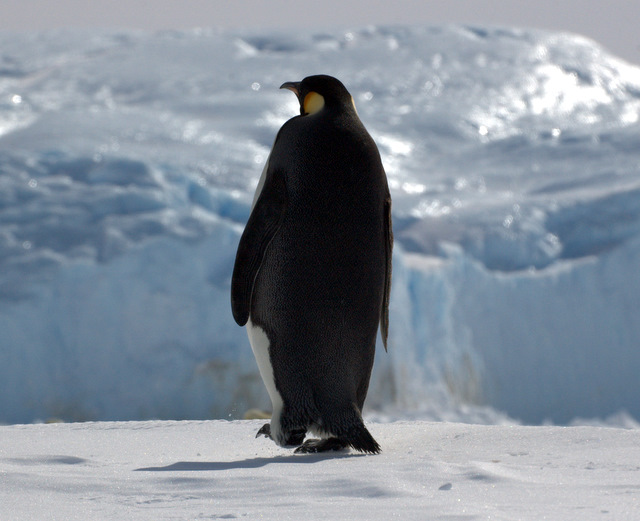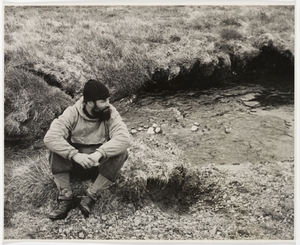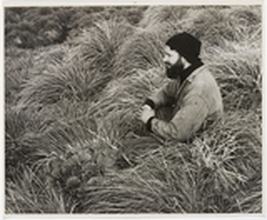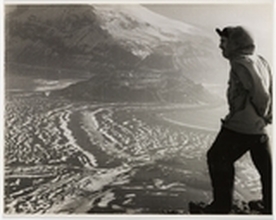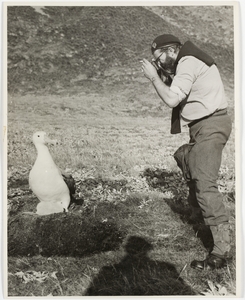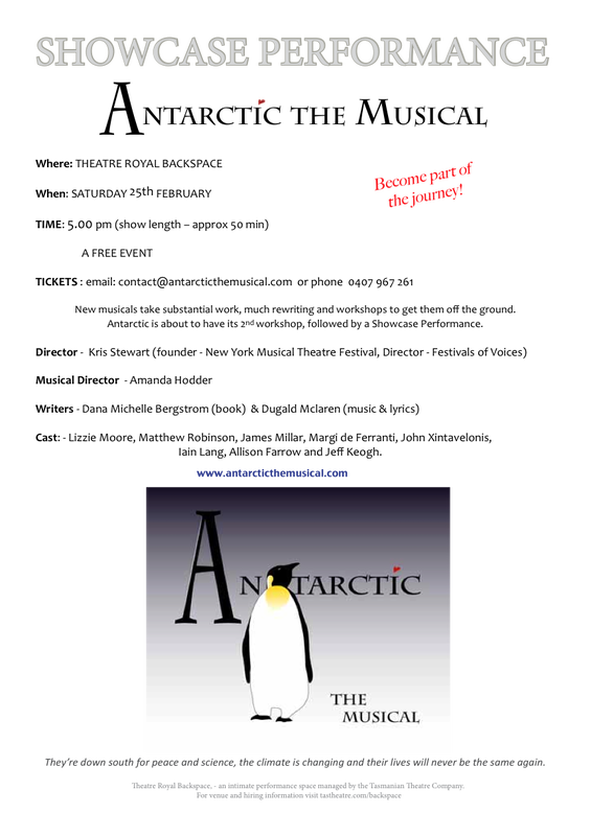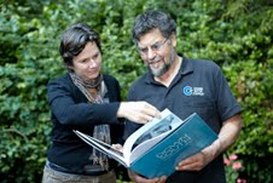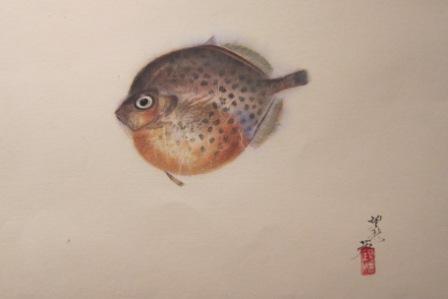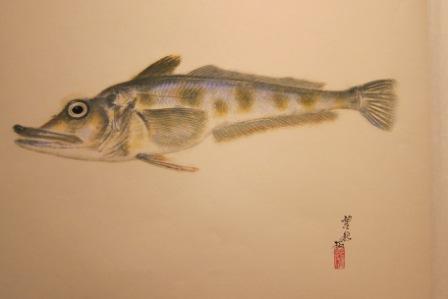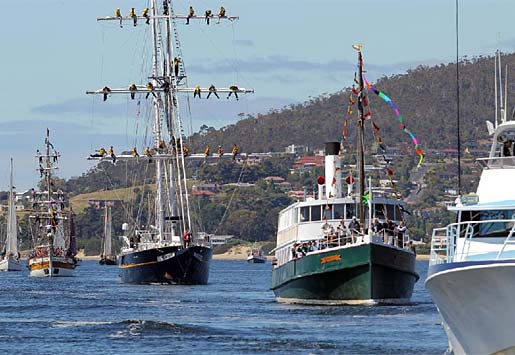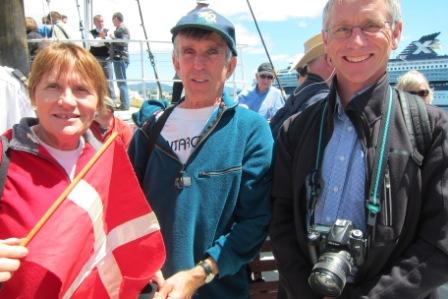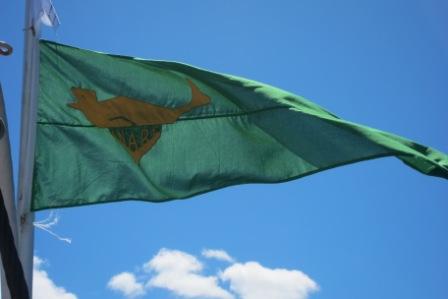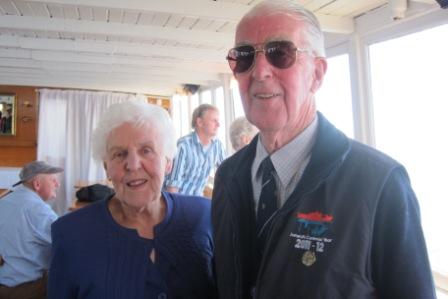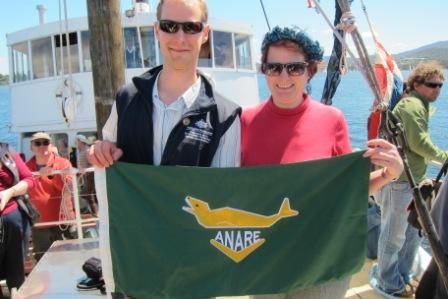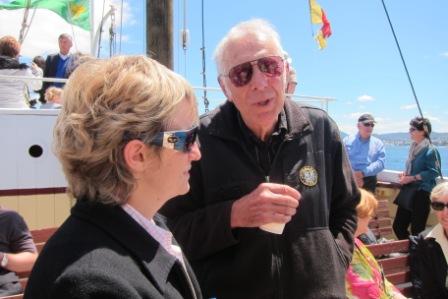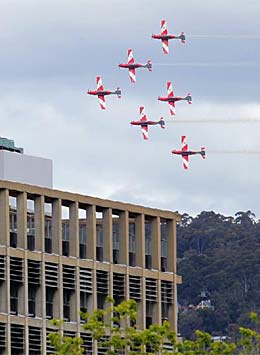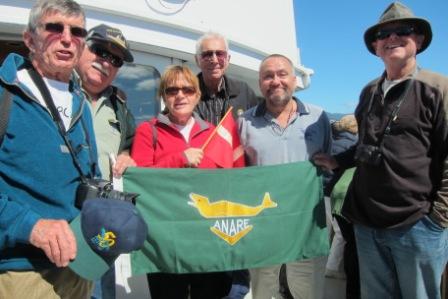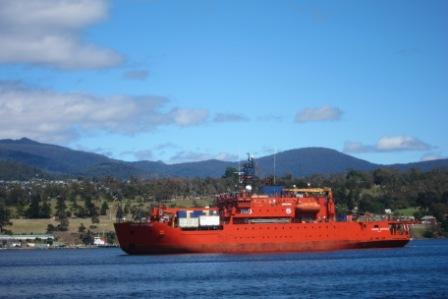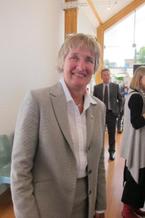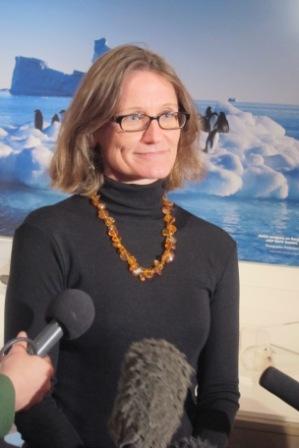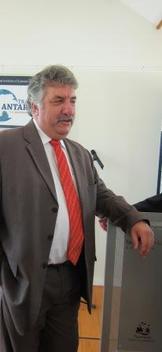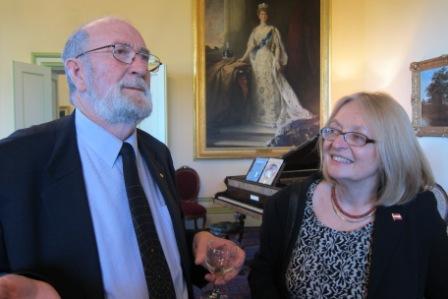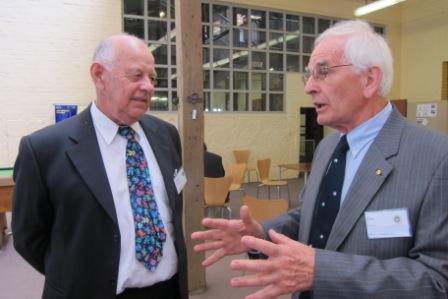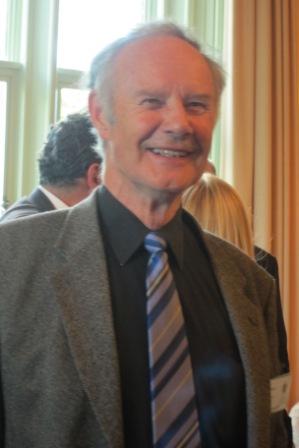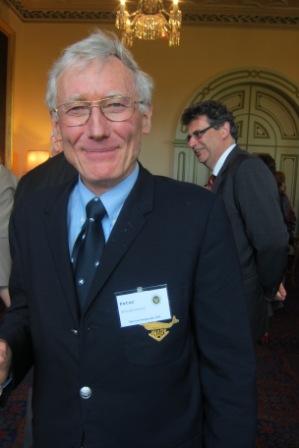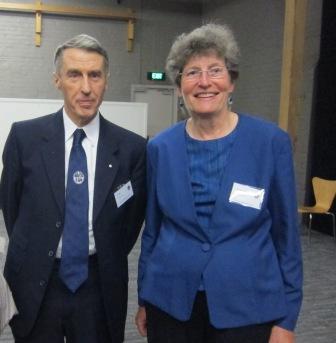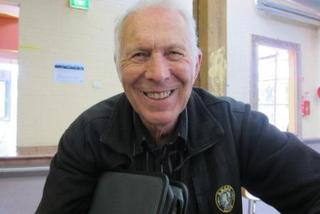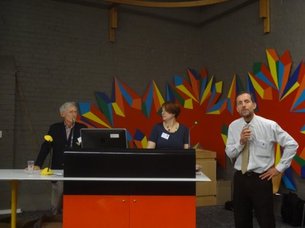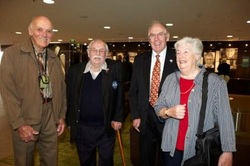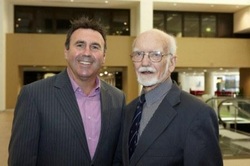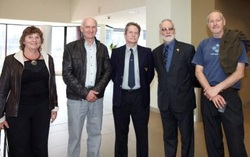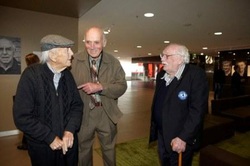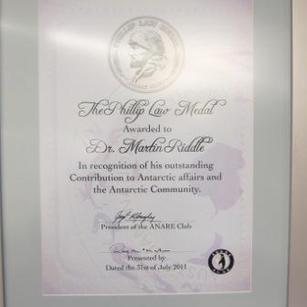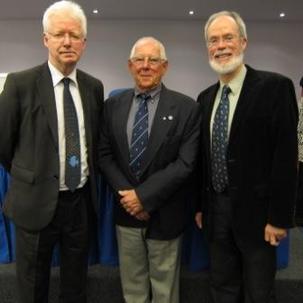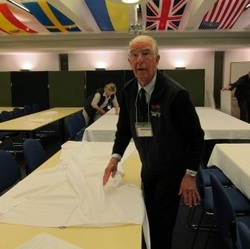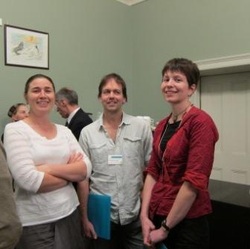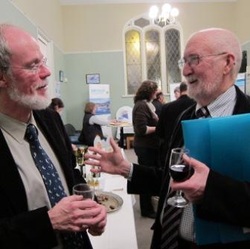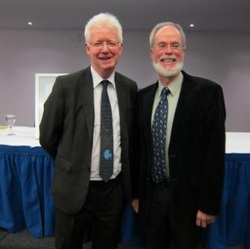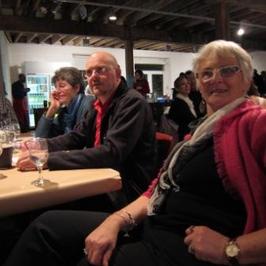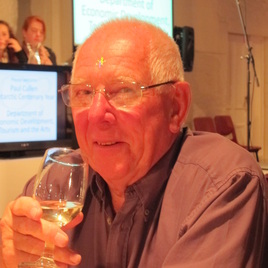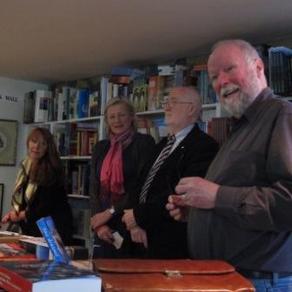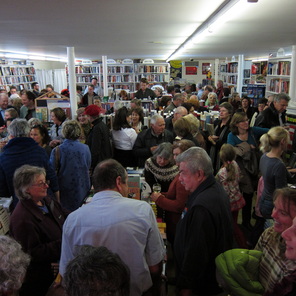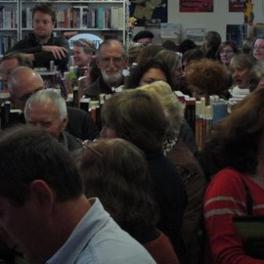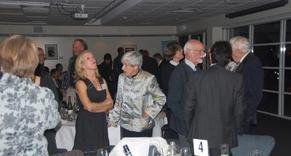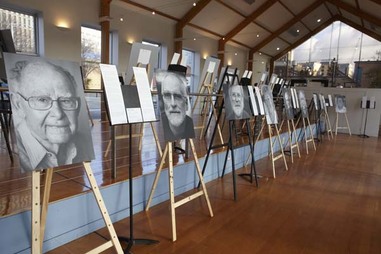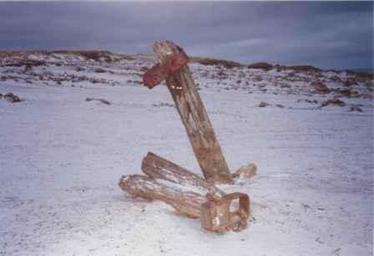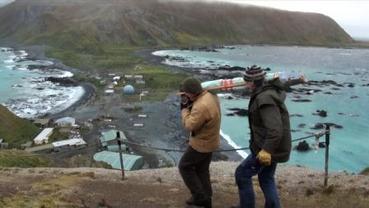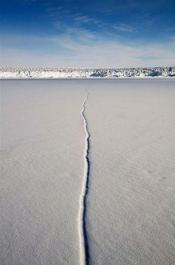|
Latest News
|
Tasmanian midwinter 2012 bookings open!!

Bookings for the Tasmanian Midwinter Dinner have now opened. Numbers are limited to 150 so please consider booking early.
Over 120 people have already booked for the Tas MWD as of 20th March 2012. Further details can be accessed here... Any enquires or reunion information should be directed to Michael Ooyendyk at: Melbourne Midwinter Dinner Information
Bookings are NOW open for Melbourne Midwinter dinner. This year we are limited to 150 at the Bayview Eden, so please get your booking in EARLY. Dinner bookings (drinks inclusive) are $90 before 10th June and $95 after 10th June. See http://www.anareclub.org.au/local/melbourne/melbourne.htm for Information. This is a members only event, so please ensure your membership is financial. Subs may be paid with bookings. A booking form can be found at http://www.anareclub.org.au/local/melbourne/melbbooking.htm If you are registered for online membership, then online bookings can be made. Please check http://www.anareclub.org.au/local/melbourne/melbournemidwinterattendees.html to confirm your booking has been processed and for a list of those attending. Info supplied by Denise Allen, national social secretary posted 23/3/2012 4th Antarctica Art and Culture International Conference & Festival
When: 5-9 September 2012. Where: Universidad Nacional de Tres Febrero, Buenos Aires Call for Art exhibits and Papers Following the fourth artistic research expedition to Antarctica, initiated by The Art and Cultural Program of the National Antarctic Direction (DNA), this event is convened to present results from the expedition and connect these to other art and academic research in the fields of Antarctic arts and culture. Art exhibits and papers that relate to artistic research in Antarcica are welcome. However, the event aims to extend connections between disciplines. Connections with scientific disciplines, are encouraged, as are new approaches to familiar challenges, such as the marine resource and climate change debates. While the primary focus of the conference is Antarctic, papers which combine Antarctic and Arctic material are welcome. For more information click here... The Art and Cultural Program of the National Antarctic Direction (DNA) promotes research into the aesthetic values of the Antarctic environment. The program enables artists to experience Antarctica and to witness scientific research undertaken there. Artists are selected annually to join the Antarctic summer science research program (Between November and March). Results of artists' research are presented in national and international events worldwide. Thanks to Lisa Roberts for providing information. posted 22/3/2012 Photos of Mawson's men in Canberra exhibition Midwinter dinner at Western Base by Frank Hurley.
from the AAD website:
A rare glimpse into the daily lives of the men of the Australasian Antarctic Expedition, led by Sir Douglas Mawson a century ago, is on display in a photographic exhibition at Parliament House in Canberra. The exhibition features photographs taken by some of the original expeditioners Frank Hurley, Xavier Mertz and Frederick Gillies. At the opening, Environment Minister Tony Burke said the exhibition showcases the lives of the 32 men who lived in Antarctica and on Macquarie Island as part of the Expedition... Mawson’s Huts at Commonwealth Bay, where the crew stayed, is also showcased in the exhibition through photo essays from cameramen Peter Curtis and Dean Lewins who visited the site as part of the centenary commemorations held earlier this year. The exhibition, curated by the Australian Antarctic Division, will be displayed in the Presiding Officers’ Exhibition Area, Parliament House, until 26 April. More information: Mawson's Men exhibition. posted 20/3/2012 ANARE CLUB rep returns
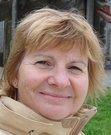
Denise Allen, the 2012 ANARE Club rep, has returned from her voyage to Mawson. Amongst Denise's 'duties' were promotion of the ANARE Club including discussing relevance of the ANARE Club to current expeditioners, sales of ANARE merchandise and general observation/ communication of current ANARE practice. Denise's blog was hosted by the ANARE Club NSW branch and can be accessed here. The blog is great reading and includes a range of photos from Mawson and the 'Aurora Australis'.
Denise also took the opportunity to interview a number of expeditioners on board for the ANARE Club oral history project. These included: Theo Davies, David Morrison, Glen Sherell, Dave McCormack and Graham Mills. Many thanks to the AAD for providing the berth to the Club. posted 20/3/2012. Emp penguin doco underway... Emperor penguins. M.Passingham
Fred Olivier and Marty Passingham are at Dumont d'Urville Station (Antarctica) under contract to a production company to shoot footage of Emperor penguins and their life cycle over winter. This footage will be used in a documentary (3x 1 hour per week) and shown on the BBC next year. The documentary will focus on the life of 3 different penguin species, the Humbolt penguin, the Rock Hopper and the Emperor penguin.
The production company, John Downer Productions, specialises in "Spy" style documentaries, most recent was "Spy in the Den" which followed the Polar Bear and their cubs in the Arctic. This series named "Spy In The Huddle" will use the trademark hidden and robotic cameras for the documentary making. It removes the human from the proximity of the animals and can reveal a new dimension in their habits and interactions. They will endeavour to capture the unique reproduction cycle of the Emperor penguin with views of the huddle taken in close proximity with remotely triggered cameras and small robot cameras. Dumont d"Urville Station is located on an Island just of the coast of the Antarctic continent and is abundant with many Antarctic species of birds during the summer. Winter is usually a time where most of Antarctica is vacated for a warmer environment but this is the period which the Emperor penguin chooses to begin its amazing reproduction cycle. Just behind the Dumont d"Urville Station is the site of the Emperor penguin rookery in winter and will also become home for Fred and Marty this year. posted 13/3/2012 Info wanted on photos....
Michael Ooyendyk recently noticed a set of Antarctic and subAntarctic images in the Discover Collections section of the NSW State Library's website. The majority are of the early days on Macquarie Island and Mawson, but little detail other than a brief caption is available for the majority of the photos. Hence the appeal for help. We plan to circulate several pictures in the next few newsletters in the hope that someone can provide further information that we can pass onto the State Library and update the newsletters. Please have a look, and if you have any information email us. We are particularly interested in the identity of the people pictured, as well as the photographer. (I wonder whether that is Stephen Csordas in the last photo with the wandering albatross...) Photos from Mawson will feature in the next newsletter... posted 13/3/2012
Tim Bowden blog on Amundsen centenary
Tim Bowden has a very interesting blog online detailing the Amundsen story with some great photos, and also links with Tasmania. It can be accessed here....
|
Scott of the Antarctic: Tasmanian Connections

A free public lecture by Pat Quilty and Gillian Winter
Robert Falcon scott, the renowned Antarctic explorer, set foot only briefly on Tasmanian soil in 1901 when he called at Macquarie Island. His links with tasmania are much more substantial than that.
The lecture will include an appreciation of the contributions of Scott and his expedition members to the culture of Antarctica through experiences and literature.
ANARE Club member Prof Pat Quilty AM was Chief Scientist for the Australian Antarctic Division and is now active in studying Antarctic history and its connection with Tasmania.
Gillian winter is a widely published social historian wholes research into British Polar explorers stimulated an interest in Hobart's links with Antarctica.
When: Thursday 29th March at 6pm
Where: Stanley Burbury theatre, Sandy bay Campus, University of Tasmania
Cost: free
RSVP: [email protected] or phone 03 6226 2521
posted 9/3/2012
Robert Falcon scott, the renowned Antarctic explorer, set foot only briefly on Tasmanian soil in 1901 when he called at Macquarie Island. His links with tasmania are much more substantial than that.
The lecture will include an appreciation of the contributions of Scott and his expedition members to the culture of Antarctica through experiences and literature.
ANARE Club member Prof Pat Quilty AM was Chief Scientist for the Australian Antarctic Division and is now active in studying Antarctic history and its connection with Tasmania.
Gillian winter is a widely published social historian wholes research into British Polar explorers stimulated an interest in Hobart's links with Antarctica.
When: Thursday 29th March at 6pm
Where: Stanley Burbury theatre, Sandy bay Campus, University of Tasmania
Cost: free
RSVP: [email protected] or phone 03 6226 2521
posted 9/3/2012
Traversing Antarctica exhibition opening in Canberra
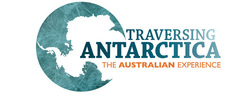
Traversing Antarctica highlights Australia's connection with the Antarctic and has been developed by the National Archives of Australia in partnership with the Australian Antarctic Division and Western Australian Museum, with support from the Tasmanian Museum and Art Gallery and South Australian Museum.
The exhibition includes a rare collection of artifacts that are on display together for the first time, among them are original equipment and diaries used by members of the Australasian Antarctic Expedition. The exhibition is interesting as rather than focus predominantly on Sir Douglas Mawson, there is a real attempt to highlight the contribution of other AAE members. One of the most moving exhibits is Stillwell's diary with the sentence '...still no Mawson...'
The exhibition is opening on 23 March 2012 until 9 September 2012. It will then tour nationally until 2014. The ANARE Club and Pat Quilty were consulted by curator Jane McKnight for expert advice in the development stages of the exhibition (and appreciate being recognised on the exhibition acknowledgements board!) It is pleasing to see a number of large format photographs by ANARE Club member Chris Wilson as well as several hobby items made by ANARE expeditioners in the exhibition.
Where: National Archives of Australia, Queen Victoria Tce, Parkes, ACT
When: from 23rd March 2012
Cost: free
The exhibition includes a rare collection of artifacts that are on display together for the first time, among them are original equipment and diaries used by members of the Australasian Antarctic Expedition. The exhibition is interesting as rather than focus predominantly on Sir Douglas Mawson, there is a real attempt to highlight the contribution of other AAE members. One of the most moving exhibits is Stillwell's diary with the sentence '...still no Mawson...'
The exhibition is opening on 23 March 2012 until 9 September 2012. It will then tour nationally until 2014. The ANARE Club and Pat Quilty were consulted by curator Jane McKnight for expert advice in the development stages of the exhibition (and appreciate being recognised on the exhibition acknowledgements board!) It is pleasing to see a number of large format photographs by ANARE Club member Chris Wilson as well as several hobby items made by ANARE expeditioners in the exhibition.
Where: National Archives of Australia, Queen Victoria Tce, Parkes, ACT
When: from 23rd March 2012
Cost: free
More on the Phil Law stamp...

Bill Burch (W61, RT08) sent the following note...
'...Just a little postscript to the Phil Law stamps –in particular the $1.20 one of Phil wading through deep snow out of a helicopter. It was in Oatesland in February 1962, and we were having a bit of a laugh at Phil’s intrepid antics. We had landed on this mountain ridge ( I think it was the Dwyer Escarpment, not Arthurson Bluff as stated) with two helicopters, and Phil’s instruction had come over the radio we were to sit tight while he checked for crevasses! We reckoned he was keen to try out his new alpine climbing rope, so the next thing we see is Phil scrambling out of the front chopper with his rope tied to the float and clumping through the thick snow towards us. He soon turned back and unloaded his rope. That’s it sitting on the top of the float. At this stage, the pilot of our chopper, John Stanwix, opened his door and snapped Phil coming back to tell us it was all clear and we could get out. The stamp was crafted from John’s photo. The other pilot was John Arthurson who sadly was killed in a helicopter accident in Papua New Guinea some years later...'
Has anyone any additional information on the other stamps they would like to share? If so please contact us.
posted 9/3/12
'...Just a little postscript to the Phil Law stamps –in particular the $1.20 one of Phil wading through deep snow out of a helicopter. It was in Oatesland in February 1962, and we were having a bit of a laugh at Phil’s intrepid antics. We had landed on this mountain ridge ( I think it was the Dwyer Escarpment, not Arthurson Bluff as stated) with two helicopters, and Phil’s instruction had come over the radio we were to sit tight while he checked for crevasses! We reckoned he was keen to try out his new alpine climbing rope, so the next thing we see is Phil scrambling out of the front chopper with his rope tied to the float and clumping through the thick snow towards us. He soon turned back and unloaded his rope. That’s it sitting on the top of the float. At this stage, the pilot of our chopper, John Stanwix, opened his door and snapped Phil coming back to tell us it was all clear and we could get out. The stamp was crafted from John’s photo. The other pilot was John Arthurson who sadly was killed in a helicopter accident in Papua New Guinea some years later...'
Has anyone any additional information on the other stamps they would like to share? If so please contact us.
posted 9/3/12
The Huskies picnic call to arms!
The Huskies Picnic at St David’s Park on Sunday, March 11 could just as well be called the Old Antarctic Hands re-union, as scores of volunteers come forward to help with the husky sledging, the AAD displays and the various Antarctic activities during the day.
Veterans of a dozen expeditions will be there, to explain Antarctic history, describe what it was like in the old days and what’s happening in the future on Australia’s three Antarctic stations. There’s also a contingent from the Mawson’s Huts Foundation, with the latest word on conservancy work at that remote location.
Guided tours, historical talks and an afternoon tea at Hadleys fill out the program.
Proceedings start with a husky run from Elizabeth Street Pier to the GPO at 11:30, then on to St David’s Park for a 12:00 opening. Admission is completely free, courtesy of Antarctic Tasmania and the Hobart City Council.
More information: www.antarcticcentennial.tas.gov.au
The Huskies Picnic at St David’s Park on Sunday, March 11 could just as well be called the Old Antarctic Hands re-union, as scores of volunteers come forward to help with the husky sledging, the AAD displays and the various Antarctic activities during the day.
Veterans of a dozen expeditions will be there, to explain Antarctic history, describe what it was like in the old days and what’s happening in the future on Australia’s three Antarctic stations. There’s also a contingent from the Mawson’s Huts Foundation, with the latest word on conservancy work at that remote location.
Guided tours, historical talks and an afternoon tea at Hadleys fill out the program.
Proceedings start with a husky run from Elizabeth Street Pier to the GPO at 11:30, then on to St David’s Park for a 12:00 opening. Admission is completely free, courtesy of Antarctic Tasmania and the Hobart City Council.
More information: www.antarcticcentennial.tas.gov.au
Giant green Antarctic algae visible from space
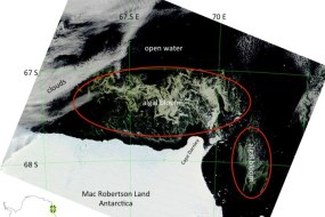
By Brigid Andersen,
ABC News reporter
Updated March 05, 2012
A field of vivid green algae so large it can be seen from space is floating in waters off Antarctica, causing a feeding frenzy.
Images of the bloom, estimated to be around 200 kilometres wide and 100 kilometres long, were captured by Australian scientists monitoring a satellite 650 kilometres above the Earth.
Scientist from the Australian Antarctic Division say they are still not sure exactly what caused the bloom but they predict it will be causing a stir among the local wildlife. Read more...
An article can also be accessed on the AAD website here...
posted 5/2/2012
Oral History Project Update Feb 2012
The equipment made a brief visit to Queensland in December 2011. Five members were interviewed by myself including David Carstens, Neville Collins, Trevior Boyd, John Windolf and Ross Dunlop. At this stage it is planned that the equipment will to Queensland in late June 2012 for the Brisbane Midwinter Dinner.
I also had the opportunity to interview Peter Clemence in Melbourne in January 2012.
Barbara Frankel organized to loan the recording equipment for Aurora Australis Voyage. Barbara and David Ellyard (on board for the AAE centenary berth) interviewed 12 ANARE expeditioners …a big effort in a relatively short period of time. Interviewees included Murray Doyle, David Ellyard, Barbara Frankel, Peter (Elwood) Mantel, Dave Pullinger, Kim Briggs, Steve Rintoul, Lance Cowled, Sue Reynolds, Donna Roberts, Karen Westwood, and Mel van Twes.
Although many of these expeditioners had spent a lot of time ‘down south’ previously, we were particularly keen to capture contemporary accounts.
At this stage the recording equipment will remain on the Aurora Australis for the next few months. Denise Allen, the ANARE Club berth representative and National Council social secretary, is currently on board V4. She will be followed by Brett Free, (National Council Vice President) whom is working for the Australian Antarctic Division in voyage management. This should provide further opportunities to gain interviews with current expeditioners.
Members wishing to borrow the equipment should liaise with Bob Watson, the National Secretary. At this stage it is available for April- May and after July 2012.
If you would like to contribute your recollections of your time ‘down south’ please contact Ingrid McGaughey on 03 6224 8573 or via email. Also we are still looking for people willing and able to transcribe –again, please contact me if interested.
posted 29/2/2012
The equipment made a brief visit to Queensland in December 2011. Five members were interviewed by myself including David Carstens, Neville Collins, Trevior Boyd, John Windolf and Ross Dunlop. At this stage it is planned that the equipment will to Queensland in late June 2012 for the Brisbane Midwinter Dinner.
I also had the opportunity to interview Peter Clemence in Melbourne in January 2012.
Barbara Frankel organized to loan the recording equipment for Aurora Australis Voyage. Barbara and David Ellyard (on board for the AAE centenary berth) interviewed 12 ANARE expeditioners …a big effort in a relatively short period of time. Interviewees included Murray Doyle, David Ellyard, Barbara Frankel, Peter (Elwood) Mantel, Dave Pullinger, Kim Briggs, Steve Rintoul, Lance Cowled, Sue Reynolds, Donna Roberts, Karen Westwood, and Mel van Twes.
Although many of these expeditioners had spent a lot of time ‘down south’ previously, we were particularly keen to capture contemporary accounts.
At this stage the recording equipment will remain on the Aurora Australis for the next few months. Denise Allen, the ANARE Club berth representative and National Council social secretary, is currently on board V4. She will be followed by Brett Free, (National Council Vice President) whom is working for the Australian Antarctic Division in voyage management. This should provide further opportunities to gain interviews with current expeditioners.
Members wishing to borrow the equipment should liaise with Bob Watson, the National Secretary. At this stage it is available for April- May and after July 2012.
If you would like to contribute your recollections of your time ‘down south’ please contact Ingrid McGaughey on 03 6224 8573 or via email. Also we are still looking for people willing and able to transcribe –again, please contact me if interested.
posted 29/2/2012
John Gillies talk on Mawson wireless 1st March Adelaide

The '''Friends of Mawson' are hosting a talk by ANARE Club member and Aurora editor John Gillies on the replica wireless set he strove to create, at 6.30pm 1 March in the Royal Society Rooms. there will also be a tour of the adjoining Mawson Centre which is currently hosting the wireless replica.
When: 1st March 2012, 6.30pm
Where: Royal Society Rooms, Adelaide. See map.
Cost: Gold coin donation, drinks and nibbles.
RSVP: Mark Pharaoh, SA Museum Senior Collections Manager, Mawson & History of Science Collections.
Phone 08 8207 7574 [email protected]
info supplied by Mark Forecast with thanks
posted 29/2/2012
When: 1st March 2012, 6.30pm
Where: Royal Society Rooms, Adelaide. See map.
Cost: Gold coin donation, drinks and nibbles.
RSVP: Mark Pharaoh, SA Museum Senior Collections Manager, Mawson & History of Science Collections.
Phone 08 8207 7574 [email protected]
info supplied by Mark Forecast with thanks
posted 29/2/2012
Phil Law on a stamp
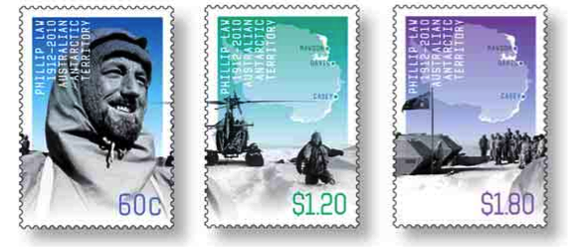
Australia Post will issue 3 stamps on the 6th March 2012 to mark the centenary of there birth of Dr Phillip Garth Law (1912-2010).
Further information detailing the stamp issue and Phil's achievements can be accessed here.
info supplied by Bill Storer and Chompers Currie with thanks
posted 29/02/2012
Further information detailing the stamp issue and Phil's achievements can be accessed here.
info supplied by Bill Storer and Chompers Currie with thanks
posted 29/02/2012
Vale Werner Haymann M74

BBQ Coronation st, Mawson 74.
Local ANARE Club member Werner Haymann died in December 2011 from complications from motor neurone disease.
Werner wintered at Mawson in 1974 as the Senior electrical fitter and mechanic.
Werner wrote an insightful piece for the Mercury newspaper in 2010 expressing his frustration with his speech difficulties. Despite these difficulties he was a regular email communicator and contributed several stories and photos of his time down south to the ANARE Club website.
Werner wintered at Mawson in 1974 as the Senior electrical fitter and mechanic.
Werner wrote an insightful piece for the Mercury newspaper in 2010 expressing his frustration with his speech difficulties. Despite these difficulties he was a regular email communicator and contributed several stories and photos of his time down south to the ANARE Club website.
AAD whale trackers make a rare sighting
Whale observers hit the jackpot recently when they encountered a pod of the rarely seen Shepherd’s beaked whale. Read more on the Australian Antarctic Division website here..
posted 29/2/2012
Whale observers hit the jackpot recently when they encountered a pod of the rarely seen Shepherd’s beaked whale. Read more on the Australian Antarctic Division website here..
posted 29/2/2012
Giant prehistoric penguins revealed

By Christine Dell'Amore
National Geographic News
Published February 27, 2012
Scientists finally have the skinny on two extinct species of giant "svelte" penguins that lived in New Zealand 25 million years ago, a new study says.
For decades, study co-author Ewan Fordyce, a paleontologist at New Zealand's University of Otago, had been happening across bones of the species while searching for fossil whales and dolphins. Only recently, though, has a team reconstructed a full skeleton. This composite—created using a model of a modern-day king penguin—represents both species, which were quite similar. Read more here..
link supplied by Susan Gordon Brown with thanks
posted 29/02/2012
National Geographic News
Published February 27, 2012
Scientists finally have the skinny on two extinct species of giant "svelte" penguins that lived in New Zealand 25 million years ago, a new study says.
For decades, study co-author Ewan Fordyce, a paleontologist at New Zealand's University of Otago, had been happening across bones of the species while searching for fossil whales and dolphins. Only recently, though, has a team reconstructed a full skeleton. This composite—created using a model of a modern-day king penguin—represents both species, which were quite similar. Read more here..
link supplied by Susan Gordon Brown with thanks
posted 29/02/2012
Peter King
Radio operator Peter King (Q48, FIDS Hope Bay 53, RRS John Biscoe 1955, M57, M58, C77, Q79) sends his best wishes to all ANARE folk. Peter celebrated his 90th birthday late last year. While his health is generally good, the trip from Devonport to Hobart is too great for him to manage easily, so he will be unable to make the Tasmanian Midwinter Dinner in Hobart.
If anyone wishes to contact or visit 'Pioneer Pete' personally, and requires contact details, please email Ingrid on
Radio operator Peter King (Q48, FIDS Hope Bay 53, RRS John Biscoe 1955, M57, M58, C77, Q79) sends his best wishes to all ANARE folk. Peter celebrated his 90th birthday late last year. While his health is generally good, the trip from Devonport to Hobart is too great for him to manage easily, so he will be unable to make the Tasmanian Midwinter Dinner in Hobart.
If anyone wishes to contact or visit 'Pioneer Pete' personally, and requires contact details, please email Ingrid on
Antarctic The Musical to debut at Midwinter 2012 Hobart

AN EXTRAORDINARY NEW MUSICAL THAT TAKES YOU ON AN ENTERTAINING JOURNEY TO THE END OF THE EARTH...
'They are down south for peace and science, The climate is changing and their lives will never be the same again'
For more information click here...
Also a free showcase performance..
Where: Theatre Royal, Hobart
When: Saturday 25th February 2012.
Cost: free, but need to book (see flyer below)
updated 19/2/2012 (previously incorrect date for free showcase performance on website...sorry!)
'They are down south for peace and science, The climate is changing and their lives will never be the same again'
For more information click here...
Also a free showcase performance..
Where: Theatre Royal, Hobart
When: Saturday 25th February 2012.
Cost: free, but need to book (see flyer below)
updated 19/2/2012 (previously incorrect date for free showcase performance on website...sorry!)
ANARE Club berth rep updates

Denise Allen was selected to be the 2012 ANARE club berth representative. She is currently on board the Aurora Australis heading for Mawson.
Her daily blogs are being hosted by the ANARE NSW branch website and can be accessed here...
posted 19/02/2012
Her daily blogs are being hosted by the ANARE NSW branch website and can be accessed here...
posted 19/02/2012
HMS Protector's first trip to Antarctica
16 February 2012From Britains Foreign and Commonwealth office websitehttp://www.fco.gov.uk/en/news/latest-news/?view=News&id=731106182
Newly commissioned Royal Navy ice patrol vessel HMS Protector met up with her sister ship, the RRS Ernest Shackleton, in Antarctica recently.The role of the Royal Navy Ice Patrol Ship is to:
16 February 2012From Britains Foreign and Commonwealth office websitehttp://www.fco.gov.uk/en/news/latest-news/?view=News&id=731106182
Newly commissioned Royal Navy ice patrol vessel HMS Protector met up with her sister ship, the RRS Ernest Shackleton, in Antarctica recently.The role of the Royal Navy Ice Patrol Ship is to:
- Conduct hydrographical surveys
- Assist the British Antarctic Survey
- Conduct base inspections to support the Antarctic Treaty
- Patrol for unlicensed fishing and visitors
Co.sonance presents 'The Ice Suite' - MONA 29 March 2012

A multi-media performance commemorating the death of Robert Falcon Scott, performed 100 years to the day after this tragic event.
In the Nolan Room at MONA, Hobart, 8pm, Thursday 29 March 2012.
Special guest support artist Brian Ritchie on Shakuhachi.
Tickets booked through Tasmanian Symphony Orchestra box office website from 1 February 2012 -www.tso.com.au
Limited seating available, please book early. Tickets $66 (plus $3.30 booking fee), at door on night $75.
For more information, visit www.theicesuite.com
posted 16/2/2012
In the Nolan Room at MONA, Hobart, 8pm, Thursday 29 March 2012.
Special guest support artist Brian Ritchie on Shakuhachi.
Tickets booked through Tasmanian Symphony Orchestra box office website from 1 February 2012 -www.tso.com.au
Limited seating available, please book early. Tickets $66 (plus $3.30 booking fee), at door on night $75.
For more information, visit www.theicesuite.com
posted 16/2/2012
Antarctic Science: From Mawson's expedition to today, a symposium at the Shine Dome

Science at the Shine Dome (SATS) is an annual three-day event held by the Australian Academy of Science.
In celebration of the 100th anniversary of the Australasian expedition to Antarctica led by a founding Fellow of the Academy, Sir Douglas Mawson, this years "Science at the Shine Dome" event includes a one-day Symposium exploring the very latest in Antarctic science.
Topics include including climate science, physics, biochemistry, marine biology and more. This event is being organised by ANARE Club member Dr Ian Allison and Dr Trevor McDougall.
The program can be accessed here....
Where: the Shine Dome, Canberra
When: Friday 4 May 2012.
Cost: awaiting further details. The full program and registration information will be available soon on the Academy’s website http://science.org.au/events/index.html
posted 16/2/2012
In celebration of the 100th anniversary of the Australasian expedition to Antarctica led by a founding Fellow of the Academy, Sir Douglas Mawson, this years "Science at the Shine Dome" event includes a one-day Symposium exploring the very latest in Antarctic science.
Topics include including climate science, physics, biochemistry, marine biology and more. This event is being organised by ANARE Club member Dr Ian Allison and Dr Trevor McDougall.
The program can be accessed here....
Where: the Shine Dome, Canberra
When: Friday 4 May 2012.
Cost: awaiting further details. The full program and registration information will be available soon on the Academy’s website http://science.org.au/events/index.html
posted 16/2/2012
The Amundsen Centenary & Huskies Picnic

In March 1912, Roald Amundsen announced, from Hobart, that he had succesfully reached the South Pole. Join us to celebrate this historic event in Hobart City, Sunday 11 March 2012.
11am - Husky sled dogs muster at Elizabeth Street Pier for a run up Elizabeth Street.
11.30am - Re-enactment of Roald Amundsen's 1912 announcement that he had reached the South Pole, on the steps of the Hobart GPO. Special guests Tim Bowden, with commentary by Ric Paterson.
12noon - Husky dogs travel to St David's Park, via Macquarie Street, Murray Street and Davey Street.
12noon - 4pm - family friendly activities in St David's Park, including Antarctic displays, working dogs, children's amusement rides, food and drink, Amundsen walking tours of Hobart, and the Royal Australian Navy Band - Tasmanian Contingent. (Note: please leave your pets at home)
3pm - 5pm - Amundsen High Tea at Hadleys Hotel, featuring a talk by local Hobart polar historian John Williamson. To book, contact Hadleys on 03 6223 4355.
5pm - Free public lecture by Amundsen expert Susan Barr, Hadleys. To reserve your place, please call Hadleys on 03 6223 4355.
Background: In 1911 and 1912, an exciting and dangerous game was played out in Antarctica, when the Norwegian polar explorer Roald Amundsen and the British explorer Robert Falcon Scott raced against each other to be first to reach the geographic South Pole. Scott arrived at the South Pole in January 1912, to find the Norwegian had been there before him. Amundsen won the race by 35 days, using superior skills and equipment adapted from exploring the Northwest Passage in the remote northern wastes of the Arctic Ocean. Amundsen returned to Hobart, Tasmania on March 7, 1912 and anchored his ship Fram in the Derwent River. He ordered his crew to remain aboard while he went ashore first, proceeding directly to the General Post Office to send a telegram to the young King Haakon VII of Norway.
This duty done, he announced to the world that he had won the 'Race to the Pole' and had planted the Norwegian flag there, beating his rival Scott. During the Antarctic Centennial Year, we will re-enact this historic event on the steps of the Hobart GPO, complete with dogs, period clothing and actors in the roles of Amundsen and his crew. The well-known Australian broadcaster Tim Bowden will visit Hobart to mark the event his grandfather was the telegraph clerk who received the message and transmitted it.
Information supplied by Antarctic Centennial Year website with thanks
posted 11/2/2012
Free public lecture on Amundsen March 2012

Amundsen and crew in Hiobart. Source: Nationalbiblioteket
The President of the International Polar Heritage Committee, Susan Barr, will be presenting newly discovered information on Roald Amundsen's extraordinary expedition in a one hour public lecture.
Susan received her pHD in historical archaeology and has worked in Norway in polar history and heritage conservation since 1979. Susan is the founding President on the international monuments and sites polar heritage committee, vice president of the International Arctic science committee, and author f numerous books and articles on polar history.
When: March 11th, 2012. 5-6pm
Where: Hadleys Mecure Hotel, Murray st, Hobart
Cost: free
Bookings essential, please phone Hadleys Mecure Hotel on 03 6223 4355.
Cash bar available.
Susan received her pHD in historical archaeology and has worked in Norway in polar history and heritage conservation since 1979. Susan is the founding President on the international monuments and sites polar heritage committee, vice president of the International Arctic science committee, and author f numerous books and articles on polar history.
When: March 11th, 2012. 5-6pm
Where: Hadleys Mecure Hotel, Murray st, Hobart
Cost: free
Bookings essential, please phone Hadleys Mecure Hotel on 03 6223 4355.
Cash bar available.
Interview with Phil Law 1999 on line

_The Academy established the Interviews with Australian scientists
program in 1993 to record interviews with outstanding Australian
scientists.The scientists talk about their early life, development of
interest in science, mentors, research work, and other aspects of their
careers.
_
The Austalian Academy of Science has published an interview with Phil Law by John Swann (1999) on line. It can be accessed here...
The site also features an interview with marine biologist Isobel Bennett (1909-2008), one of the first women to work on Macquarie Island. Read here..
Transcripts of the interviews and accompanying teachers notes are available online. Copies of the DVDs may be purchased from the Academy for $15 each including GST, postage and handling.
posted 11/2/2012
The Austalian Academy of Science has published an interview with Phil Law by John Swann (1999) on line. It can be accessed here...
The site also features an interview with marine biologist Isobel Bennett (1909-2008), one of the first women to work on Macquarie Island. Read here..
Transcripts of the interviews and accompanying teachers notes are available online. Copies of the DVDs may be purchased from the Academy for $15 each including GST, postage and handling.
posted 11/2/2012
Sunrise TV live broadcast from Antarctica

_By David Knox on February 8, 2012 / Filed Under Programming 11
Channel 7.
Sunrise will attempt a first next week when David Koch co-hosts live from Antarctica.
Kochie will take-off from Hobart live during next Tuesday’s broadcast and fly to Casey Station.
He will then co-host Sunrise on Wednesday, Thursday and Friday from the ice, meeting the locals who live and work there and getting close to the wildlife (cue the “Moves Like Jagger” music?).
“Antarctica is the most extraordinary place on earth,” said Koch. “The millions of penguins… the whales… the extraordinary role Australians play and the incredible work they do there… it is simply mind-blowing.”
Executive Producer Michael Pell said months of planning has gone into the event. Read more...
Thanks to Chompers Currie for the info
posted 11/2/12
Sunrise will attempt a first next week when David Koch co-hosts live from Antarctica.
Kochie will take-off from Hobart live during next Tuesday’s broadcast and fly to Casey Station.
He will then co-host Sunrise on Wednesday, Thursday and Friday from the ice, meeting the locals who live and work there and getting close to the wildlife (cue the “Moves Like Jagger” music?).
“Antarctica is the most extraordinary place on earth,” said Koch. “The millions of penguins… the whales… the extraordinary role Australians play and the incredible work they do there… it is simply mind-blowing.”
Executive Producer Michael Pell said months of planning has gone into the event. Read more...
Thanks to Chompers Currie for the info
posted 11/2/12
Russians drill into previously untouched Lake Vostok below Antarctic glacier: unconfirmed report

Courtesy of NOAA - After drilling for two decades through more than two miles of antarctic ice, Russian scientists are on the verge of entering a vast, dark lake that hasn’t been touched by light for more than 20 million years. Scientists are enormously excited about what life-forms might be found there but are equally worried about contaminating the lake with drilling fluids and bacteria.
From the Washington Post
By Marc Kaufman, Tuesday, February 7, 5:38 AM
Read here for full article...
Russian scientists have drilled into the vast, dark and never-before-touched Lake Vostok 2.2 miles below the surface of Antarctica, the state-run Russian news agency RIA Novosti said Monday.
“Yesterday, our scientists stopped drilling at the depth of 3,768 meters and reached the surface of the subglacial lake,” the news agency quoted a source as saying. The team had “finally managed to pierce” the ice sheet into Vostok, the source said
...It has taken the Russians more than 20 years to drill into the lake, operating in some of the most brutal weather conditions in the world. Their reported accomplishment comes just as the Antarctic summer ends at Vostok and the cold becomes so great that machinery can’t be operated and airplanes can’t come in or go out.
Because reaching the lake has been a high Russian priority in terms of the science and the engineering prowess it would suggest, a formal announcement is anticipated.
The Russian effort has created scientific excitement about potentially learning some of the long-held secrets of the largest subglacial lake in Antarctica, a body of water that wasn’t discovered until the mid-1990s and is the world’s third-largest lake by volume.
The long effort has met with controversy over some of the chemicals and techniques used in the drilling. Many have been concerned that pristine Lake Vostok — which hasn’t felt the wind for more than 20 million years and may well be home to previously unknown life forms — could be contaminated by the kerosene, Freon and other materials used in the drilling.
John Priscu of Montana State University, an Antarctica specialist who has been in periodic contact with the Russian team, said that rumors are flying that the lake was indeed pierced but that no information has been formally announced.
“If they were successful, their efforts will transform the way we do science in Antarctica and provide us with an entirely new view of what exists under the vast Antarctic ice sheet,” he said in an e-mail.
Many scientists see Vostok as not only a last frontier on Earth but also a potential gold mine for learning about possible conditions on Jupiter’s moon Europa or Saturn’s moon Encedadus. Each is covered by a thick shell of ice with liquid water below, warmed by either the inner heat of the moon or by tidal forces.
The United States and Britain will begin drilling later this year into small subglacial Antarctic lakes. Scientists estimate that there are about 200 of these lakes beneath the ice sheet.
The research has importance for not only astrobiology — the search for life beyond Earth — but also for the dynamics of climate change. Antarctica holds about 70 percent of the planet’s fresh water as ice and subglacial liquid, and understanding whether and how it is changing is key to understanding possible future rises in global sea levels.
The Russians’ plan for this year’s Lake Vostok expedition has been to use a thermal drill on the last 30 feet of ice, pierce the lake and draw some of the water a short way up the borehole. The water will then freeze and be extracted late this year.
Russian scientists have been at Lake Vostok for more than 50 years, although they didn’t know they were drilling to a lake for the first 35. The then-Soviet team went to Vostok after the United States set up research facilities at the South Pole, about 900 miles away. The Russians chose the Vostok area because it is close to the “geomagnetic” South Pole, an important site for observing the Earth’s magnetic fields.
By Marc Kaufman, Tuesday, February 7, 5:38 AM
Read here for full article...
“Yesterday, our scientists stopped drilling at the depth of 3,768 meters and reached the surface of the subglacial lake,” the news agency quoted a source as saying. The team had “finally managed to pierce” the ice sheet into Vostok, the source said
...It has taken the Russians more than 20 years to drill into the lake, operating in some of the most brutal weather conditions in the world. Their reported accomplishment comes just as the Antarctic summer ends at Vostok and the cold becomes so great that machinery can’t be operated and airplanes can’t come in or go out.
Because reaching the lake has been a high Russian priority in terms of the science and the engineering prowess it would suggest, a formal announcement is anticipated.
The Russian effort has created scientific excitement about potentially learning some of the long-held secrets of the largest subglacial lake in Antarctica, a body of water that wasn’t discovered until the mid-1990s and is the world’s third-largest lake by volume.
The long effort has met with controversy over some of the chemicals and techniques used in the drilling. Many have been concerned that pristine Lake Vostok — which hasn’t felt the wind for more than 20 million years and may well be home to previously unknown life forms — could be contaminated by the kerosene, Freon and other materials used in the drilling.
John Priscu of Montana State University, an Antarctica specialist who has been in periodic contact with the Russian team, said that rumors are flying that the lake was indeed pierced but that no information has been formally announced.
“If they were successful, their efforts will transform the way we do science in Antarctica and provide us with an entirely new view of what exists under the vast Antarctic ice sheet,” he said in an e-mail.
Many scientists see Vostok as not only a last frontier on Earth but also a potential gold mine for learning about possible conditions on Jupiter’s moon Europa or Saturn’s moon Encedadus. Each is covered by a thick shell of ice with liquid water below, warmed by either the inner heat of the moon or by tidal forces.
The United States and Britain will begin drilling later this year into small subglacial Antarctic lakes. Scientists estimate that there are about 200 of these lakes beneath the ice sheet.
The research has importance for not only astrobiology — the search for life beyond Earth — but also for the dynamics of climate change. Antarctica holds about 70 percent of the planet’s fresh water as ice and subglacial liquid, and understanding whether and how it is changing is key to understanding possible future rises in global sea levels.
The Russians’ plan for this year’s Lake Vostok expedition has been to use a thermal drill on the last 30 feet of ice, pierce the lake and draw some of the water a short way up the borehole. The water will then freeze and be extracted late this year.
Russian scientists have been at Lake Vostok for more than 50 years, although they didn’t know they were drilling to a lake for the first 35. The then-Soviet team went to Vostok after the United States set up research facilities at the South Pole, about 900 miles away. The Russians chose the Vostok area because it is close to the “geomagnetic” South Pole, an important site for observing the Earth’s magnetic fields.
Russians drill into virgin Antarctic lake
EXPERTS have raised questions over the scientific benefit and environmental impact of Russia's feat in drilling into a virgin lake under Antarctica's icesheet.
Kerosene, which the Russians used as antifreeze to prevent the borehole from closing up in the extremely cold depths of the icesheet, was a potential contamination risk for samples and for the pristine lake itself, they said.
Professor Martin Siegert, head of the school of geosciences at the University of Edinburgh, said these concerns marred "a milestone ... a major achievement" by Russia in drilling through to Lake Vostok.
But, he said, "It's very difficult for them to convince (others) that their experiment is going to be clean, when you have essentially two miles (3.5 kilometres) of kerosene to cross before you get to the lake surface."
The lake, lying at a depth of 3768 metres, has lain untouched for possibly a million years, he said. Read more....
- From:AAP, reported by Herald Sun newspaper
- February 07, 2012 8:31AM
EXPERTS have raised questions over the scientific benefit and environmental impact of Russia's feat in drilling into a virgin lake under Antarctica's icesheet.
Kerosene, which the Russians used as antifreeze to prevent the borehole from closing up in the extremely cold depths of the icesheet, was a potential contamination risk for samples and for the pristine lake itself, they said.
Professor Martin Siegert, head of the school of geosciences at the University of Edinburgh, said these concerns marred "a milestone ... a major achievement" by Russia in drilling through to Lake Vostok.
But, he said, "It's very difficult for them to convince (others) that their experiment is going to be clean, when you have essentially two miles (3.5 kilometres) of kerosene to cross before you get to the lake surface."
The lake, lying at a depth of 3768 metres, has lain untouched for possibly a million years, he said. Read more....
Canberra's ENLIGHTEN FESTIVAL
Chill out at the archives and immerse yourself in the sights and sounds of Antarctica in Canberra.
When: 2-3 and 9-12 March 2012
click here for further details, programme of events...
Chill out at the archives and immerse yourself in the sights and sounds of Antarctica in Canberra.
When: 2-3 and 9-12 March 2012
click here for further details, programme of events...
Antarctic inspirations music by Alice Giles

Chill out at the Archives and immerse yourself in the sights and sounds of Antarctica. Internationally acclaimed harpist, Alice Giles, shares her personal journey through music, sound and exquisite imagery. Afterwards wander through the exhibition spaces and experience the Antarctic soundscape of Philip Samartzis combined with stunning archival footage. The vast frozen beauty of Antarctica brought to life.
Venue: National Archives of Australia
Gallery, Queen Victoria Terrace, Parkes ACT 2600 View map
Dates and times:
Friday 9 March 20127:00 PM - 9:00 PM
Saturday 10 March 20127:00 PM - 9:00 PM
Cost: $50pp adult, $45pp concession Book here...
Drinks & canapés included
Venue: National Archives of Australia
Gallery, Queen Victoria Terrace, Parkes ACT 2600 View map
Dates and times:
Friday 9 March 20127:00 PM - 9:00 PM
Saturday 10 March 20127:00 PM - 9:00 PM
Cost: $50pp adult, $45pp concession Book here...
Drinks & canapés included
Antarctic Soundscape
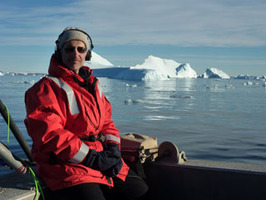
Be transported to the beautiful and stark wonder of Antarctica by the soundscape of Philip Samartzis. Recorded at Davis Station during his Antarctic arts fellowships, the eerie sounds of Antarctica flow around as archival footage and stills from the Archives collection appear. Experience the guttural snorts of a group of elephant seals and the sounds of ice sheets stretched by the relentless tides. As heard at the 2011 Tasmanian Midwinter dinner!!
Venue:
National Archives of Australia,
Gallery 2
Queen Victoria Terrace, Parkes ACT 2600 View map
Dates and times:
Friday 9 March 20126:30 PM - 10:00 PM
Saturday 10 March 20126:30 PM - 10:00 PM
Cost: Free
Venue:
National Archives of Australia,
Gallery 2
Queen Victoria Terrace, Parkes ACT 2600 View map
Dates and times:
Friday 9 March 20126:30 PM - 10:00 PM
Saturday 10 March 20126:30 PM - 10:00 PM
Cost: Free
Down South – Aust tradies in Antarctica Exhibition in Canberra

Fred Elliott by Susan Gordon Brown.
Down South – Australian tradies in Antarctica is a photographic exhibition which tells the stories of the intrepid and skilled tradespeople who have ventured to the Antarctic from 1947 to the 1980s. Susan Gordon-Brown, the photographer, interviewed 25 tradespeople and photographed them as they are now. The exhibition combines these portraits and their stories, as written by Gayl O’Connor.
Dates:
Friday 9 March 2012 6:30 PM - 10:00 PM
Saturday 10 March 2012 6:30 PM - 10:00 PM
Venue: National Archives of Australia Gallery
Queen Victoria Terrace, Parkes ACT 2600 View map
Cost: Free
Dates:
Friday 9 March 2012 6:30 PM - 10:00 PM
Saturday 10 March 2012 6:30 PM - 10:00 PM
Venue: National Archives of Australia Gallery
Queen Victoria Terrace, Parkes ACT 2600 View map
Cost: Free
Australia's use of the Basler planes 'down south'
An interesting report by the ABC's Karen Barlow with video footage can be accessed here...
An interesting report by the ABC's Karen Barlow with video footage can be accessed here...
'Lost world' discovered on Antarctic sea floor

Yeti Crab.
Tuesday, 10 January 2012
Article from Agence France-Presse, cosmos magazine website
A seven-pronged starfish, a mysterious pale octopus and a new kind of yeti crab are among a teeming community of previously undiscovered life on the sea floor near Antarctica.
The species, described in the online journal PloS Biology, were first glimpsed in 2010 when researchers lowered a robotic vehicle to explore the East Scotia Ridge deep beneath the Southern Ocean, between Antarctica and the tip of South America.
The dark and remote area is home to hydrothermal vents, which are deep-sea springs that spew liquid at temperatures of up to 382 degrees Celsius, and have previously been found to host unusual life forms in other parts of the world.
"Hydrothermal vents are home to animals found nowhere else on the planet that get their energy not from the Sun but from breaking down chemicals, such as hydrogen sulphide," said lead researcher Alex Rogers of Oxford University in England. "The first survey of these particular vents, in the Southern Ocean near Antarctica, has revealed a hot, dark, 'lost world' in which whole communities of previously unknown marine organisms thrive."
Read more here..
Article from Agence France-Presse, cosmos magazine website
A seven-pronged starfish, a mysterious pale octopus and a new kind of yeti crab are among a teeming community of previously undiscovered life on the sea floor near Antarctica.
The species, described in the online journal PloS Biology, were first glimpsed in 2010 when researchers lowered a robotic vehicle to explore the East Scotia Ridge deep beneath the Southern Ocean, between Antarctica and the tip of South America.
The dark and remote area is home to hydrothermal vents, which are deep-sea springs that spew liquid at temperatures of up to 382 degrees Celsius, and have previously been found to host unusual life forms in other parts of the world.
"Hydrothermal vents are home to animals found nowhere else on the planet that get their energy not from the Sun but from breaking down chemicals, such as hydrogen sulphide," said lead researcher Alex Rogers of Oxford University in England. "The first survey of these particular vents, in the Southern Ocean near Antarctica, has revealed a hot, dark, 'lost world' in which whole communities of previously unknown marine organisms thrive."
Read more here..
Jon Stephenson awarded member Order of Aust.
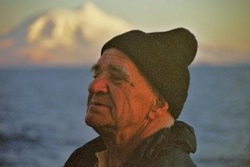
Jon Stephenson at Heard Island in 2002
_ANARE Club member, Dr Jon Stephenson, was awarded a Member (AM) in the
General Division of the Order of Australia on Australia Day 'for service to the earth sciences as an academic, to the Australian
National Antarctic Research Expeditions organisation, and to
environmental and resource management'
Dr Stephenson, a geologist, who died in May last year, was a member of the 1963 expedition to Heard Island, where he and two companions attempted to climb Big Ben, the glaciated active volcano that dominates the island. Throughout the journey Dr Stephenson collected rocks for later studies of their age, petrology and palaeomagneticsm, substantially extending the knowledge of the island's geology. In recognition of this contribution, Stephenon Glacier and Stephenson Lagoon, on Heard Island, were named for him.
Dr Stephenson was the only Australian appointed to the first Commonwealth Trans-Antarctic Expedtion (1956-1958) alongside explorers such as Sir Vivian Fuchs and Sir Edmund Hillary. He became the first Australian to reach the South Pole in 1958.
His academic achievements included establishing the Department of Earth Sciences at James Cook University in 1961, where he was Dean, Faculty of Science, from 1977-1980.
adapted from AAD website 30/1/2012
Recent tributes to Jon Stephenson can be accessed here....
Dr Stephenson, a geologist, who died in May last year, was a member of the 1963 expedition to Heard Island, where he and two companions attempted to climb Big Ben, the glaciated active volcano that dominates the island. Throughout the journey Dr Stephenson collected rocks for later studies of their age, petrology and palaeomagneticsm, substantially extending the knowledge of the island's geology. In recognition of this contribution, Stephenon Glacier and Stephenson Lagoon, on Heard Island, were named for him.
Dr Stephenson was the only Australian appointed to the first Commonwealth Trans-Antarctic Expedtion (1956-1958) alongside explorers such as Sir Vivian Fuchs and Sir Edmund Hillary. He became the first Australian to reach the South Pole in 1958.
His academic achievements included establishing the Department of Earth Sciences at James Cook University in 1961, where he was Dean, Faculty of Science, from 1977-1980.
adapted from AAD website 30/1/2012
Recent tributes to Jon Stephenson can be accessed here....
Polar Heritage Committee conference, Hobart March 2012
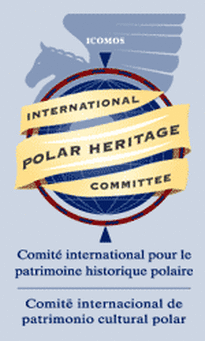
_Conservation Challenges, Solutions and Collaboration Opportunities in Uncontrolled Environments
The ICOMOS International Polar Heritage Committee is holding an open conference in Hobart, Australia in March 2012.
The conference is timed to coincide with a series of commemorative events in Hobart to mark the centenary of Roald Amundsen’s return to Hobart after the attainment of the South Pole.
Programme detail (November 2011)
Notice and preliminary programme
REGISTER HERE
The ICOMOS International Polar Heritage Committee is holding an open conference in Hobart, Australia in March 2012.
The conference is timed to coincide with a series of commemorative events in Hobart to mark the centenary of Roald Amundsen’s return to Hobart after the attainment of the South Pole.
Programme detail (November 2011)
Notice and preliminary programme
REGISTER HERE
AAE scientific publications: an online exhibition by the NSW state records...

_The Australasian Antarctic Expedition 1911-14 provided the world
with more than a truly heroic tale of survival against the odds. It
left the legacy of a vast collection of valuable scientific data and
specimens in the areas of geology, cartology, biology, meteorology and
geo magnetism.
Publishing the Expedition In 1920 Sir Douglas Mawson entered into an agreement with the New South Wales State Government to publish these records. The project was not completed until 1947 – 28 years after the initial agreement was signed and 33 years after Mawson’s return.
To celebrate this historic milestone of exploration and scientific endeavour we are shining a spotlight on the somewhat heroic efforts of both Sir Douglas Mawson and the committee in charge of the printing of the voluminous scientific reports resulting from this groundbreaking expedition.
Read more here....
posted 30.01.2012
Publishing the Expedition In 1920 Sir Douglas Mawson entered into an agreement with the New South Wales State Government to publish these records. The project was not completed until 1947 – 28 years after the initial agreement was signed and 33 years after Mawson’s return.
To celebrate this historic milestone of exploration and scientific endeavour we are shining a spotlight on the somewhat heroic efforts of both Sir Douglas Mawson and the committee in charge of the printing of the voluminous scientific reports resulting from this groundbreaking expedition.
Read more here....
posted 30.01.2012
Sydney busker sketches AAE panorama
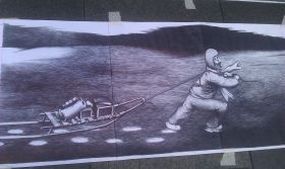
_James Kite is celebrating 100 years of Australian Antarctic Expeditions by way of a
panorama drawn in pen while busking on the streets of the Sydney CBD.
The panorama (No 20 in a series) depicts Sir Douglas Mawson and the ill fated Australasian Antarctic Expedition. See Youtube .
The following locations are where you might find James busking (times are approximate and may vary depending on several factors including availability)…
Martin Place (fountain): 11:30am-2:00pm weekdays
Pitt Street Mall: 2:30pm or so weekdays, or 11:30am-2:00pm weekends.
The Queen Victoria Building: 12:00pm-5:00pm weekdays.
Event Cinema (George Street): 5:00pm-10:00pm Thursday and weekends.
The panorama (No 20 in a series) depicts Sir Douglas Mawson and the ill fated Australasian Antarctic Expedition. See Youtube .
The following locations are where you might find James busking (times are approximate and may vary depending on several factors including availability)…
Martin Place (fountain): 11:30am-2:00pm weekdays
Pitt Street Mall: 2:30pm or so weekdays, or 11:30am-2:00pm weekends.
The Queen Victoria Building: 12:00pm-5:00pm weekdays.
Event Cinema (George Street): 5:00pm-10:00pm Thursday and weekends.
Masters of Photography: Frank Hurley

There is also a selection of Frank Hurley's Antarctic photographs on Youtube here...
_AusGeo News December 2011 Issue No. 104

_
Three articles on Antarctica feature in AusGeo News 104 monthly magazine.
Cape Denison was selected by Mawson as the location for his main expedition base. Our article describes the area's landforms and geology and includes the most recent age determinations for the main rock types. The current reconstructions of the ancient supercontinent Gondwana place this area adjacent to the coast of South Australia prior to rifting and the dismemberment of Gondwana. More | Download PDF
There is also an article on the investigation of the impact on marine ecosystems of the break-up of the Mertz Glacier ice shelf following a collision with a massive iceberg in February 2010. The region is one of the 'biological hotspots' of the Antarctic and Southern Ocean ecosystem and was the focus of a joint survey in collaboration with the Australian Antarctic Division. The survey will help answer some key questions relating to ocean acidification and change in marine ecosystems as well as the protection of marine biodiversity. More | Download PDF
Virtual globes have increased in popularity since the first online offerings in 2004–05. Our article outlines the development of Geoscience Australia's 3D Data Viewer and its increasing use to provide stakeholders with access to a growing number of the agency's national and regional datasets. More | Download PDF
posted 17/01/12
Three articles on Antarctica feature in AusGeo News 104 monthly magazine.
Cape Denison was selected by Mawson as the location for his main expedition base. Our article describes the area's landforms and geology and includes the most recent age determinations for the main rock types. The current reconstructions of the ancient supercontinent Gondwana place this area adjacent to the coast of South Australia prior to rifting and the dismemberment of Gondwana. More | Download PDF
There is also an article on the investigation of the impact on marine ecosystems of the break-up of the Mertz Glacier ice shelf following a collision with a massive iceberg in February 2010. The region is one of the 'biological hotspots' of the Antarctic and Southern Ocean ecosystem and was the focus of a joint survey in collaboration with the Australian Antarctic Division. The survey will help answer some key questions relating to ocean acidification and change in marine ecosystems as well as the protection of marine biodiversity. More | Download PDF
Virtual globes have increased in popularity since the first online offerings in 2004–05. Our article outlines the development of Geoscience Australia's 3D Data Viewer and its increasing use to provide stakeholders with access to a growing number of the agency's national and regional datasets. More | Download PDF
posted 17/01/12
_
ABC Radio 612 Brisbane
Mawson Centenary - interviewing Robb Clifton (voyage leader)
16 January 2012 , 8:50 PM by Peter Gooch
Centenary commemorations for the first ever Australasian Antarctic expedition have been held at Commonwealth Bay in Antarctica. The event to mark Sir Douglas Mawson and his team's landing on the icy continent had been delayed by several days due to bad weather.
An Antarctic fog finally lifted this morning, allowing the last of a small commemoration party to fly in by helicopter to the historic site. A message was read out from Prime Minister Julia Gillard expressing Australia's immense and lasting gratitude. A time capsule was then laid in the ground and a plaque unveiled. Voyage leader of Australia's Antarctic research ship Aurora Australis, Robb Clifton, was one of those in attendance at today's centenary event at Commonwealth Bay and he joined us via Satphone....
Download the audio file
ABC Radio 612 Brisbane
Mawson Centenary - interviewing Robb Clifton (voyage leader)
16 January 2012 , 8:50 PM by Peter Gooch
Centenary commemorations for the first ever Australasian Antarctic expedition have been held at Commonwealth Bay in Antarctica. The event to mark Sir Douglas Mawson and his team's landing on the icy continent had been delayed by several days due to bad weather.
An Antarctic fog finally lifted this morning, allowing the last of a small commemoration party to fly in by helicopter to the historic site. A message was read out from Prime Minister Julia Gillard expressing Australia's immense and lasting gratitude. A time capsule was then laid in the ground and a plaque unveiled. Voyage leader of Australia's Antarctic research ship Aurora Australis, Robb Clifton, was one of those in attendance at today's centenary event at Commonwealth Bay and he joined us via Satphone....
Download the audio file
_
MAWSON'S LANDING MARKED IN ANTARCTIC CEREMONYBy Karen Barlow at Mawson's Huts, ABCJanuary 16, 2012, 10:34 am
Centenary commemorations for the first ever Australasian Antarctic expedition have been held at Commonwealth Bay in Antarctica.
The event to mark Sir Douglas Mawson and his team's landing on the icy continent had been delayed by several days due to bad weather. An Antarctic fog finally lifted this morning, allowing the last of a small commemoration party to fly in by helicopter to the historic site.
Australian Antarctic Division director Tony Fleming officiated, making a speech praising the Australian flavour and scientific legacy of the Mawson expedition. He said the Mawson men should not be forgotten and that they have left the legacy of an entire continent devoted to peace and science.
A message was read out from Prime Minister Julia Gillard expressing Australia's immense and lasting gratitude. A time capsule was then laid in the ground and a plaque unveiled.
Antarctic historian Tom Griffiths says the landing at Commonwealth Bay in 1912 was as significant an act for a young nation as the landing at Gallipoli.
posted 17/01/2012
MAWSON'S LANDING MARKED IN ANTARCTIC CEREMONYBy Karen Barlow at Mawson's Huts, ABCJanuary 16, 2012, 10:34 am
Centenary commemorations for the first ever Australasian Antarctic expedition have been held at Commonwealth Bay in Antarctica.
The event to mark Sir Douglas Mawson and his team's landing on the icy continent had been delayed by several days due to bad weather. An Antarctic fog finally lifted this morning, allowing the last of a small commemoration party to fly in by helicopter to the historic site.
Australian Antarctic Division director Tony Fleming officiated, making a speech praising the Australian flavour and scientific legacy of the Mawson expedition. He said the Mawson men should not be forgotten and that they have left the legacy of an entire continent devoted to peace and science.
A message was read out from Prime Minister Julia Gillard expressing Australia's immense and lasting gratitude. A time capsule was then laid in the ground and a plaque unveiled.
Antarctic historian Tom Griffiths says the landing at Commonwealth Bay in 1912 was as significant an act for a young nation as the landing at Gallipoli.
posted 17/01/2012
_AAE Centenary berth rep blog on line
David Ellyard, the ANARE Club member chosen for the AAE Centenary voyage berth, is currently anchored off Commonwealth Bay. His blog is being hosted by the ANARE Club NSW website, and make for very interesting and enjoyable reading. Click here to access...
And special thanks to Phil Silvestro for getting the blog up and running...it looks fantastic!
David Ellyard, the ANARE Club member chosen for the AAE Centenary voyage berth, is currently anchored off Commonwealth Bay. His blog is being hosted by the ANARE Club NSW website, and make for very interesting and enjoyable reading. Click here to access...
And special thanks to Phil Silvestro for getting the blog up and running...it looks fantastic!
- In Mawson’s footsteps: Other Commonwealth Bay blogs
ABC’s Karen Barlow
Historian Tom Griffiths
David Ellyard (ANARE Club)
_Aurora Australis breaks the ice on Mawson celebration
by reporter Lloyd Jones, The Age Newspaper, 13th January 2012.
ONE hundred years after explorer Douglas Mawson spent his first night ashore at Commonwealth Bay in the Antarctic, an icebreaker is set to land another party there to honour him and his men.
Yesterday the Aurora Australis was working its way through penguin-inhabited ice-floes towards the bay, where a massive iceberg called B9B has been preventing sea-ice from escaping. It has also prevented tourist vessels from approaching and landing passengers to commemorate the centenary of Mawson's Australasian Antarctic Expedition.
The commemorative party will fly in by helicopter for the planned centenary service today, Antarctic weather permitting.
On the night of January 12, 1912, Mawson and a few men went ashore from the steam yacht Aurora and slept in tents at Cape Denison, enduring the icy winds roaring down on them from the polar plateau...
Read more: http://www.theage.com.au/national/aurora-australis-breaks-the-ice-on-mawson-celebration-20120112-1pxl9.html#ixzz1jIGpYV6Q
posted 13/01/2011
_
by reporter Lloyd Jones, The Age Newspaper, 13th January 2012.
ONE hundred years after explorer Douglas Mawson spent his first night ashore at Commonwealth Bay in the Antarctic, an icebreaker is set to land another party there to honour him and his men.
Yesterday the Aurora Australis was working its way through penguin-inhabited ice-floes towards the bay, where a massive iceberg called B9B has been preventing sea-ice from escaping. It has also prevented tourist vessels from approaching and landing passengers to commemorate the centenary of Mawson's Australasian Antarctic Expedition.
The commemorative party will fly in by helicopter for the planned centenary service today, Antarctic weather permitting.
On the night of January 12, 1912, Mawson and a few men went ashore from the steam yacht Aurora and slept in tents at Cape Denison, enduring the icy winds roaring down on them from the polar plateau...
Read more: http://www.theage.com.au/national/aurora-australis-breaks-the-ice-on-mawson-celebration-20120112-1pxl9.html#ixzz1jIGpYV6Q
posted 13/01/2011
_
_
'DOWN SOUTH" Book Expressions of Interest....
Susan Gordon-Brown’s exhibition Down South: Australian tradies in Antarctica has now been exhibited in Tasmania and Victoria and will be in Queensland May 2012 at the Brisbane Powerhouse Arts Centre. It will then be touring regional Victoria from June 2012. We have had excellent attendance, not only from ANARE people and their families, but also great interest from the general public.
The souvenir postcard sets have been available at all the exhibitions and directly from Susan ( [email protected] ) and will be available at future exhibitions for $13 plus P&P.
A coffee table book of the exhibition is being developed and we are calling on expressions of interest in purchasing the book. A foreword has been written by Fred Elliott and preface by Susan Gordon-Brown. A sample copy of the book is shown in the photograph with this article. The book is 12x12 inches with hard cover, 60 pages, high quality paper and excellent photographic reproduction.
We estimate the book will be $68 plus P&P. This is an estimate only as we need to have numbers to firm up the price. Anyone interested please contact Brian Harvey on 03 95557057 or 0417 374464 by mid February so we can finalise arrangements for printing.
'DOWN SOUTH" Book Expressions of Interest....
Susan Gordon-Brown’s exhibition Down South: Australian tradies in Antarctica has now been exhibited in Tasmania and Victoria and will be in Queensland May 2012 at the Brisbane Powerhouse Arts Centre. It will then be touring regional Victoria from June 2012. We have had excellent attendance, not only from ANARE people and their families, but also great interest from the general public.
The souvenir postcard sets have been available at all the exhibitions and directly from Susan ( [email protected] ) and will be available at future exhibitions for $13 plus P&P.
A coffee table book of the exhibition is being developed and we are calling on expressions of interest in purchasing the book. A foreword has been written by Fred Elliott and preface by Susan Gordon-Brown. A sample copy of the book is shown in the photograph with this article. The book is 12x12 inches with hard cover, 60 pages, high quality paper and excellent photographic reproduction.
We estimate the book will be $68 plus P&P. This is an estimate only as we need to have numbers to firm up the price. Anyone interested please contact Brian Harvey on 03 95557057 or 0417 374464 by mid February so we can finalise arrangements for printing.
Aussie adventurers in Antarctica
In 100 years of polar exploration no-one has EVER walked from the edge of Antarctica to the South Pole and back without assistance. Many have tried, none have succeeded. Right now, two Aussie Adventurers are attempting to achieve the impossible…
or the next three months and over 2200km Cas and Jonsey will drag 160kg sleds with everything they need to survive in the harshest environment on Earth.
Cas and Jonesy are using this expedition to raise much needed funds and awareness for ‘You Can‘; a national fundraising campaign to build specialised youth cancer centres across Australia.
They’ve already Crossed the Ditch – paddling 3318km without assistance for a world first. This expedition is called Crossing the Ice – you can be a part of it and follow their adventures here.
Facts about Crossing the Ice:
- This will be the first EVER unsupported return journey to the South Pole.
- The summer of 2011/12 will mark the 100 year anniversary of Scott and Amundsen.
- Cas and Jonesy will be the youngest team to ever reach the South Pole.
- Previous attempts: Jon Muir, Peter Hillary and Eric Phillips attempted the return journey in 1998. They reached the South Pole after 84 days on the ice and didn’t complete the return. Kiwi adventurers: Kevin Biggar and Jamie Fitzgerald also attempted the return journey in 2007, their attempt was also unsuccessful.
- Distance: 2200km return (1100km from Hercules Inlet to the South Pole)
- Less people have man hauled to the South Pole (58 people) than have stood on the summit of Mt Everest (4600).
_
Antarctica 2011: More Arrivals At The South Pole
taken from the Adventure blog, published 12 th January 2011
As the clock ticks toward the fast approaching end to the Antarctic season, more explorers are arriving at the South Pole, while others struggle on towards their own personal finish lines.
There were two notable arrivals at the Pole yesterday, with Mark Wood being one of them. Mark reached 90ºS after 50 days on the ice and 612 nautical miles covered on foot. He did the last 20 of those miles yesterday alone, and said that as he approached the Pole, it felt like he was dragging a truck behind him. Tired, but happy, Mark will now take a few days to rest before flying back to Hercules Inlet and then Chile, where he'll immediately head to Canada, and start planning for his solo expedition to the North Pole, an excursion that will bring an entirely different set of challenges.
Joining Mark at the South Pole yesterday was Australian Mark George, who completed his own solo, unsupported ski journey in 44 days. Today, he is enjoying a rest day and soaking up the feelings of success at having completed his goal, and while he had been considering kiting back to Hercules, he now has given up on that idea due to time constraints. Instead, he has decided to spend his remaining time in the Antarctic on a "Mystery Tour," which means he'll be skiing and kiting in what ever direction and speed the wind, or his legs, will carry him. He says he may stay for only another couple of days or he may continue his exploration right up until the last ALE flight heads out, but either way, he's going to take advantage of his remaining time in that amazing place.
The Scott-Amundsen Centenary Race has was won yesterday as well, when the Amundsen Team reached the South Pole after crossing more than 700 nautical miles to reach that point. It took them 68 days, in sometimes horrendous conditions, to get to their finish line, where they wait for the mates on the Scott Team to join them. As of this morning, they still had 110 nautical miles to go before they arrive at 90ºS, where they will no doubt be more than relieved to hang up their skis for awhile. This Antarctic journey has not been an easy one for either of these two squads.
Meanwhile, Felicity Aston continues her solo traverse of the continent on skis. Having left the South Pole behind days ago, she's now on her way to Hercules Inlet and making solid progress. She located one of her resupply caches yesterday and was happy to have plenty of food again. She's consuming more than 5000 calories per day as fuel, but reports that she has lost lots of weight on this expedition as well. One causality of the journey – one of the toenails on her right foot has completely fallen off, which is not uncommon on long distance journeys such as this one.
Finally, Cas and Jonesy are keenly aware of just where they stand. Having covered 1560km (969 miles), they still have 733km (455 miles) to go before they return to Hercules. They also have just 18 days to cover that ground, which means they'll have to average more than 40km/day (25 miles) to make it. That is certainly doable, but it isn't going to be easy. The wind at their backs, and good weather conditions, has helped, but it is going to be a real challenge. They're not giving up however and seem as determined as ever to complete their mission. Good luck boys!
posted 13/1/2011
Polar Film Festival in Montreal: Call for Entries
The Canadian Film Institute is presenting, in partnership with the International Polar Year (IPY) 2012 Conference Secretariat, a special two-night event in Montréal, Quebec. The Polar Film festival will compliment the International Polar Year 2012 Conference: From Knowledge to Action, held April 22-27, 2012.
As a follow-up to the IPY Film Festival presented by the CFI in 2009, films will be selected to show April 24-25th to highlight the efforts of filmmakers from around the world who approach the Polar Regions from many different industries, research interests, artistic sensibilities, and political perspectives. The CFI welcomes all films that explore issues and activities of particular relevance to the Arctic and/or Antarctic regions. Any genres of film and video practice — documentary, research, industrial, fiction, activist — from either Polar Region are encouraged for submission.
More information can be found in the official press release: POLAR FILM FESTIVAL CALL FOR ENTRIES (PDF, 88 KB)
Questions? Contact programmer Jerrett Zaroski at \n [email protected]
The Canadian Film Institute (CFI) was incorporated in 1935 as a federally-chartered, non-governmental, non-profit cultural organization. It is the oldest film institution in Canada and the second oldest film institute in the world. More information can be found online at www.cfi-icf.ca.
posted 10.01.2011
The Canadian Film Institute is presenting, in partnership with the International Polar Year (IPY) 2012 Conference Secretariat, a special two-night event in Montréal, Quebec. The Polar Film festival will compliment the International Polar Year 2012 Conference: From Knowledge to Action, held April 22-27, 2012.
As a follow-up to the IPY Film Festival presented by the CFI in 2009, films will be selected to show April 24-25th to highlight the efforts of filmmakers from around the world who approach the Polar Regions from many different industries, research interests, artistic sensibilities, and political perspectives. The CFI welcomes all films that explore issues and activities of particular relevance to the Arctic and/or Antarctic regions. Any genres of film and video practice — documentary, research, industrial, fiction, activist — from either Polar Region are encouraged for submission.
More information can be found in the official press release: POLAR FILM FESTIVAL CALL FOR ENTRIES (PDF, 88 KB)
Questions? Contact programmer Jerrett Zaroski at \n [email protected]
The Canadian Film Institute (CFI) was incorporated in 1935 as a federally-chartered, non-governmental, non-profit cultural organization. It is the oldest film institution in Canada and the second oldest film institute in the world. More information can be found online at www.cfi-icf.ca.
posted 10.01.2011
Southern Lights images from Space
Mark Forecast sent in the link for the images which can be accessed here...
He wrote '...When I was in Iceland I witnessed a fine aurora and mentioned it to Ian Thomas. He responded with the attached link..' Unfortunately you have to view the advertisement first, but it's worth it especially when viewed on a full screen...
Mark Forecast sent in the link for the images which can be accessed here...
He wrote '...When I was in Iceland I witnessed a fine aurora and mentioned it to Ian Thomas. He responded with the attached link..' Unfortunately you have to view the advertisement first, but it's worth it especially when viewed on a full screen...
Mawson coast ice band images
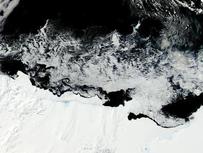
Links supplied by George Cresswell with thanks
Info from NASA website
Varied forms of ice appear in these images of the Mawson coast from the Moderate Resolution Imaging Spectroradiometer (MODIS) on NASA’s Aqua satellite and the Advanced Land Imager (ALI) on NASA’s Earth Observing-1 (EO-1) satellite.
Images can be accessed here... The MODIS image (from December 16, 2011) offers a wide-area view and the ALI image (December 30) gives a close-up centered around Mawson station with great details of the mountain ranges. Once it has loaded wait a minute or so to become clear, then you can You can zoom by clicking again and see Mt Henderson, Masson Range etc, driving with the scroll bars.
General info: The end of December marks the end of spring and beginning of summer along the coast of East Antarctica. The Sun shines most (if not all) of the time, yet ice still dominates the land and sea. That ice, however, is far from uniform.
Along the ice-encrusted coastline floats a broad band of fast ice, which derives its name from the fact that it holds fast to the shore. This thick ice is lighter in color than the thinner sea ice farther offshore (visible in the wide-area view). The sea ice is dynamic, continually forming, melting, and drifting with winds and currents.
Near the shore, wet snow sits on the fast ice, and the water-saturated snow appears gray. Adjacent to that wet snow and on land lies a patch of blue ice, composed of large ice crystals. Wind in this region has eaten away the overlying snow layer to expose pure ice below. In contrast to tiny snow crystals, which appear white, large ice crystals absorb a small amount of red light, so greater amounts of green and blue reflect off the surface.
Descending warm winds evaporate snow cover and lead to strong surface melting on fast ice. As the Antarctic summer continues, the fast ice will break away from the coast and drift out to sea.
The close-up view also reveals some details of the coastline, including glaciers that calve icebergs at or near the coast, and isolated melt ponds on the surface of the blue ice.
NASA image courtesy Jeff Schmaltz, LANCE/EOSDIS MODIS Rapid Response Team at NASA GSFC. Caption by Michon Scott with information from Ted Scambos, National Snow and Ice Data Center.
posted 10.01.2012
Lovely Emperor Penguin footage
link supplied by Peter Stickland with thanks
Entitled 'Listen to your heart' this 5 minute film features emperor penguins and their chicks...really beautiful footage. Click here to view...
Info from NASA website
Varied forms of ice appear in these images of the Mawson coast from the Moderate Resolution Imaging Spectroradiometer (MODIS) on NASA’s Aqua satellite and the Advanced Land Imager (ALI) on NASA’s Earth Observing-1 (EO-1) satellite.
Images can be accessed here... The MODIS image (from December 16, 2011) offers a wide-area view and the ALI image (December 30) gives a close-up centered around Mawson station with great details of the mountain ranges. Once it has loaded wait a minute or so to become clear, then you can You can zoom by clicking again and see Mt Henderson, Masson Range etc, driving with the scroll bars.
General info: The end of December marks the end of spring and beginning of summer along the coast of East Antarctica. The Sun shines most (if not all) of the time, yet ice still dominates the land and sea. That ice, however, is far from uniform.
Along the ice-encrusted coastline floats a broad band of fast ice, which derives its name from the fact that it holds fast to the shore. This thick ice is lighter in color than the thinner sea ice farther offshore (visible in the wide-area view). The sea ice is dynamic, continually forming, melting, and drifting with winds and currents.
Near the shore, wet snow sits on the fast ice, and the water-saturated snow appears gray. Adjacent to that wet snow and on land lies a patch of blue ice, composed of large ice crystals. Wind in this region has eaten away the overlying snow layer to expose pure ice below. In contrast to tiny snow crystals, which appear white, large ice crystals absorb a small amount of red light, so greater amounts of green and blue reflect off the surface.
Descending warm winds evaporate snow cover and lead to strong surface melting on fast ice. As the Antarctic summer continues, the fast ice will break away from the coast and drift out to sea.
The close-up view also reveals some details of the coastline, including glaciers that calve icebergs at or near the coast, and isolated melt ponds on the surface of the blue ice.
NASA image courtesy Jeff Schmaltz, LANCE/EOSDIS MODIS Rapid Response Team at NASA GSFC. Caption by Michon Scott with information from Ted Scambos, National Snow and Ice Data Center.
posted 10.01.2012
Lovely Emperor Penguin footage
link supplied by Peter Stickland with thanks
Entitled 'Listen to your heart' this 5 minute film features emperor penguins and their chicks...really beautiful footage. Click here to view...
The Nella Dan Project
An article from the Ship Modelling Society of Victoria website.
Link supplied by John Gillies with thanks
_Nella Dan Model 1970-1973 The concept for a club or joint build model model was introduced to the Ship Modelling Society of Victoria (SMSV) by Mr. Norm Neale at the November Meeting 1970. He proposed: “to construct a sailing model of a ship as a joint project for members”.
The choice of the Nella Dan as the subject of this model was taken in early 1971 with support being provided by National Antarctic Expedition in the provision of plans. The project was undertaken as a club build with the following members meeting two hours ahead of the main monthly club meetings to complete the model. The recorded (club newsletters) participants in the build include: Les Gooch, Norm Neale, Phil Molyneux, Tom Hadley, Kevin Lang, Bill Middleditch, Don McGraw, Denis Kendall and later Sid Rose.
The “remotely controlled” model took some 3000 hours to build and was constructed to 1/12 scale from Western Red Cedar, brass windows and portholes (with glass inserts) and the hull laminated externally with fibreglass. The overall dimensions of the model were 10ft x 18inches by approximately 18 inches draft. The model was powered by a 6V aircraft starter motor and controlled using a model aircraft RC unit. The model was capable of turning to port or starboard but restricted to forward motion only due to the complexity of trying to simulate “reversible pitch” propellers.
The model was launched by Mrs. Sid Rose at Albert Park Lake at 10:00 am on Sunday, 2nd December 1973. There were 14 SMSV members and 8 guests in attendance with Channel 2 providing TV coverage which was aired in the evening news a few days later.
The model was initially loaned to the National Trust (Polly Woodside) for display but in 1910, the model was returned to the SMSV. It was then donated to ANARE who shipped it to Tasmania where it is hoped that it will be displayed in the AAD foyer outside the library once a protective case is made. The ANARE Club are part funding the custom made presentation case.
Information on the Nella Dan 1962-1987 Nella Dan sailed to the Antarctic every year of the twenty-six years she was chartered by the Australian National Antarctic Research Expeditions (ANARE).
Built as an ice breaker by the Aarlborg Shipyard Pty Ltd, Denmark, in 1961, at the time of her construction, the Nella Dan was regarded as setting the standard for polar vessels. Her specifications included:
- length overall 75.5 metres
- breadth moulded 14.3 metres
- draft fully loaded 6.268 metres
- main engine turbo charged Burmeister & Wain diesel, with an output of 2500 IHP (Indicated Horse Power) at 300 rpm. The propeller blades were reversible.
- speed 12.5 knots
*Source: About Antarctica, Dept of Sustainability, Environment, Water, Population and Communities Australian Antarctic Division
Click here to acces the Ship Modelling Society of Victoria webpage and see pictures on the Nella Dan model project...
__Antarctic expedition checks CryoSat down-under
Link supplied by Ian Thomas with thanks
Info from European Space Agency website
posted 9/12/2011
Next week marks 100 years since Roald Amundsen reached the South Pole. As a team of scientists brave the Antarctic to validate data from ESA’s CryoSat mission, it’s hard to imagine what these first intrepid explorers would have thought of today’s advances in polar science.
The remote and vast expanse of the Antarctic is arguably the most hostile environment on Earth – infamously claiming the lives of Captain Robert Scott and his party all those years ago in their fated race to the South Pole. While the polar regions are challenging, to say the least, for human survival, they are also very sensitive to climate change. In turn, polar ice plays a crucial role in regulating climate and sea level.
With the effects of climate change becoming more apparent, the CryoSat mission is gathering data on changes in the thickness of ice, both on land and floating in the oceans.
CryoSat: By measuring very precisely the variations in the thickness of ice on land and floating in the oceans, the CryoSat mission is leading to a better understanding of the complex interactions between ice, climate and sea level. CryoSat carries the novel Synthetic Aperture Interferometric Radar Altimeter, SIRAL, which was designed to measure ice-sheet elevation and freeboard of sea ice. This information is needed to understand exactly how Earth’s ice is responding to climate change and to help predict what will happen if trends continue. To ensure CryoSat’s data are as accurate as possible, ESA organises numerous research campaigns in the Arctic and Antarctic.
These campaigns involve taking measurements from the air and on the ice to compare with the data from CryoSat orbiting above.
A team of Australian and German scientists from the University of Tasmania, the Australian Antarctic Division and the Alfred Wegener Institute has just finished the first leg of a remarkable measurement campaign. The campaign is being carried out in East Antarctica around Law Dome and Totten Glacier. Law Dome is relatively stable but features steep surface slopes and Totten Glacier is changing rapidly – so both offer ideal locations for validating CryoSat.
CryoSat carries a new generation of altimeter called SIRAL. It is designed to measure very precisely the elevation of polar ice – even around the edges of ice sheets, which are difficult to observe from space because of their steep slopes.
The campaign involves taking measurements from the Polar-6 aircraft. It carries the ASIRAS radar, which mimics CryoSat’s SIRAL. Ground-truth measurements are also collected for comparison. Christopher Watson from the University of Tasmania said, “Travelling on skidoo, the team gathered ground measurement over about 250 km of survey transects.
“The skidoos carry GPS to map the height of the ice, which are later compared to the aircraft and satellite measurements.”
“The experiment examines the influence that physical properties of the top snow and ice layer have on the radar signal that CryoSat emits and receives,” explained Veit Helm from the Alfred Wegener Institute. “Depending on factors such as snow particle size, the extent to which it has compacted and how it is layered, the radar signal can penetrate deeper or less deep and so is reflected differently.
“If we ignore these factors in the data, it may result in misinterpretations and less accurate maps of the changing Antarctic surface.”
ASIRAS dataMalcolm Davidson, ESA’s CryoSat Validation Manager, said, “The first attempt in East Antarctica had to be abandoned owing to terrible weather conditions. “This makes the success of this year’s activity highly-value and very welcome – both for ESA and for the scientists carrying out this challenging field work.
“It also provides a welcome opportunity to bring together the Alfred Wegener Institute, the University of Tasmania and the Australian Antarctic Division, whose work will help ensure we have the best-possible data to understand changing polar ice from space.”
the first car in Antarctica
The following article was published on the japlonick website, and contains some great footage of the VW at Mawson station. Link supplied by Ray McMahon with thanks...
'...One hundred years ago yesterday — December 14th, 1911 — Roald Admundsen and his team of Norwegian explorers became the first humans to reach the South Pole, pulled by sled dogs. But it wasn't until 1963 that the first production car landed on Antarctic shores, a mostly-stock VW Beetle known as "the Red Terror." This is its story.
The first unsuccesful attempts at bringing automobiles to Antarctica were a 1907 Arrol-Johnston and a 1927 Austin 7. Both cars lacked roofs and were remarkably unsuccessful on the frozen continent even after extensive modification (the former was so bad it frequently injured the men trying to repair it).
For the next few decades dogs and motorized sleds were the dominant modes of transport for Antarctica's explorers and later scientists.
By the 1960s, however, it was clear that dogs were on the way out in Antarctica, but the only motorized alternatives were expensive tracked vehicles. Roy McMahon, appointed in December 1962 to lead a year-long expedition for the Australian National Antarctic Research Expedition (ANARE) saw an opportunity when it came time for him to choose what vehicles to take to Australia's Mawson Station.
McMahon went to Volkswagen of Australia and asked for a free car. McMahon knew that an Antarctic Volkswagen would be a great PR opportunity for VW's new Australian-built Beetles, and they decided to let McMahon pick a Ruby Red sedan off the production line. In less than three months and with only a few hundred miles on the odometer, the car disembarked off of the icebreaker Nella Dan onto Antarctica, where it was immediately dubbed "the Red Terror."
View the gallery Since the Bug was air-cooled, it had no coolant to freeze, though it needed kerosene-thin oil to stay lubricated in the -62F temperatures in which the car drove. The only modifications to prepare the car were the standard changes VW gave their cars for Northern Europe and a set of "Antarctica 1" plates. The car faced a bleak landscape: no roads, regular -40F temperatures, and week-long blizzards. Winds, even, put the car to the test.
[Winds]up to 100 mph which more than once turned the doors inside out, overriding the door check-rods and folding the doors against the front hub caps.
Aside from having to straighten out the doors every so often, the only trouble the car had in its 12 months and almost 1,500 miles on Antarctica was that the frame head where the front torsion bars are attached to the floor pan regularly cracked over the wind-rutted ice, snow and exposed rock that defined its driving environment.
In one of his monthly reports back to VW of Australia, McMahon praised the car's ability to handle the terrain.
ON THIS TRIP ICE SLOPES, SNOW FIELDS AND CREVASSED HILLS WERE ENCOUNTERED BUT NO WORRY TO THE ‘RED TERROR'. THE FINAL APPORACH TO FISCHER IS A VERY STEEP SNOW SLOPE WHICH WAS TOUGH GOING DUE TO SINKING INTO THE SNOW, BUT VW MADE IT TO THE TOP.
Some of his cables just speak to how bizarrely wonderful it must have been to drive a car, a bright red car, over the frost-bound landscape for the first time.
HAVE PLEASURE STATING DROVE VOLKSWAGEN TO RUMDOODLE. PERFORMANCE EXCELLENT. INDEED HAPPY MOTORING. McMAHON
That's Rumdoodle airstrip, which the Red Terror visited many times. The bug regularly ferried people and equipment back and forth over the twelve miles between the airstrip and Mawson station. The record time between the base and Rumdoodle was 50 minutes, which gives you a sense of how rough Antarctic terrain is, and why the frame head kept breaking. The car also let the scientists take excursions from base camp out for research, and when the harbor would freeze over and the weather was good, the car pulled skiers and took people out on Sunday drives over the sea ice.
When the car finally made it back to Australia in 1964, VW took the car back, but rather than let it sit in some museum, as one might expect of an eminently historic, scientific vehicle, they took it on the 1964 BP Rally around Australia. The Red Terror won outright! Needless to say, VW promoted the hell out of their little PR masterpiece, and they even put together this short movie from the 1,000 feet of film VW had given McMahon back in December 1962. Historic as the car may appear, its current whereabouts are unknown. After admittedly "drinking too much schnapps" a group of Australian VW enthusiasts set out an extensive search to find the car in 2002. That search turned up nothing.
If you happen to find a red VW Bug with some curious stickers on its doors please drop us an email.
Photo Credit: Volkswagen Canada
Link supplied by Ian Thomas with thanks
Info from European Space Agency website
posted 9/12/2011
Next week marks 100 years since Roald Amundsen reached the South Pole. As a team of scientists brave the Antarctic to validate data from ESA’s CryoSat mission, it’s hard to imagine what these first intrepid explorers would have thought of today’s advances in polar science.
The remote and vast expanse of the Antarctic is arguably the most hostile environment on Earth – infamously claiming the lives of Captain Robert Scott and his party all those years ago in their fated race to the South Pole. While the polar regions are challenging, to say the least, for human survival, they are also very sensitive to climate change. In turn, polar ice plays a crucial role in regulating climate and sea level.
With the effects of climate change becoming more apparent, the CryoSat mission is gathering data on changes in the thickness of ice, both on land and floating in the oceans.
CryoSat: By measuring very precisely the variations in the thickness of ice on land and floating in the oceans, the CryoSat mission is leading to a better understanding of the complex interactions between ice, climate and sea level. CryoSat carries the novel Synthetic Aperture Interferometric Radar Altimeter, SIRAL, which was designed to measure ice-sheet elevation and freeboard of sea ice. This information is needed to understand exactly how Earth’s ice is responding to climate change and to help predict what will happen if trends continue. To ensure CryoSat’s data are as accurate as possible, ESA organises numerous research campaigns in the Arctic and Antarctic.
These campaigns involve taking measurements from the air and on the ice to compare with the data from CryoSat orbiting above.
A team of Australian and German scientists from the University of Tasmania, the Australian Antarctic Division and the Alfred Wegener Institute has just finished the first leg of a remarkable measurement campaign. The campaign is being carried out in East Antarctica around Law Dome and Totten Glacier. Law Dome is relatively stable but features steep surface slopes and Totten Glacier is changing rapidly – so both offer ideal locations for validating CryoSat.
CryoSat carries a new generation of altimeter called SIRAL. It is designed to measure very precisely the elevation of polar ice – even around the edges of ice sheets, which are difficult to observe from space because of their steep slopes.
The campaign involves taking measurements from the Polar-6 aircraft. It carries the ASIRAS radar, which mimics CryoSat’s SIRAL. Ground-truth measurements are also collected for comparison. Christopher Watson from the University of Tasmania said, “Travelling on skidoo, the team gathered ground measurement over about 250 km of survey transects.
“The skidoos carry GPS to map the height of the ice, which are later compared to the aircraft and satellite measurements.”
“The experiment examines the influence that physical properties of the top snow and ice layer have on the radar signal that CryoSat emits and receives,” explained Veit Helm from the Alfred Wegener Institute. “Depending on factors such as snow particle size, the extent to which it has compacted and how it is layered, the radar signal can penetrate deeper or less deep and so is reflected differently.
“If we ignore these factors in the data, it may result in misinterpretations and less accurate maps of the changing Antarctic surface.”
ASIRAS dataMalcolm Davidson, ESA’s CryoSat Validation Manager, said, “The first attempt in East Antarctica had to be abandoned owing to terrible weather conditions. “This makes the success of this year’s activity highly-value and very welcome – both for ESA and for the scientists carrying out this challenging field work.
“It also provides a welcome opportunity to bring together the Alfred Wegener Institute, the University of Tasmania and the Australian Antarctic Division, whose work will help ensure we have the best-possible data to understand changing polar ice from space.”
the first car in Antarctica
The following article was published on the japlonick website, and contains some great footage of the VW at Mawson station. Link supplied by Ray McMahon with thanks...
'...One hundred years ago yesterday — December 14th, 1911 — Roald Admundsen and his team of Norwegian explorers became the first humans to reach the South Pole, pulled by sled dogs. But it wasn't until 1963 that the first production car landed on Antarctic shores, a mostly-stock VW Beetle known as "the Red Terror." This is its story.
The first unsuccesful attempts at bringing automobiles to Antarctica were a 1907 Arrol-Johnston and a 1927 Austin 7. Both cars lacked roofs and were remarkably unsuccessful on the frozen continent even after extensive modification (the former was so bad it frequently injured the men trying to repair it).
For the next few decades dogs and motorized sleds were the dominant modes of transport for Antarctica's explorers and later scientists.
By the 1960s, however, it was clear that dogs were on the way out in Antarctica, but the only motorized alternatives were expensive tracked vehicles. Roy McMahon, appointed in December 1962 to lead a year-long expedition for the Australian National Antarctic Research Expedition (ANARE) saw an opportunity when it came time for him to choose what vehicles to take to Australia's Mawson Station.
McMahon went to Volkswagen of Australia and asked for a free car. McMahon knew that an Antarctic Volkswagen would be a great PR opportunity for VW's new Australian-built Beetles, and they decided to let McMahon pick a Ruby Red sedan off the production line. In less than three months and with only a few hundred miles on the odometer, the car disembarked off of the icebreaker Nella Dan onto Antarctica, where it was immediately dubbed "the Red Terror."
View the gallery Since the Bug was air-cooled, it had no coolant to freeze, though it needed kerosene-thin oil to stay lubricated in the -62F temperatures in which the car drove. The only modifications to prepare the car were the standard changes VW gave their cars for Northern Europe and a set of "Antarctica 1" plates. The car faced a bleak landscape: no roads, regular -40F temperatures, and week-long blizzards. Winds, even, put the car to the test.
[Winds]up to 100 mph which more than once turned the doors inside out, overriding the door check-rods and folding the doors against the front hub caps.
Aside from having to straighten out the doors every so often, the only trouble the car had in its 12 months and almost 1,500 miles on Antarctica was that the frame head where the front torsion bars are attached to the floor pan regularly cracked over the wind-rutted ice, snow and exposed rock that defined its driving environment.
In one of his monthly reports back to VW of Australia, McMahon praised the car's ability to handle the terrain.
ON THIS TRIP ICE SLOPES, SNOW FIELDS AND CREVASSED HILLS WERE ENCOUNTERED BUT NO WORRY TO THE ‘RED TERROR'. THE FINAL APPORACH TO FISCHER IS A VERY STEEP SNOW SLOPE WHICH WAS TOUGH GOING DUE TO SINKING INTO THE SNOW, BUT VW MADE IT TO THE TOP.
Some of his cables just speak to how bizarrely wonderful it must have been to drive a car, a bright red car, over the frost-bound landscape for the first time.
HAVE PLEASURE STATING DROVE VOLKSWAGEN TO RUMDOODLE. PERFORMANCE EXCELLENT. INDEED HAPPY MOTORING. McMAHON
That's Rumdoodle airstrip, which the Red Terror visited many times. The bug regularly ferried people and equipment back and forth over the twelve miles between the airstrip and Mawson station. The record time between the base and Rumdoodle was 50 minutes, which gives you a sense of how rough Antarctic terrain is, and why the frame head kept breaking. The car also let the scientists take excursions from base camp out for research, and when the harbor would freeze over and the weather was good, the car pulled skiers and took people out on Sunday drives over the sea ice.
When the car finally made it back to Australia in 1964, VW took the car back, but rather than let it sit in some museum, as one might expect of an eminently historic, scientific vehicle, they took it on the 1964 BP Rally around Australia. The Red Terror won outright! Needless to say, VW promoted the hell out of their little PR masterpiece, and they even put together this short movie from the 1,000 feet of film VW had given McMahon back in December 1962. Historic as the car may appear, its current whereabouts are unknown. After admittedly "drinking too much schnapps" a group of Australian VW enthusiasts set out an extensive search to find the car in 2002. That search turned up nothing.
If you happen to find a red VW Bug with some curious stickers on its doors please drop us an email.
Photo Credit: Volkswagen Canada
_Prof Denzil Miller Order of Australia award

Denzil Miller and Duke of Edinburgh and previous award..
___From Antarctic Tasmania, science and research website....
Professor Denzil Miller, has been appointed as an Honorary Officer of the Order of Australia for his service to the conservation of Antarctic marine life in the Southern Ocean. Professor Miller earned his award through his previous role as Executive Secretary of the Commission for the Conservation of Antarctic and Marine Living Resources (CCAMLR).
Professor Miller, who is originally from South Africa, was one of more than 12 recipients of the annual honours which recognise the achievements for non-Australian citizens for their contributions to Australia and humanity at large.
This is the latest of Professor Miller’s amazing achievements to add to the list of awards he has received including the prestigious World Wildlife Fund’s Duke of Edinburgh Conservation Medal, the South African Antarctic Medal and the BP Antarctic Award.
Professor Denzil Miller, has been appointed as an Honorary Officer of the Order of Australia for his service to the conservation of Antarctic marine life in the Southern Ocean. Professor Miller earned his award through his previous role as Executive Secretary of the Commission for the Conservation of Antarctic and Marine Living Resources (CCAMLR).
Professor Miller, who is originally from South Africa, was one of more than 12 recipients of the annual honours which recognise the achievements for non-Australian citizens for their contributions to Australia and humanity at large.
This is the latest of Professor Miller’s amazing achievements to add to the list of awards he has received including the prestigious World Wildlife Fund’s Duke of Edinburgh Conservation Medal, the South African Antarctic Medal and the BP Antarctic Award.
Antarctica: the art of science

This is a small but lovely exhibition. Standouts include the exquisite work by Boshu Nagase. Nagase is acknowledged as a master of gyotaku printing. In this technique dampened rice paper, (about the thickness of tissue paper), is pressed over a specimen (e.g. a fish). Small wads of cotton are then used to apply different colored inks to the paper. The prints are anatomically correct with fine detail of varying textures of the underlying surface preserved.
The prints belong to the Australian Antarctic Division, but Nagase's illustrations can be seen in the book 'Antarctic Fishes' edited by Harvey Marchant and Mitsuo Fukuchi. The book is still available through some booksellers and Amazon online.
The prints belong to the Australian Antarctic Division, but Nagase's illustrations can be seen in the book 'Antarctic Fishes' edited by Harvey Marchant and Mitsuo Fukuchi. The book is still available through some booksellers and Amazon online.
_I was also interested to view Peter Morse and Chris Henderson's video installation of Cape
Denison, as it had been mentioned in the Mawson symposium. The sequences were filmed from above with kite aerial photography rigs that flew
from ground level to several hundred meters above, providing sweeping panoramic views.
Alex Fraser provided a sweep of composite images of the East Antarctic coastal zone which had been generated from satellite imagery, starkly beautiful in simple shades of black and white. The images were part of his PhD project to map land fast sea ice.
Sarah Robert-Tissot is well known on the local Tasmanian print scene. In this exhibition she has displayed multiple small collographs representing ice surfaces in shades of blues, greys and white. Each is incredibly detailed.
The Royal Society of Tasmania had also loaned 3 books featuring the illustrations of Joseph Hooker...the images still very bright.
When: until 22nd January 2012
12pm- 5pm daily
Where: Plimsol Gallery, School of the Arts, Hunter street, Hobart.
Go down arcade beside Entrepot gallery, cross courtyard. Plimsoll Gallery is to left of stairs at courtyard level.
Cost: free
posted 3/12/2011
Alex Fraser provided a sweep of composite images of the East Antarctic coastal zone which had been generated from satellite imagery, starkly beautiful in simple shades of black and white. The images were part of his PhD project to map land fast sea ice.
Sarah Robert-Tissot is well known on the local Tasmanian print scene. In this exhibition she has displayed multiple small collographs representing ice surfaces in shades of blues, greys and white. Each is incredibly detailed.
The Royal Society of Tasmania had also loaned 3 books featuring the illustrations of Joseph Hooker...the images still very bright.
When: until 22nd January 2012
12pm- 5pm daily
Where: Plimsol Gallery, School of the Arts, Hunter street, Hobart.
Go down arcade beside Entrepot gallery, cross courtyard. Plimsoll Gallery is to left of stairs at courtyard level.
Cost: free
posted 3/12/2011
AAE Centenary Flotilla
The 2nd December 2011 marks the centenary of the departure of the Australasian Antarctic Expedition from Hobart. As part of the centenary celebrations the Tas government organised a commemorative flotilla on the Derwent. Many vessels took part including the icebreaker Aurora Australis (which then proceeded south heading for Casey), the Young Endeavour, Lady Nelson (chartered by AAD) and the Cartela (chartered by Mawsons Huts Foundation). There were also over 200 private yachts and other water craft registered to take part, predominantly through local sailing clubs.
David Jensen, CEO of the Mawsons Hut Foundation had offered a number of berths to ANARE Club members on the Cartela. (Many thanks David!) A number of ANARE folk took advantage of the offer including David and Yvonne Johns, Michael Carr, Deb and Ken Barrett, Ian and Celeste Marchant, Andrew Jackson, Ian Mackie, Ian Bruce, David Waterhouse, Christian Gallagher, Ingrid Mcgaughey. The large ANARE leopard seal pennant (also affectionately known as the 'leaping lizard' by some) was hoisted in pride of place on the bow and provoked much comment and many photographs.
The Cartela was a particularly interesting vessel to be on board as it also hosted the descendants of AAE expedition members whom have congregated in Hobart to celebrate the AAE and also in many cases, to meet for the first time. Pretty much every AAE member appeared to be represented.
Tasmanian Governor Peter Underwood and Governor General Quentin Bryce also attended the celebrations. Quentin Bryce presented Australian Antarctic Medals to krill scientist Dr Stephen Nichol and Murray Doyle, master of the Aurora Australis. (Click here for further details on the Australian Antarctic medals)
The 2nd December 2011 marks the centenary of the departure of the Australasian Antarctic Expedition from Hobart. As part of the centenary celebrations the Tas government organised a commemorative flotilla on the Derwent. Many vessels took part including the icebreaker Aurora Australis (which then proceeded south heading for Casey), the Young Endeavour, Lady Nelson (chartered by AAD) and the Cartela (chartered by Mawsons Huts Foundation). There were also over 200 private yachts and other water craft registered to take part, predominantly through local sailing clubs.
David Jensen, CEO of the Mawsons Hut Foundation had offered a number of berths to ANARE Club members on the Cartela. (Many thanks David!) A number of ANARE folk took advantage of the offer including David and Yvonne Johns, Michael Carr, Deb and Ken Barrett, Ian and Celeste Marchant, Andrew Jackson, Ian Mackie, Ian Bruce, David Waterhouse, Christian Gallagher, Ingrid Mcgaughey. The large ANARE leopard seal pennant (also affectionately known as the 'leaping lizard' by some) was hoisted in pride of place on the bow and provoked much comment and many photographs.
The Cartela was a particularly interesting vessel to be on board as it also hosted the descendants of AAE expedition members whom have congregated in Hobart to celebrate the AAE and also in many cases, to meet for the first time. Pretty much every AAE member appeared to be represented.
Tasmanian Governor Peter Underwood and Governor General Quentin Bryce also attended the celebrations. Quentin Bryce presented Australian Antarctic Medals to krill scientist Dr Stephen Nichol and Murray Doyle, master of the Aurora Australis. (Click here for further details on the Australian Antarctic medals)
Traversing Antarctica exhibition opens...
Traversing Antarctica highlights Australia's connection with the Antarctic and has been developed by the National Archives of Australia in partnership with the Australian Antarctic Division and Western Australian Museum, with support from the Tasmanian Museum and Art Gallery and South Australian Museum.
The exhibition includes a rare collection of artifacts that are on display together for the first time, among them are original equipment and diaries used by members of the Australasian Antarctic Expedition. The exhibition is interesting as rather than focus predominantly on Sir Douglas Mawson, there is a real attempt to highlight the contribution of other AAE members. One of the most moving exhibits is Stillwell's diary with the sentence '...still no Mawson...'
The exhibition was officially opened on the 3rd December 2011 by the Minister for the Environment, Tony Burke at the Waterside Pavilion, Mawson Place in Hobart. The exhibition is on at the Tasmanian Museum and Art Gallery (TMAG) until 26h February 2012, before travelling to the National Archives in Canberra, opening on 19 April 2012 until mid-August 2012. It will then tour nationally until 2014.
It is pleasing to see a number of large format photographs by ANARE Club member Chris Wilson as well as several hobby items made by ANARE expeditioners in the exhibition. The ANARE Club and Pat Quilty were consulted by curator Jane McKnight for expert advice in the development stages of the exhibition (and appreciate being recognised on the exhibition acknowledgements board!)
Artists in Antarctica
The Tasmanian Museum and Art Gallery (TMAG) also has an exhibition of artworks inspired by the Antarctic.
The exhibition features the work of twelve artists who have journeyed to Macquarie Island, the Southern Ocean and Antarctica over an eighty year period between 1912 and 1993.
Several small watercolors by Charles Harrisson are included. Harrisson was a member of the AAE as a collector and naturalist with an interest in crustacea. His work features in Mawson's 'Home of the Blizzard.'
Other artists include: Luc Marie Bayle, Sidney Nolan, George Davis, Stephen Walker, John Caldwell, Bea Maddock, Jan Senbergs, Clare Robertson, Charles Page, Sally Robinson and David Stephenson.
When: until 4 March 2012
Where: Tasmanian Museum and Art Gallery (TMAG)
TMAG is open daily from 10:00 am to 5:00 pm except Christmas day, Good Friday and ANZAC day.
Cost: free
posted 3/12/2011
Mawson symposium a great success
Pat Quilty is to be congratulated for pulling together an interesting and diverse 2 day program. The program was particularly interesting as it focused not so much on Mawson, but on the impressions and achievements of other team members. Strong sections on mapping and polar medicine also complemented the program.
Over 90 delegates attended. The ANARE Club was well represented. ANARE Club members who presented lectures included Louise Crossley, John Manning, Andrew Jackson, Bernadette Hince, Joe Johnson, George Cresswell, Peter Shaughnessy, Pat Quilty, Jeff Ayton, Des Lugg, and David Dodd. Many other Club members attended including Ian Mackie, Nod Parsons, Barbara Frankel, John Brennan, and Ingrid Mcgaughey.
Pat has put in untold hours of work. In addition to coordinating the lecture program, he was also responsible for much of the logistical work including making name badges, organising catering quotes, liasing with various venues and transport companies to name but a few skills. Skills that will no doubt come in handy come Midwinter...
Pat Quilty is to be congratulated for pulling together an interesting and diverse 2 day program. The program was particularly interesting as it focused not so much on Mawson, but on the impressions and achievements of other team members. Strong sections on mapping and polar medicine also complemented the program.
Over 90 delegates attended. The ANARE Club was well represented. ANARE Club members who presented lectures included Louise Crossley, John Manning, Andrew Jackson, Bernadette Hince, Joe Johnson, George Cresswell, Peter Shaughnessy, Pat Quilty, Jeff Ayton, Des Lugg, and David Dodd. Many other Club members attended including Ian Mackie, Nod Parsons, Barbara Frankel, John Brennan, and Ingrid Mcgaughey.
Pat has put in untold hours of work. In addition to coordinating the lecture program, he was also responsible for much of the logistical work including making name badges, organising catering quotes, liasing with various venues and transport companies to name but a few skills. Skills that will no doubt come in handy come Midwinter...
|
|
Nichols and Doyle awarded Australian Antarctic Medals.
World renowned krill scientist Dr Stephen Nichol and Aurora Australis master Captain Murray Doyle were awarded the 2011 Australian Antarctic medal by the Governor General of Australia Ms Quentin Bryce in Hobart today. Read more...
posted 2/12/2011
World renowned krill scientist Dr Stephen Nichol and Aurora Australis master Captain Murray Doyle were awarded the 2011 Australian Antarctic medal by the Governor General of Australia Ms Quentin Bryce in Hobart today. Read more...
posted 2/12/2011
Seminar (Sydney): Exploration, Science and Heroic Deeds in the Antarctic Presenter: Andrew Atkin
In this centenary year there continues to be an image makeover to re-invent Scott’s "Terra Nova" expedition as a scientific expedition on which pole-bagging was a side-show. Scott and Amundsen were different sorts of men. Amundsen made a career as a scientist and explorer, and had the training, equipment, experience and transport strategies for attainment of the pole. Scott has been portrayed variously as a truly heroic explorer who suffered misfortune, a bumbling amateur, and more recently as a scientist who sacrificed exploration in the interests of science. The core of this research is analysis of the scientific legacies of Scott’s earlier "Discovery" expedition (1901-04). The findings inform the debate about Scott’s motivations and his fitness for the task of expedition leadership. These are controversies that continue to occupy polar historians. Link is here...
Presenter: Andrew Atkin returns from studies in the UK to reveal the icy issues of antarctic history. He promises to include photos of all the usual stuff: penguins, icebergs, expedition ships, historic huts and dead heroes.
Date: 15 December 2011
Time: 13:00 - 14:00
Location: University Technology Sydney -City - Broadway CB10 CB10.14.201.
Audience: All Welcome Contact: Andrew Atkin
Thanks to Lisa Roberts for information
posted 16.11.2011
In this centenary year there continues to be an image makeover to re-invent Scott’s "Terra Nova" expedition as a scientific expedition on which pole-bagging was a side-show. Scott and Amundsen were different sorts of men. Amundsen made a career as a scientist and explorer, and had the training, equipment, experience and transport strategies for attainment of the pole. Scott has been portrayed variously as a truly heroic explorer who suffered misfortune, a bumbling amateur, and more recently as a scientist who sacrificed exploration in the interests of science. The core of this research is analysis of the scientific legacies of Scott’s earlier "Discovery" expedition (1901-04). The findings inform the debate about Scott’s motivations and his fitness for the task of expedition leadership. These are controversies that continue to occupy polar historians. Link is here...
Presenter: Andrew Atkin returns from studies in the UK to reveal the icy issues of antarctic history. He promises to include photos of all the usual stuff: penguins, icebergs, expedition ships, historic huts and dead heroes.
Date: 15 December 2011
Time: 13:00 - 14:00
Location: University Technology Sydney -City - Broadway CB10 CB10.14.201.
Audience: All Welcome Contact: Andrew Atkin
Thanks to Lisa Roberts for information
posted 16.11.2011
Update on Alf Howard book launch
personal communication from Anna Bemrose:
'...Thought you may like a little news about the launch of Alf's book. There were more than 100 people there and the Library bookshop told me they sold approx 72 books--it was a very memorable occasion. The venue--The Queensland Terrace--at the State Library of Queensland is a very attractive covered space where the back wall opens onto a background of trees & the Brisbane River. As you know Tim Bowden came up from near Sydney to launch the book and then we did short Q & A session, which was most enjoyable. Prior to our 'chat' people from different areas of Alf's life spoke for a few minutes.
Yalumba wines from South Australia's Barossa Valley sent up 2 cases of Mawson labelled white & red wines and all were upstanding for a toast to Alf at the end of the 'formal' proceedings. As you no doubt know the Yalumba connection is a long one with Sir Douglas' 1911-14 & 1929-1931 Antarctic expeditions when they donated generous supplies of their special Crown Port & wine. Yalumba sent a magnum of red to Alf for his 100th birthday.
Ian Fletcher the son of the second longest BANZARE survivor who passed away in 1996--Harold O Fletcher--flew up some Sydney just for the day to be there. Also the cousins of Alf's only surviving relative, a niece-Shirley, came up from Melbourne for the occasion as Shirley was unable to make it. The scout leader of the old troop in Camberwell, Melbourne where Alf was registered in 1914 as being the first scout cub, made the return trip from Melbourne in a day to also be at the launch. Afterwards the interstate visitors came back to my unit where we continued celebrations with Veuve Clicquot champagne and some et ceteras ... ANARE Club Qld was well represented...
There has been interest from a number of Antarctic magazines: Ian Stone, editor of the Polar Record, Cambridge to review the book and from John Splettstoesser who wishes to review it for the The Polar Times. Natalie Cadenhead editor of NZ's leading polar journal Antarctic also wishes to review it. And John Gillies is reviewing it in the next issue of AURORA.
Anna Bemrose
posted 16.11.2011
personal communication from Anna Bemrose:
'...Thought you may like a little news about the launch of Alf's book. There were more than 100 people there and the Library bookshop told me they sold approx 72 books--it was a very memorable occasion. The venue--The Queensland Terrace--at the State Library of Queensland is a very attractive covered space where the back wall opens onto a background of trees & the Brisbane River. As you know Tim Bowden came up from near Sydney to launch the book and then we did short Q & A session, which was most enjoyable. Prior to our 'chat' people from different areas of Alf's life spoke for a few minutes.
Yalumba wines from South Australia's Barossa Valley sent up 2 cases of Mawson labelled white & red wines and all were upstanding for a toast to Alf at the end of the 'formal' proceedings. As you no doubt know the Yalumba connection is a long one with Sir Douglas' 1911-14 & 1929-1931 Antarctic expeditions when they donated generous supplies of their special Crown Port & wine. Yalumba sent a magnum of red to Alf for his 100th birthday.
Ian Fletcher the son of the second longest BANZARE survivor who passed away in 1996--Harold O Fletcher--flew up some Sydney just for the day to be there. Also the cousins of Alf's only surviving relative, a niece-Shirley, came up from Melbourne for the occasion as Shirley was unable to make it. The scout leader of the old troop in Camberwell, Melbourne where Alf was registered in 1914 as being the first scout cub, made the return trip from Melbourne in a day to also be at the launch. Afterwards the interstate visitors came back to my unit where we continued celebrations with Veuve Clicquot champagne and some et ceteras ... ANARE Club Qld was well represented...
There has been interest from a number of Antarctic magazines: Ian Stone, editor of the Polar Record, Cambridge to review the book and from John Splettstoesser who wishes to review it for the The Polar Times. Natalie Cadenhead editor of NZ's leading polar journal Antarctic also wishes to review it. And John Gillies is reviewing it in the next issue of AURORA.
Anna Bemrose
posted 16.11.2011
Places available in AAE Celebration flotilla
David Jensen of Mawsons Hut Foundation has chartered the vintage MV Cartela to take part in the Mawson flotilla on the 2nd of December 2011. Many of the places will be filled by people associated with Mawsons Hut Foundation and the descendents of AAE expeditioners. David has kindly made 25 places available for ANARE Club members and friends. Cost is $25 per person.
If you are interested in organising a place please contact David directly on
[email protected]
The Cartela was built at Battery Point, Hobart by Purdon & Featherstone in 1912 for the Huon, Channel and Peninsula Steamship Company Pty. Ltd. to operate as a cargo and passenger vessel in the coastal and riverine trades south and south-east of the city.
Most of Cartela's service until after World War II was spent operating passenger and cargo services between Hobart, Tasman Peninsula and ports on the D'Entrecasteaux Channel with a proportion of excursion activities up and down the River Derwent. She occasionally performed other duties, including a voyage to Melbourne during a seamen's strike in 1919, and as a tug before dedicated tug-boats were employed in Hobart after World War II. Cartela was converted from a steamship to a motor vessel in 1958 and extensively altered and fitted with more powerful engines as a ferry following the Tasman Bridge Disaster in 1975. She is still engaged in excursion work out of Hobart.
posted 8.11.2011
David Jensen of Mawsons Hut Foundation has chartered the vintage MV Cartela to take part in the Mawson flotilla on the 2nd of December 2011. Many of the places will be filled by people associated with Mawsons Hut Foundation and the descendents of AAE expeditioners. David has kindly made 25 places available for ANARE Club members and friends. Cost is $25 per person.
If you are interested in organising a place please contact David directly on
[email protected]
The Cartela was built at Battery Point, Hobart by Purdon & Featherstone in 1912 for the Huon, Channel and Peninsula Steamship Company Pty. Ltd. to operate as a cargo and passenger vessel in the coastal and riverine trades south and south-east of the city.
Most of Cartela's service until after World War II was spent operating passenger and cargo services between Hobart, Tasman Peninsula and ports on the D'Entrecasteaux Channel with a proportion of excursion activities up and down the River Derwent. She occasionally performed other duties, including a voyage to Melbourne during a seamen's strike in 1919, and as a tug before dedicated tug-boats were employed in Hobart after World War II. Cartela was converted from a steamship to a motor vessel in 1958 and extensively altered and fitted with more powerful engines as a ferry following the Tasman Bridge Disaster in 1975. She is still engaged in excursion work out of Hobart.
posted 8.11.2011
Mawson flotilla update
A message from Paul Cullen, coordinator of the tasmanian Governments AAE centenary celebrations...
On the 2nd December this year, we will mark a century since a 29 year-old geologist named Douglas Mawson took command of the Australasian Antarctic Expedition, boarded the steam yacht Aurora and departed Hobart for Macquarie Island, en route to Cape Denison and Commonwealth Bay in Antarctica. On this day, one hundred years later, three Antarctic cruise ships, the Orion, the Akademik Shokalskiy and the Spirit of Enderby will be in Hobart for cruises timed to celebrate this historic expedition. Hobart’s history as an Antarctic port is a long one, and since the early 19th Century the Tasmanian community has had a profound connection with Antarctica. In December 1911, this community gathered to wish the first Australian-led expedition to Antarctica good luck and Godspeed on their departure. The Governor of Tasmania spoke to an assembled crowd on the wharves, commending the expedition and its leader.
When the Aurora sailed down the Derwent River, it was accompanied by a flotilla of well-wishers aboard chartered and private yachts. One hundred years later, we are planning to re-create that historic event.
Australia is now a leader in Antarctic and Southern Ocean policy and science. Hobart is home to the Australian Antarctic program. Its modern icebreaker, the Aurora Australis, will be with us, as will the French Antarctic vessel L’Astrolabe and the Royal Australian Navy’s sail training ship the Young Endeavour. The tall ships Lady Nelson and Windeward Bound will also be with us, as will the classic ferry MV Cartela, thePV Van Dieman and the TasPorts tugs. The Royal Yacht Club of Tasmania, the Bellerive Yacht Club, the Motor Yacht Club of Tasmania, the Living Boat Trust, the Australian Wooden Boat Festival, the Cruising Yacht Club of Tasmania and the Derwent Sailing Squadron, among others, will participate in this remarkable public spectacle. His Excellency the Governor of Tasmania, the Honourable Peter Underwood, AC and Mrs Underwood will be the guests of honour, aboard the classic motor launch Egeria.
The Australian Defence Force will salute the Governor with a thunderous 19-gun salute to officially start the Mawson Centenary Flotilla at exactly 11:00 am on Friday, 2 December, 2011 at Regatta Point. There are excellent views from the Queens Domain Regatta Stand; admission and parking are free.
This is a key event in the Antarctic Centennial Year calendar. Along with the launch of ‘Traversing Antarctica’ (a major new exhibition presented by the National Archives of Australia and the Australian Antarctic Division at the Tasmanian Museum and Art Gallery) and an important fund-raising dinner for the Mawson’s Huts Foundation on 1 December, it will attract tremendous public interest and participation.
For expeditioners, participants and guests, it will offer an unforgettable experience. For the yachtsman and the boating enthusiast, this will be one of the largest events organised on the Derwent for many years and it will be an exciting one. For those interested in Antarctic history, it marks an important anniversary in Australia’s long involvement in Antarctic science and exploration. For the people of Hobart, it will be a celebration of our vibrant port city and our maritime heritage.
We invite you to get involved, to join us and enjoy a very special day.
Would you like to watch the event? Free parking is provided at the Queens Domain (next to the Cenotaph) from 10:00 am on the Friday morning. You can enter from either direction off the Tasman Highway. The Royal Hobart Regatta Stand will be open for superb views over the river and a running commentary will describe the ships of the Mawson Flotilla as they pass and salute His Excellency the Governor. Admission is free and you are encouraged to bring children along – this will be an unforgettable sight. If you cannot attend at 11:00 am, you will still be able to view the Mawson Flotilla as it returns back up the river in the afternoon, to pass Wrest Point around 4:00pm. Good viewing spots include Sandown Park, Sandy Bay and the Alexandra Battery.
Would you like to volunteer to help run the event? We will need lots of people on the day to assist with public safety, information and parking. The commitment might be as little as a couple of hours, to help us make sure that the event goes smoothly, safely and with maximum fun for all involved. Volunteers are registered with Antarctic Tasmania and provided with security passes and ACY jackets to help identify you as one of the crew. If this interests you, contact Event Manager Paul Cullen at this address: [email protected] by 18 November, 2011.
Would you like to join in the Mawson Centenary Flotilla afloat? If you own or operate a private motor yacht or sailing vessel and would like to join us on the water, we encourage you to get in contact with your local yacht club or sailing squadron. All vessels participating in the Flotilla must be registered (you will receive a specially commissioned pennant, or burgee, to indicate that you are registered), and registration is free. In the interests of marine safety and public order, unregistered private yachts and watercraft will be excluded from the procession. Tasmania Police and MAST will be on the water to assist. Registering with your club gives you access to sailing directions, course, communications and charts. If you are not a member of any local club, but would like to participate, please contact us directly for instructions.
Best regards,
Paul Cullen I Event Manager I Antarctic Centennial Year Antarctic Tasmania,
Science and Research Department of Economic Development, Tourism and the Arts
22 Elizabeth St, Hobart, Tasmania 7000 Ph: 6233 3170 www.antarcticcentennial.tas.gov.au
A message from Paul Cullen, coordinator of the tasmanian Governments AAE centenary celebrations...
On the 2nd December this year, we will mark a century since a 29 year-old geologist named Douglas Mawson took command of the Australasian Antarctic Expedition, boarded the steam yacht Aurora and departed Hobart for Macquarie Island, en route to Cape Denison and Commonwealth Bay in Antarctica. On this day, one hundred years later, three Antarctic cruise ships, the Orion, the Akademik Shokalskiy and the Spirit of Enderby will be in Hobart for cruises timed to celebrate this historic expedition. Hobart’s history as an Antarctic port is a long one, and since the early 19th Century the Tasmanian community has had a profound connection with Antarctica. In December 1911, this community gathered to wish the first Australian-led expedition to Antarctica good luck and Godspeed on their departure. The Governor of Tasmania spoke to an assembled crowd on the wharves, commending the expedition and its leader.
When the Aurora sailed down the Derwent River, it was accompanied by a flotilla of well-wishers aboard chartered and private yachts. One hundred years later, we are planning to re-create that historic event.
Australia is now a leader in Antarctic and Southern Ocean policy and science. Hobart is home to the Australian Antarctic program. Its modern icebreaker, the Aurora Australis, will be with us, as will the French Antarctic vessel L’Astrolabe and the Royal Australian Navy’s sail training ship the Young Endeavour. The tall ships Lady Nelson and Windeward Bound will also be with us, as will the classic ferry MV Cartela, thePV Van Dieman and the TasPorts tugs. The Royal Yacht Club of Tasmania, the Bellerive Yacht Club, the Motor Yacht Club of Tasmania, the Living Boat Trust, the Australian Wooden Boat Festival, the Cruising Yacht Club of Tasmania and the Derwent Sailing Squadron, among others, will participate in this remarkable public spectacle. His Excellency the Governor of Tasmania, the Honourable Peter Underwood, AC and Mrs Underwood will be the guests of honour, aboard the classic motor launch Egeria.
The Australian Defence Force will salute the Governor with a thunderous 19-gun salute to officially start the Mawson Centenary Flotilla at exactly 11:00 am on Friday, 2 December, 2011 at Regatta Point. There are excellent views from the Queens Domain Regatta Stand; admission and parking are free.
This is a key event in the Antarctic Centennial Year calendar. Along with the launch of ‘Traversing Antarctica’ (a major new exhibition presented by the National Archives of Australia and the Australian Antarctic Division at the Tasmanian Museum and Art Gallery) and an important fund-raising dinner for the Mawson’s Huts Foundation on 1 December, it will attract tremendous public interest and participation.
For expeditioners, participants and guests, it will offer an unforgettable experience. For the yachtsman and the boating enthusiast, this will be one of the largest events organised on the Derwent for many years and it will be an exciting one. For those interested in Antarctic history, it marks an important anniversary in Australia’s long involvement in Antarctic science and exploration. For the people of Hobart, it will be a celebration of our vibrant port city and our maritime heritage.
We invite you to get involved, to join us and enjoy a very special day.
Would you like to watch the event? Free parking is provided at the Queens Domain (next to the Cenotaph) from 10:00 am on the Friday morning. You can enter from either direction off the Tasman Highway. The Royal Hobart Regatta Stand will be open for superb views over the river and a running commentary will describe the ships of the Mawson Flotilla as they pass and salute His Excellency the Governor. Admission is free and you are encouraged to bring children along – this will be an unforgettable sight. If you cannot attend at 11:00 am, you will still be able to view the Mawson Flotilla as it returns back up the river in the afternoon, to pass Wrest Point around 4:00pm. Good viewing spots include Sandown Park, Sandy Bay and the Alexandra Battery.
Would you like to volunteer to help run the event? We will need lots of people on the day to assist with public safety, information and parking. The commitment might be as little as a couple of hours, to help us make sure that the event goes smoothly, safely and with maximum fun for all involved. Volunteers are registered with Antarctic Tasmania and provided with security passes and ACY jackets to help identify you as one of the crew. If this interests you, contact Event Manager Paul Cullen at this address: [email protected] by 18 November, 2011.
Would you like to join in the Mawson Centenary Flotilla afloat? If you own or operate a private motor yacht or sailing vessel and would like to join us on the water, we encourage you to get in contact with your local yacht club or sailing squadron. All vessels participating in the Flotilla must be registered (you will receive a specially commissioned pennant, or burgee, to indicate that you are registered), and registration is free. In the interests of marine safety and public order, unregistered private yachts and watercraft will be excluded from the procession. Tasmania Police and MAST will be on the water to assist. Registering with your club gives you access to sailing directions, course, communications and charts. If you are not a member of any local club, but would like to participate, please contact us directly for instructions.
Best regards,
Paul Cullen I Event Manager I Antarctic Centennial Year Antarctic Tasmania,
Science and Research Department of Economic Development, Tourism and the Arts
22 Elizabeth St, Hobart, Tasmania 7000 Ph: 6233 3170 www.antarcticcentennial.tas.gov.au
Down South book published
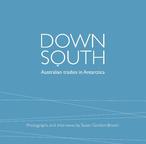
For over 60 years, Australian tradespeople have been drawn to the Antarctic by the prospect of great adventure and mateship. The scientists couldn't have remained in Antarctica and undertaken their research without the support and contribution of these skilled workers.
Susan Gordon-Brown, the photographer, has spoken to 25 tradespeople and photographed them as they are now. This book is a combination of these portraits and their stories, as written by Gayl O’Connor.
The book is a 12x12inch hardback book with good quality heavy paper with the storyboard one side and a photo on the other. The forward was written by Fred Elliott. The book can be previewed here... Please do not order the book as yet if you are interested in purchasing a copy. the author Susan Gordon Brown is in the process of organising beautiful quality paper so the photographs in particular will display even better....
posted 8.11.2011
Susan Gordon-Brown, the photographer, has spoken to 25 tradespeople and photographed them as they are now. This book is a combination of these portraits and their stories, as written by Gayl O’Connor.
The book is a 12x12inch hardback book with good quality heavy paper with the storyboard one side and a photo on the other. The forward was written by Fred Elliott. The book can be previewed here... Please do not order the book as yet if you are interested in purchasing a copy. the author Susan Gordon Brown is in the process of organising beautiful quality paper so the photographs in particular will display even better....
posted 8.11.2011
Sir Douglas Mawson Centenary Dinner

A dinner to mark the Centenary of the departure of the 1911-14 AAE led by Sir Douglas Mawson is being held at the Grand Chancellor Hotel, Hobart on Thursday 1st December 2011.
The dinner is been organised by the Mawson's Huts Foundation to raise funds for the conservation of the historic huts at Cape Denison that the AAE used as their base for 2 years.
The Mawson's Huts Foundation is a not-for-profit registered charity established in 1997 expressly to conserve the huts in partnership with the Australian Antarctic Division. Since 1997 it has funded and organised 10 major expeditions to the Cape Denison site and a further expedition will depart Hobart on 2 December 2011—exactly 100 years after the AAE.
The dinner will be attended by the patron of the Foundation, Governor General Quentin Bryce, descendents of AAE expedition members, representatives of companies that initially sponsored Mawson, and others interested in Australia's Antarctic history.
Further details can be accessed here...
The dinner is been organised by the Mawson's Huts Foundation to raise funds for the conservation of the historic huts at Cape Denison that the AAE used as their base for 2 years.
The Mawson's Huts Foundation is a not-for-profit registered charity established in 1997 expressly to conserve the huts in partnership with the Australian Antarctic Division. Since 1997 it has funded and organised 10 major expeditions to the Cape Denison site and a further expedition will depart Hobart on 2 December 2011—exactly 100 years after the AAE.
The dinner will be attended by the patron of the Foundation, Governor General Quentin Bryce, descendents of AAE expedition members, representatives of companies that initially sponsored Mawson, and others interested in Australia's Antarctic history.
Further details can be accessed here...
Mawson symposium update
The program for the Mawsons Symposium on the 30th November/1st December has been finalised and can be accessed here. It is an interesting program with presentations by experts in many fields from all round Australia, including a number of ANARE Club members.
There is still the opportunity to register for the symposium. Details are available on the Royal Society Tasmania website or contact the convener Prof. Pat Quilty on [email protected]
The program for the Mawsons Symposium on the 30th November/1st December has been finalised and can be accessed here. It is an interesting program with presentations by experts in many fields from all round Australia, including a number of ANARE Club members.
There is still the opportunity to register for the symposium. Details are available on the Royal Society Tasmania website or contact the convener Prof. Pat Quilty on [email protected]
AAE Charles Harrisson diary book launch
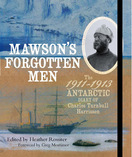
Tasmanian-born Charles Turnbull Harrisson was one of the members of Douglas Mawson's legendary Australasian Antarctic Expedition of 1911-14. Harrisson was a gifted writer, and the diary he kept from December 1911 to March 1913 has been reproduced for the first time in Mawson's Forgotten Men. In this, editor Heather Rossiter, honours the daring spirit of these lesser-known but equally audacious Antarctic explorers.
A scientist and writer, Heather Rossiter has lived and worked in three continents. An inveterate traveller to challenging places, she has recently returned from Iran where she indulged her passion for Islamic architecture and decorative arts.
Where. Fullers Bookshop. 131 Collins st, Hobart.
When. 13th November, 2pm
Cost. free
Join us as Sir Guy Green and Antarctic Tasmania launch Mawson's Forgotten Men. All welcome!
Please RSVP to [email protected]
A scientist and writer, Heather Rossiter has lived and worked in three continents. An inveterate traveller to challenging places, she has recently returned from Iran where she indulged her passion for Islamic architecture and decorative arts.
Where. Fullers Bookshop. 131 Collins st, Hobart.
When. 13th November, 2pm
Cost. free
Join us as Sir Guy Green and Antarctic Tasmania launch Mawson's Forgotten Men. All welcome!
Please RSVP to [email protected]
Large ice crack appears in Antarctica
from ABC website
7th november 2011
A massive crack is growing wider in the Antarctic ice sheet and could break apart in the coming months, forming an iceberg the size of New York City, NASA scientists have warned.
The crack in western Antarctica's Pine Island Glacier stretches for at least 30 kilometres and runs 50 metres deep. The rift is widening at a rate of two metres per day, said NASA project scientist Michael Studinger.
When the ice breaks apart, it will produce an iceberg more than 880 square kilometres, said Mr Studinger, who is part of the US space agency's IceBridge project.But the process is not a result of global warming, he said. Read more....
posted 7.11.2011
from ABC website
7th november 2011
A massive crack is growing wider in the Antarctic ice sheet and could break apart in the coming months, forming an iceberg the size of New York City, NASA scientists have warned.
The crack in western Antarctica's Pine Island Glacier stretches for at least 30 kilometres and runs 50 metres deep. The rift is widening at a rate of two metres per day, said NASA project scientist Michael Studinger.
When the ice breaks apart, it will produce an iceberg more than 880 square kilometres, said Mr Studinger, who is part of the US space agency's IceBridge project.But the process is not a result of global warming, he said. Read more....
posted 7.11.2011
Mawson and Heroic Age Book launch
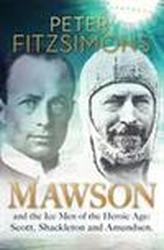
ELTHAM bookshop Montsalvat and Random House Australia
invite you to a very special evening with Peter Fitzsimons in conversation with David Day to celebrate the lives and the adventures of the Ice Men of the Heroic Age
Where: The Barn, Montsalvat, Hillcrest Avenue, Eltham
When: November 14th, 6.30pm for 7.00pm
Cost: $10.00 Prepaid bookings are essential to avoid disappointment
[email protected]
970 Main Road, Eltham 9439 8700
Info supplied by Denise Allen and David Dodds with thanks
posted 7.11.2011
invite you to a very special evening with Peter Fitzsimons in conversation with David Day to celebrate the lives and the adventures of the Ice Men of the Heroic Age
Where: The Barn, Montsalvat, Hillcrest Avenue, Eltham
When: November 14th, 6.30pm for 7.00pm
Cost: $10.00 Prepaid bookings are essential to avoid disappointment
[email protected]
970 Main Road, Eltham 9439 8700
Info supplied by Denise Allen and David Dodds with thanks
posted 7.11.2011
Call for massive Antarctic marine reserves
By Bronwyn Herbert,
Audio: Calls for Antarctic marine park (AM) also available from ABC AM program
Updated November 01, 2011 14:51:55
A new coalition of environmental and conservation groups is calling for a massive area surrounding Antarctica to be protected in marine reserves.
Steve Campbell from the Antarctic Ocean Alliance says the oceans around Antarctica are some of the most pristine in the world and should be protected. Mr Campbell says the alliance wants the majority of the area put into no-take reserves prohibiting all activity apart from scientific research. "We do know that it's going to be in order of magnitude greater than anything that has been achieved before," he said.
"The biggest marine reserve in the world at the moment is about 600,000 square kilometres but we know that there are areas around Antarctica which could certainly add up to a lot more than that. "We've identified about 19 regions around Antarctica where there could be a marine reserve or marine protected areas set up and this would establish a network of areas all the way around the continent of Antarctica and would be put in place for all time we hope."
Read more...
Audio: Calls for Antarctic marine park (AM)
By Bronwyn Herbert,
Audio: Calls for Antarctic marine park (AM) also available from ABC AM program
Updated November 01, 2011 14:51:55
A new coalition of environmental and conservation groups is calling for a massive area surrounding Antarctica to be protected in marine reserves.
Steve Campbell from the Antarctic Ocean Alliance says the oceans around Antarctica are some of the most pristine in the world and should be protected. Mr Campbell says the alliance wants the majority of the area put into no-take reserves prohibiting all activity apart from scientific research. "We do know that it's going to be in order of magnitude greater than anything that has been achieved before," he said.
"The biggest marine reserve in the world at the moment is about 600,000 square kilometres but we know that there are areas around Antarctica which could certainly add up to a lot more than that. "We've identified about 19 regions around Antarctica where there could be a marine reserve or marine protected areas set up and this would establish a network of areas all the way around the continent of Antarctica and would be put in place for all time we hope."
Read more...
Audio: Calls for Antarctic marine park (AM)
Full Bloom
Collecting flowers to determine what bugs might be present would seem to be a pretty straight forward research project. But sampling frost flowers during the spring bloom in Antarctica to study the bacteria that inhabit the delicate ice structures is an altogether different job. Scientists believe the frost flowers are capable of traveling vast distances, spreading microbes from the continent's edge to the glacial interior. Read more here....
Historic Antarctic expedition’s biscuit fetches only £1,250 at auction
- October 3, 2011
- Matt Paish
- Ref aus foods website
A biscuit found at the old Cape Royd Antarctica hut from the famous Nimrod Expedition of Ernest Shackleton, has been sold in a Christie’s auction for £1,250 (just over A$2,000).
Christie’s currently holds the world record price of £7,638 (A$12,292) for biscuit crumbs from one of Ernest Shackleton’s Antarctica expeditions. This was achieved at a Christie’s London auction in September 2001.
The Nimrod Expedition was the first of three expeditions to Antarctica led by Ernest Shackleton. Its main target, aside from a range of geographical and scientific objectives, was to be first to the South Pole. The great Australian Antarctic explorer Douglas Mawson, whose image appeared from 1984–96 on the Australian one hundred dollar note, also participated in that expedition.
The latest biscuit was manufactured by the British multinational company Huntley and Palmers. The buyer was anonymous. The auction took place on Saturday 1 October 2011.
Interestingly, the Cape Royd Antarctica hut is also known as the first official post office in Antarctica. Shackelton and his men hoped to profit from sales of special postage stamps bearing the cancellation stamp of the Antarctica post office that Shackleton, appointed temporary postmaster by the New Zealand government, established there. The Cape Royds hut was used as a conduit for the expedition’s mail.
Remarkably, this is not the first time that Huntley and Palmers biscuits found in Antarctica have come under the spotlight. In May 2003, it was reported that Australian author Tom Keneally (famous for his book ‘Schindler’s Ark’, which became the Hollywood movie ‘Schindler’s List’) “stole” a Huntley and Palmers biscuit that he found at a different expedition base hut back in 1968. According to newspaper reports at the time, the author took the biscuit from Scott’s Hut, which was erected in 1911 by the British Antarctic Expedition of 1910–1913. Keneally had been researching for a book and indicated that he had returned the biscuit back to the hut.
Additionally, in February 2010, three bottles of the Mackinlays whisky which accompanied Ernest Shackleton on one of his expeditions were found and returned to Scottish brand owner Whyte & Mackay for scientific analysis. This liquid was considered so rare and valuable that the Antarctic Heritage Trust, which found it, refused to let it travel unaccompanied or in the hold of any plane. Following its analysis, the bottle was to be returned to the hut in the Antarctic.
ANARE Club berth rep 2011/12
Denise Allen was selected by the Berths Committee as the most suitable applicant tor the 2011/12 ANARE Club berth provided by the Australian Antarctic Division (AAD).
Denise's duties are many and varied, and the National Council is confident she will be an outstanding representative.
posted 22/10/2011
Denise Allen was selected by the Berths Committee as the most suitable applicant tor the 2011/12 ANARE Club berth provided by the Australian Antarctic Division (AAD).
Denise's duties are many and varied, and the National Council is confident she will be an outstanding representative.
posted 22/10/2011
AAE centenary berth decided
The AAD recently made a special, 'one off' berth available to an ANARE Club member for the AAE centenary voyage to Commonwealth Bay in January 2011. The AAD requirements were fairly specific - they were looking for a media-friendly person who was able to provide some historical context to current AAD operations, explaining how the programs have changed over time.
A number of high quality applications were received, and forwarded onto the AAD for consideration.
The AAD have advised that they have selected David Ellyard to take up the ANARE Club berth on the centenary voyage as they felt he best met the needs of this particular program.
Congratulations David!
posted 22/10/2011
The AAD recently made a special, 'one off' berth available to an ANARE Club member for the AAE centenary voyage to Commonwealth Bay in January 2011. The AAD requirements were fairly specific - they were looking for a media-friendly person who was able to provide some historical context to current AAD operations, explaining how the programs have changed over time.
A number of high quality applications were received, and forwarded onto the AAD for consideration.
The AAD have advised that they have selected David Ellyard to take up the ANARE Club berth on the centenary voyage as they felt he best met the needs of this particular program.
Congratulations David!
posted 22/10/2011
Diary of a S.Y. Aurora crewman available

Stanley Gordon Roberts Taylor was born in Prahran, Melbourne on 23rd December 1887. He ‘ran away to sea’ at the age of 12 or 13 years and served on many ships sailing all over the world, before joining the crew of the S.Y. Aurora at the age of 25. Stan kept a diary while he was serving as a fireman (stoker and greaser) on the Steam Yacht Aurora’s 1912-13 voyage to collect Dr Douglas Mawson and the Australasian Antarctic Expedition after their first winter’s work in the ‘Land of the Blizzard’.
His descendants have transcribed his original diary of his voyage as a crewman on S.Y.Aurora to Antarctica and have placed a copy of the diary on the web for general public access. Few 'non official' accounts of the voyages exist. The website states that '...When the crew signed on for the voyage, they were told that they were not allowed to take any photographs or keep any diary of the journey, as this was deemed to be the exclusive preserve of the official photographer, Frank Hurley, and the Secretary of the Expedition, Mr C.C. Eitel. To our knowledge this is one of only two records of the journey from the perspective of the working men on the ship (see Bert Lincoln’s diary)...'
The family are to be commended for their work and willingness to share Stan's diary and personal reflections on life as an early expeditioner from the perspective of a crewman a crewman. It makes for interesting reading. The website is easy to navigate. The scan of each page is accompanied by a transcription of the words to allow the text to be read easily. This document remains the property of Stanley Taylor’s family and their descendants.
posted 21/10/2011
His descendants have transcribed his original diary of his voyage as a crewman on S.Y.Aurora to Antarctica and have placed a copy of the diary on the web for general public access. Few 'non official' accounts of the voyages exist. The website states that '...When the crew signed on for the voyage, they were told that they were not allowed to take any photographs or keep any diary of the journey, as this was deemed to be the exclusive preserve of the official photographer, Frank Hurley, and the Secretary of the Expedition, Mr C.C. Eitel. To our knowledge this is one of only two records of the journey from the perspective of the working men on the ship (see Bert Lincoln’s diary)...'
The family are to be commended for their work and willingness to share Stan's diary and personal reflections on life as an early expeditioner from the perspective of a crewman a crewman. It makes for interesting reading. The website is easy to navigate. The scan of each page is accompanied by a transcription of the words to allow the text to be read easily. This document remains the property of Stanley Taylor’s family and their descendants.
posted 21/10/2011
Finding Antarctica...an exhibition...
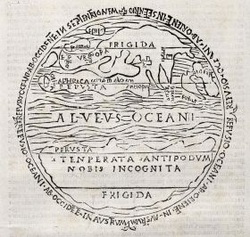
Opening at the State Library of NSW from 3rd December 2011, the exhibition 'Finding Antactica' displays over 100 maps dating from the 15th to 20th centuries as well as many Antarctic artefacts including photographs, sketchbooks, and sledging diaries.
The exhibition includes previously unseeen AAE maps and photographs, the sketchbook of Charles Turnbull Harrison, one of the orginal AAE sledging flags, and Frank Hurley's diary.
The oral history of Frank Henry Moyes, a member of the little known Western party based on the Shackleton Ice Shelf can also beheard, providing an amazing insight into Antarctic life and associated hardships.
All items in the exhibtion will be digitalised and available on line at www.sl.nsw.gov.au
When; December 3 2011 to February 19 2012.
Where: State Libray of NSW, Sydney
Cost: free
posted 20/10/2011
The exhibition includes previously unseeen AAE maps and photographs, the sketchbook of Charles Turnbull Harrison, one of the orginal AAE sledging flags, and Frank Hurley's diary.
The oral history of Frank Henry Moyes, a member of the little known Western party based on the Shackleton Ice Shelf can also beheard, providing an amazing insight into Antarctic life and associated hardships.
All items in the exhibtion will be digitalised and available on line at www.sl.nsw.gov.au
When; December 3 2011 to February 19 2012.
Where: State Libray of NSW, Sydney
Cost: free
posted 20/10/2011
Kiwi Antarctic scientist honoured for global perspective
Professor Peter Barrett from Victoria University of Wellington, New Zealand, has been recognised by the world's oldest geological society for his work on Antarctica's climate history and appreciating its global significance. The Victoria Professor has been made an Honorary Fellow of the prestigious Geological Society of London - an honour currently held by only 70 geoscientists worldwide.
As a PhD student in the 1960s, Professor Barrett discovered the first remains of a four-footed animal in the Transantarctic Mountains-supporting the then controversial theory of continental drift. Since then, his curiosity and passion for Antarctica's geological past has led him from studying strata in the Transantarctic Mountains to drilling off the Antarctic coast for climate and ice sheet history.
"The Fellowship is a truly significant honour. I am particularly pleased to be associated with the society for its recent statement on climate change. I certainly share their view that it is "...a defining issue of our time, whose full understanding needs geology's long perspective," says Professor Barrett.
Professor Barrett was Founding Director of the Antarctic Research Centre (1973-2007) and is currently Deputy Director of the New Zealand Climate Change Research Institute at Victoria University. Read more here...
posted 21/10/2011
Professor Peter Barrett from Victoria University of Wellington, New Zealand, has been recognised by the world's oldest geological society for his work on Antarctica's climate history and appreciating its global significance. The Victoria Professor has been made an Honorary Fellow of the prestigious Geological Society of London - an honour currently held by only 70 geoscientists worldwide.
As a PhD student in the 1960s, Professor Barrett discovered the first remains of a four-footed animal in the Transantarctic Mountains-supporting the then controversial theory of continental drift. Since then, his curiosity and passion for Antarctica's geological past has led him from studying strata in the Transantarctic Mountains to drilling off the Antarctic coast for climate and ice sheet history.
"The Fellowship is a truly significant honour. I am particularly pleased to be associated with the society for its recent statement on climate change. I certainly share their view that it is "...a defining issue of our time, whose full understanding needs geology's long perspective," says Professor Barrett.
Professor Barrett was Founding Director of the Antarctic Research Centre (1973-2007) and is currently Deputy Director of the New Zealand Climate Change Research Institute at Victoria University. Read more here...
posted 21/10/2011
NASA continues survey of Antarctica's changing ice
NASA's Operation IceBridge mission comprises the largest airborne research campaign ever flown over Earth's polar region. The mission is designed to continue critical ice sheet measurements in a period between active satellite missions and help scientists understand how much the major ice sheets of Greenland and Antarctica could contribute to sea level rise. Read the full article on the NASA website
NASA's Operation IceBridge mission comprises the largest airborne research campaign ever flown over Earth's polar region. The mission is designed to continue critical ice sheet measurements in a period between active satellite missions and help scientists understand how much the major ice sheets of Greenland and Antarctica could contribute to sea level rise. Read the full article on the NASA website
Island rabbit cull going well but bird deaths noted

A report from the Tasmanian Mercury Newspaper
by DAVID KILLICK | October 19, 2011 12.01am
'...FEWER than 30 of the 150,000 rabbits that once infested Macquarie Island are still alive after a joint state-federal eradication program.
A Senate estimates committee heard yesterday that a $30 million program of baiting, shooting and detector dogs had resulted in the almost complete eradication of rabbits from the World Heritage-listed sub-Antarctic island 1500km south of Hobart.
The rabbits and introduced rats and mice had a devastating effect on wildlife on the island by overgrazing native vegetation, which in turn affected nesting sites. Their numbers boomed after a cat eradication program on the island.
Liberal senator Eric Abetz said the deaths of 2190 sea birds during the three-year program was a disaster. "This is a complete debacle which just goes from bad to worse," he said after the hearing. "The collateral damage seems worse than the problem the Government was seeking to eradicate."
Senator Abetz said the real number of deaths was much higher. While 2190 bird carcasses had been discovered on Macquarie Island, more had probably died at sea.
Premier Lara Giddings said the rabbit eradication program was necessary to protect the island's bird life. "Nobody wants to see wildlife hurt or damaged by programs. However, what is Eric Abetz's alternative?' she said. "Those same birds, the same wildlife, were absolutely threatened by the destruction of the natural habitat on Macquarie Island because of rabbit grazing."
Environment Minister Tony Burke said the bird deaths were inevitable. "When you do baiting, the fact is you will lose some of the birds you are wanting to protect," he said. "But if you don't do baiting, feral animals like rabbits and rodents will keep wiping everything out." Mr Burke said up to 24 bird species ultimately stood to benefit from the eradication program...'
[email protected]
by DAVID KILLICK | October 19, 2011 12.01am
'...FEWER than 30 of the 150,000 rabbits that once infested Macquarie Island are still alive after a joint state-federal eradication program.
A Senate estimates committee heard yesterday that a $30 million program of baiting, shooting and detector dogs had resulted in the almost complete eradication of rabbits from the World Heritage-listed sub-Antarctic island 1500km south of Hobart.
The rabbits and introduced rats and mice had a devastating effect on wildlife on the island by overgrazing native vegetation, which in turn affected nesting sites. Their numbers boomed after a cat eradication program on the island.
Liberal senator Eric Abetz said the deaths of 2190 sea birds during the three-year program was a disaster. "This is a complete debacle which just goes from bad to worse," he said after the hearing. "The collateral damage seems worse than the problem the Government was seeking to eradicate."
Senator Abetz said the real number of deaths was much higher. While 2190 bird carcasses had been discovered on Macquarie Island, more had probably died at sea.
Premier Lara Giddings said the rabbit eradication program was necessary to protect the island's bird life. "Nobody wants to see wildlife hurt or damaged by programs. However, what is Eric Abetz's alternative?' she said. "Those same birds, the same wildlife, were absolutely threatened by the destruction of the natural habitat on Macquarie Island because of rabbit grazing."
Environment Minister Tony Burke said the bird deaths were inevitable. "When you do baiting, the fact is you will lose some of the birds you are wanting to protect," he said. "But if you don't do baiting, feral animals like rabbits and rodents will keep wiping everything out." Mr Burke said up to 24 bird species ultimately stood to benefit from the eradication program...'
[email protected]
Commemorative Flotilla for AAE centenary 2nd Dec
One hundred years to the day since a 29-year-old geologist, Douglas Mawson, sailed from Hobart with the Australian Antarctic Expedition, three Antarctic cruise ships will depart Hobart for Commonwealth Bay and Mawson’s Huts at Cape Denison. A flotilla of international guests and local yachts will accompany the ships down the River Derwent to the Iron Pot, the traditional beginning of the long journey south.
If you would like to register as a participant please contact the commodore of your local Tasmanian sailing /yacht club. If you are not a member of a local sailing club a registration form can be accessed here...
posted 21/10/2011
One hundred years to the day since a 29-year-old geologist, Douglas Mawson, sailed from Hobart with the Australian Antarctic Expedition, three Antarctic cruise ships will depart Hobart for Commonwealth Bay and Mawson’s Huts at Cape Denison. A flotilla of international guests and local yachts will accompany the ships down the River Derwent to the Iron Pot, the traditional beginning of the long journey south.
If you would like to register as a participant please contact the commodore of your local Tasmanian sailing /yacht club. If you are not a member of a local sailing club a registration form can be accessed here...
posted 21/10/2011
Mawson's Last Survivor: The story of Alf Howard

Alf Howard (1906-2010) sailed with legends of the heroic era of Antarctic exploration and became a legend in his own lifetime. He was the last surviving member of Sir Douglas Mawson’s 1929-1931 British, Australian and New Zealand Antarctic Research Expedition (BANZARE) and was also the last survivor to have served aboard the coal-fired three-masted wooden ship Discovery built for Captain Robert Falcon Scott’s 1901-1904 Antarctic odyssey.
As a young chemist and hydrologist on board the Discovery, going south with Mawson was the catalyst for his long distinguished career with the Commonwealth Scientific and Industrial Research Organisation (CSIRO). Subsequently, at the University of Queensland, he was awarded degrees in physics and linguistics and completed a PhD in psychology. For more than twenty years he designed computer programs and provided statistical advice to postgraduate students and staff until he was 97. The call of Antarctica was too strong to resist and during the 1990s he returned four times.
Written by Anna Bemrose with some contributions by ANARE Club members, Mawson’s Last Survivor, The Story of Dr Alf Howard AM, is a fascinating account of a humble Antarctic pioneer with a wry sense of humour who was the last link with those heroic early twentieth century expeditions which continue to excite the public imagination.
The book will be launched on 8 November 2011 at 1:30pm for 2pm-3pm in Auditorium 2 at the State Library of Queensland, Brisbane. ANARE Club Members are welcome to attend.
Mawson’s Last Survivor, The Story of Dr Alf Howard AM has 260pages with 57 illustrations (including a number of photos by Frank Hurley - the official photographer for Mawson's 1929-31 BANZARE)- and will retail around AU$32. The ISBN number is 9781921920189 (pbk.)
posted 20/10/2011
As a young chemist and hydrologist on board the Discovery, going south with Mawson was the catalyst for his long distinguished career with the Commonwealth Scientific and Industrial Research Organisation (CSIRO). Subsequently, at the University of Queensland, he was awarded degrees in physics and linguistics and completed a PhD in psychology. For more than twenty years he designed computer programs and provided statistical advice to postgraduate students and staff until he was 97. The call of Antarctica was too strong to resist and during the 1990s he returned four times.
Written by Anna Bemrose with some contributions by ANARE Club members, Mawson’s Last Survivor, The Story of Dr Alf Howard AM, is a fascinating account of a humble Antarctic pioneer with a wry sense of humour who was the last link with those heroic early twentieth century expeditions which continue to excite the public imagination.
The book will be launched on 8 November 2011 at 1:30pm for 2pm-3pm in Auditorium 2 at the State Library of Queensland, Brisbane. ANARE Club Members are welcome to attend.
Mawson’s Last Survivor, The Story of Dr Alf Howard AM has 260pages with 57 illustrations (including a number of photos by Frank Hurley - the official photographer for Mawson's 1929-31 BANZARE)- and will retail around AU$32. The ISBN number is 9781921920189 (pbk.)
posted 20/10/2011
Antarctic Arts Fellowship to tell story of first woman to see Antarctica
from AAD website
Environment Minister Tony Burke today announced Australian writer and academic Jesse Blackadder had received the 2011 Australian Antarctic Arts Fellowship.
The Gillard Government each year awards Australian Antarctic Arts Fellowships to enable those with a non-science focus to experience Antarctica first-hand so that they may communicate this unique experience and understanding to other Australians.
Mr Burke said Ms Blackadder would use the Fellowship to work on several projects but in particular to research an historic novel about Ingrid Christensen, the first woman to see Antarctica. The novel is part of Ms Blackadder’s Doctor of Creative Arts project at the University of Western Sydney. Read more...
posted 19/10/2011
from AAD website
Environment Minister Tony Burke today announced Australian writer and academic Jesse Blackadder had received the 2011 Australian Antarctic Arts Fellowship.
The Gillard Government each year awards Australian Antarctic Arts Fellowships to enable those with a non-science focus to experience Antarctica first-hand so that they may communicate this unique experience and understanding to other Australians.
Mr Burke said Ms Blackadder would use the Fellowship to work on several projects but in particular to research an historic novel about Ingrid Christensen, the first woman to see Antarctica. The novel is part of Ms Blackadder’s Doctor of Creative Arts project at the University of Western Sydney. Read more...
posted 19/10/2011
BBC Frozen Planet Documentary
The new documentary 'Frozen Planet' will screen on BBC One on the 26th October 2011.
The show includes footage from the Adelie penguin colony on Ross Island, Antarctica which can be viewed on -line here...
The team spent 4 months at the penguin colony and captured footage of a male penguin stealing stones from its neighbour's nest.
You wouldn't have thought that it would be all that hard but Jeff Wilson, director of the shoot, explained that while he and the cameraman, Mark Smith, knew that the birds occasionally stole stones from one another, it was a challenge to capture the moment in the chaos of a busy penguin colony.
..."So poor old Mark, was crawling around and there were adelies constantly looking right down the barrel of his lens. It's appealing at first, but when it happens for the hundredth time as you're trying to get the shots you need, you start to lose patience.'
He added that the colony was "the most aurally exhausting place". "You're bombarded with sound," he recalled.
"There are 250,000 males building nests and on top of all the breeding penguins, you have groups of adolescent non-breeding penguins. They're just in the way causing trouble."
Each male adelie penguin build its nest just out of "pecking distance" of its neighbours. Mr Wilson likened the density of nests and the constant activity of the animals to a field of tents at a festival.
"Adelies are like festival-goers that have had too much caffeine," he said. "They're aggressive and hyperactive." Despite this, Mr Smith managed to capture a remarkable sequence, with one penguin repeatedly returning to its nest to add stones, apparently unaware of the fact that his neighbour would steal a stone every time his nest was unattended.
Hmmm, sound familiar?....
posted 20/10/2011
The new documentary 'Frozen Planet' will screen on BBC One on the 26th October 2011.
The show includes footage from the Adelie penguin colony on Ross Island, Antarctica which can be viewed on -line here...
The team spent 4 months at the penguin colony and captured footage of a male penguin stealing stones from its neighbour's nest.
You wouldn't have thought that it would be all that hard but Jeff Wilson, director of the shoot, explained that while he and the cameraman, Mark Smith, knew that the birds occasionally stole stones from one another, it was a challenge to capture the moment in the chaos of a busy penguin colony.
..."So poor old Mark, was crawling around and there were adelies constantly looking right down the barrel of his lens. It's appealing at first, but when it happens for the hundredth time as you're trying to get the shots you need, you start to lose patience.'
He added that the colony was "the most aurally exhausting place". "You're bombarded with sound," he recalled.
"There are 250,000 males building nests and on top of all the breeding penguins, you have groups of adolescent non-breeding penguins. They're just in the way causing trouble."
Each male adelie penguin build its nest just out of "pecking distance" of its neighbours. Mr Wilson likened the density of nests and the constant activity of the animals to a field of tents at a festival.
"Adelies are like festival-goers that have had too much caffeine," he said. "They're aggressive and hyperactive." Despite this, Mr Smith managed to capture a remarkable sequence, with one penguin repeatedly returning to its nest to add stones, apparently unaware of the fact that his neighbour would steal a stone every time his nest was unattended.
Hmmm, sound familiar?....
posted 20/10/2011
ANARE CLUB MCG TOUR AND LUNCH
The ANARE Club is organising lunch and a tour of the MCG and National Sports Museum. Friends and family are most welcome to attend.
When: Tuesday 8th November 2011
Where: MCG, Melbourne
Cost: $40 (Special ANARE Club price)
Includes a 2 course Xmas dinner in the Hugh Trumble Cafe at 12:30 pm
Suggested timetable:
11 am -12:15pm – Tour MCG
12:30-1:30 pm – Lunch
1:30 – 3 pm – Tour National Sports Museum
All Enquiries and Bookings to
1. Ian Mackie, MCG Guide
PO Box 139 Beaconsfield 3807
Ph: 03 59444124
or
2. Denise Allen
Social Secretary, ANARE Club
PO Box 133 Montmorency 3094 Mob. 0417 857 555
A booking form can be accessed here...
Limited Edition Mawson Medallion
The Royal Australian Mint is producing the Mawson Medallion for Mawson's hut Foundation a limited edition of 1500 fine silver medallions which feature the famous balaclava clad head of Sir Douglas Mawson and the huts at Cape Denison. Further details available here ....
The Royal Australian Mint is producing the Mawson Medallion for Mawson's hut Foundation a limited edition of 1500 fine silver medallions which feature the famous balaclava clad head of Sir Douglas Mawson and the huts at Cape Denison. Further details available here ....
Aurora Expeditions Special Offers

Aurora expeditions has advised of a special offer for ANARE Club members and family /friends.
15% OFF – South Georgia & Antarctic Peninsula (Fly/Sail)
Departing 12-28 November 2011
15% OFF- Antarctic Peninsula Springtime
Departing 8 – 19 December 2011
This offer is available for new, direct bookings only.
Further details of the voyages can be accessed on their website.
For more information and to book, call Mael on +61 2 9252 1033 or email [email protected]
Aurora Expeditions is a supporter of the ANARE Club oral history project.
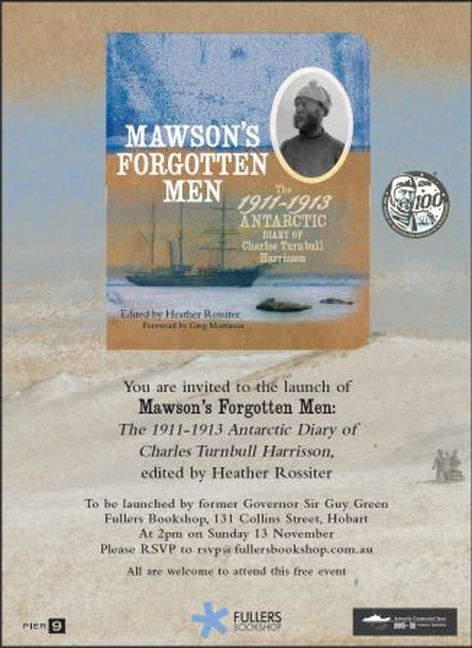
Book launch in Hobart, Sunday 13th November at 2pm, email address
[email protected]
if you are thinking of going
See Polarity this week at the Melbourne Fringe Festival

Exquisite, encrypted, compressed, crumbling. Polarity explores the dynamic movement and extreme nature of Antarctic ice. Through moving bodies, raw sounds of Antarctic ice and shifting shapes, polar icescapes dance in the cityscape, reflecting our deep connection to and impact upon the continent of ice.
Tina Evans received an Australian Antarctic Arts Fellowship and sailed to Antarctica in 2010. From this spectacular experience she has created Polarity. Collaborating sound artist Philip Samartzis' soundscape is made entirely of real recordings of Antarctic ice.
View the trailer: www.youtube.com/watch?v=x7Ea19HVEOU
Polarity
When: 8pm October 5-8
Where:Federation Square Car Park Roof
Cost: Tickets $18 full $15 concession
Book at www.melbournefringe.com.au
Tina Evans received an Australian Antarctic Arts Fellowship and sailed to Antarctica in 2010. From this spectacular experience she has created Polarity. Collaborating sound artist Philip Samartzis' soundscape is made entirely of real recordings of Antarctic ice.
View the trailer: www.youtube.com/watch?v=x7Ea19HVEOU
Polarity
When: 8pm October 5-8
Where:Federation Square Car Park Roof
Cost: Tickets $18 full $15 concession
Book at www.melbournefringe.com.au
AGM - meeting held on Thursday 8th Sep.
Office Bearers are
The Tas Branch New President/Treasurer - Noel Barrett.
Assistant Treasurer/ Social Sec - Michael Ooyendyk
Expeditioner Briefings - Marilyn Boydell and Barbara Frankel
Web Master - Ian Mclean
Northern Rep - Peter Cutler
Social secretary -Michael ooyendyk and ingrid McGaughey
Assistant Treasurer/ Social Sec - Michael Ooyendyk
Expeditioner Briefings - Marilyn Boydell and Barbara Frankel
Web Master - Ian Mclean
Northern Rep - Peter Cutler
Social secretary -Michael ooyendyk and ingrid McGaughey
ANARE CLUB TAS BRANCH AGM...
A Tasmanian branch ANARE Club meeting is planned for Thursday 8 Sep September at 19.30 at Hadley’s Hotel main bar /lounge. (Address: 34 Murray Street, Hobart). We are keen to involve as many people as possible so that the branch reflects our members’ interests, so please come along. The meeting usually goes for 60-70 minutes, and also provides an opportunity for catching up with other ANARE Club members.
Issues to be covered include:
This year I am stepping down as president for personal reasons.
Michael Carr
Issues to be covered include:
- Discussion of liaison with departing AAD expeditioners to provide information on the ANARE Club, including membership and activities.
- 2011 Midwinter dinner –a discussion of the night with a view to the important 2012 dinner
- Future social events
- Tasmanian branch finances
- Election of a branch committee including Treasurer, Social Secretary (organiser of the Tasmanian Midwinter dinner), Webmaster, Representative for the north of the state and President.
This year I am stepping down as president for personal reasons.
Michael Carr
Looking for info on the Wilkes Piano
A message from Barbara Frankel:
'...I recall reading (or someone telling me) about a piano frozen into a room at Wilkes, and that it could still be seen through the crystal clear ice that now fills the room. Can anyone tell me where this is recorded, or remembers seeing it, or has photos?
My father (Ted Smith) is collecting stories about musical instruments down south – he was responsible for getting a piano to Signey in the 1960’s with BAS (while he was Chief Biologist) and wants to find more references to instruments, particularly pianos. There isn’t much in ‘The Silence Calling’, so please point me in the right direction!...'
Barbara Frankel
If anybody has any information can they contact Barbara directly on: 03 6267 1080
A message from Barbara Frankel:
'...I recall reading (or someone telling me) about a piano frozen into a room at Wilkes, and that it could still be seen through the crystal clear ice that now fills the room. Can anyone tell me where this is recorded, or remembers seeing it, or has photos?
My father (Ted Smith) is collecting stories about musical instruments down south – he was responsible for getting a piano to Signey in the 1960’s with BAS (while he was Chief Biologist) and wants to find more references to instruments, particularly pianos. There isn’t much in ‘The Silence Calling’, so please point me in the right direction!...'
Barbara Frankel
If anybody has any information can they contact Barbara directly on: 03 6267 1080
Looking for AAE descendents
from
Flip (Hurley) Byrnes, the great granddaughter of Antarctic photographer Frank Hurley got in contact with The Diary a couple of days ago to tell us that in December, the 100th anniversary of Douglas Mawson's 1911 expedition, there is to be a centenary dinner in Tasmania and that as many relatives as possible of the crew members are invited to attend. But the thing is they're really, really hard to find. ''Many of them have a life 'Unknown' after the expedition,'' Byrnes told us. ''A surprising number had no children, which means I am digging back 100 years to find siblings. In particular, I am searching for relatives of Charles Laseron, died 1959, and Walter Hannam, died 1964, both Sydneysiders. It would be fantastic to have these Australian explorers represented. How sad, only 100 years on, if nobody is there to fly the flag for their exploits.'' Let us know
Read more: http://www.smh.com.au/national/the-diary/with-friands-like-these-20110801-1i847.html#ixzz1Tpzl9liD
from
Flip (Hurley) Byrnes, the great granddaughter of Antarctic photographer Frank Hurley got in contact with The Diary a couple of days ago to tell us that in December, the 100th anniversary of Douglas Mawson's 1911 expedition, there is to be a centenary dinner in Tasmania and that as many relatives as possible of the crew members are invited to attend. But the thing is they're really, really hard to find. ''Many of them have a life 'Unknown' after the expedition,'' Byrnes told us. ''A surprising number had no children, which means I am digging back 100 years to find siblings. In particular, I am searching for relatives of Charles Laseron, died 1959, and Walter Hannam, died 1964, both Sydneysiders. It would be fantastic to have these Australian explorers represented. How sad, only 100 years on, if nobody is there to fly the flag for their exploits.'' Let us know
Read more: http://www.smh.com.au/national/the-diary/with-friands-like-these-20110801-1i847.html#ixzz1Tpzl9liD
Book Launch @Fullers:
A hostile beauty. Life on Macquarie Island
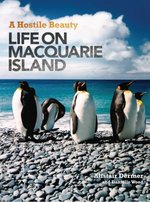
Senator Bob Brown will be launching this new book on Macquarie Island at the Fullers Bookshop in Hobart on September 11 at 2 pm.
If you plan to attend please rsvp at [email protected]
The book showcases stunning photography by Alistair Dermer with words by Danielle Woods.
Further details on the book can be accessed on the Antarctic book page...
If you plan to attend please rsvp at [email protected]
The book showcases stunning photography by Alistair Dermer with words by Danielle Woods.
Further details on the book can be accessed on the Antarctic book page...
Canadian Arctic photo display at Cradle Mountain

The Cradle Mountain Parks and Wildlife office is hosting a display of photographic images of Canada's arctic wilderness.
The photographs were predominantly taken in the Quttinipaaq National Park which spans the northern portion of Ellesmere Island, Nunavat and is only 720km from the North Pole.
This area has recently been submitted for world heritage listing.
The photographs were predominantly taken in the Quttinipaaq National Park which spans the northern portion of Ellesmere Island, Nunavat and is only 720km from the North Pole.
This area has recently been submitted for world heritage listing.
Oral history project update
As of 30th August 2011 44 oral history recordings have been completed over an 8 month period.
Participants to date include:
Tas: Bob Dingle, Adrian Dean, Dave McCormack, Marty Passingham, Mike Webb, Knowles Kerry, Louise Crossley, Michael Ooyendyk, Peter King, David Challis, Noel Barrett, Hans Brinkies, Barry Becker, George Cresswell, David Johns, Nod Parsons, Joe Brennan, Kenny Smith, Dave Waterhouse, Mark Milnes, Pat Quilty, Des Lugg, Bill Budd, Trevor Cowell, Peter Cutler, Jim Semmens, Ian Allison, Eddie Firth, Brian Joyce.
Victoria: Ray McMahon, Jack Ward, Enid Borshman, Fred Elliott, Richard McNair, Norm Tame, Ken Shennan, George Casasayas, Fritz Van Hulssen.
NSW/Canberra: Rex Filson, Susan Filson, Kent Keith, Ian McLeod, Bill Storer, Dick Thompson.
As seen the majority of ‘conversations’ are from Tasmania, although there are a few from Victoria, New South Wales and Canberra which have been done on an opportunistic basis. I would like to thank everyone for their time, hospitality and kindness...I have very much enjoyed my time talking with you.
A further 5 Tasmanian interviews are planned for the coming 2 weeks including Mike Sherwood, Martin Betts, Suzanne Stallman, Kenn Batt and Bruce Eyers, as well as further time with Ian Allison, Des Lugg and Pat Quilty.
A number of others have already expressed interest, and it is anticipated that further recordings will be made in Tasmania in December 2011-January 2012. Please contact me if you are interested in participating either to interview or be interviewed. It's run as more as a conversation than a formal interview.
A call for volunteer subscribers has had a small response to date. Ros Shennan, Bill Storer, Michelle Hollister , Elizabeth Chipman, and Jan Adolph have volunteered to date. (with sincere thanks!) If anyone else would like to participate please contact Ingrid Mcgaughey
The recording equipment is returning to Victoria in mid September 2011 so some further oral histories can be done there. At this stage Ian Toohill, Ray McMahon and Brett Free have expressed interest. A notice was placed in the previous Aurora and on the website asking that members contact the Secretary ANARE Club to book the equipment for other states if interested.
posted 30/8/2011
As of 30th August 2011 44 oral history recordings have been completed over an 8 month period.
Participants to date include:
Tas: Bob Dingle, Adrian Dean, Dave McCormack, Marty Passingham, Mike Webb, Knowles Kerry, Louise Crossley, Michael Ooyendyk, Peter King, David Challis, Noel Barrett, Hans Brinkies, Barry Becker, George Cresswell, David Johns, Nod Parsons, Joe Brennan, Kenny Smith, Dave Waterhouse, Mark Milnes, Pat Quilty, Des Lugg, Bill Budd, Trevor Cowell, Peter Cutler, Jim Semmens, Ian Allison, Eddie Firth, Brian Joyce.
Victoria: Ray McMahon, Jack Ward, Enid Borshman, Fred Elliott, Richard McNair, Norm Tame, Ken Shennan, George Casasayas, Fritz Van Hulssen.
NSW/Canberra: Rex Filson, Susan Filson, Kent Keith, Ian McLeod, Bill Storer, Dick Thompson.
As seen the majority of ‘conversations’ are from Tasmania, although there are a few from Victoria, New South Wales and Canberra which have been done on an opportunistic basis. I would like to thank everyone for their time, hospitality and kindness...I have very much enjoyed my time talking with you.
A further 5 Tasmanian interviews are planned for the coming 2 weeks including Mike Sherwood, Martin Betts, Suzanne Stallman, Kenn Batt and Bruce Eyers, as well as further time with Ian Allison, Des Lugg and Pat Quilty.
A number of others have already expressed interest, and it is anticipated that further recordings will be made in Tasmania in December 2011-January 2012. Please contact me if you are interested in participating either to interview or be interviewed. It's run as more as a conversation than a formal interview.
A call for volunteer subscribers has had a small response to date. Ros Shennan, Bill Storer, Michelle Hollister , Elizabeth Chipman, and Jan Adolph have volunteered to date. (with sincere thanks!) If anyone else would like to participate please contact Ingrid Mcgaughey
The recording equipment is returning to Victoria in mid September 2011 so some further oral histories can be done there. At this stage Ian Toohill, Ray McMahon and Brett Free have expressed interest. A notice was placed in the previous Aurora and on the website asking that members contact the Secretary ANARE Club to book the equipment for other states if interested.
posted 30/8/2011
South Africa: Antarctic Legacy Project takes shape
by Munyaradzi Makoni
The considerable role South African researchers have played in scientific, biological and meteorological discoveries in the sub-Antarctic Ocean lacks full recognition. But memories that lay scattered in national archives, personal diaries and mementos will now be accessible through a project to identify, digitise and archive this historical heritage online.
More than 100,000 pages of records – including an estimated 30,000 maps, drawings, photographs, slides and oral history interviews – will become accessible in the global public domain when the Antarctic Legacy Project becomes fully operational by the end of 2012.
The Antarctic Legacy Project is funded by the Department of Science and Technology-National Research Foundation (DST-NRF), and run in association with the department of historical studies and the Animal Demography Unit at the University of Cape Town, and the DST-NRF Centre of Excellence for Invasion Biology (CIB) based at Stellenbosch University.
The funding for both projects started in 2008 and runs until the end of this year. It totals R2.8 million (US$400,000), according to Candice Steele, programme director in knowledge fields development at the NRF, which administers the funds.
"This funding investment has been explicitly made to further stimulate and develop research in the social sciences, law and humanities fields within the context of the South African National Antarctic Programme," Steele said. Read more...
by Munyaradzi Makoni
The considerable role South African researchers have played in scientific, biological and meteorological discoveries in the sub-Antarctic Ocean lacks full recognition. But memories that lay scattered in national archives, personal diaries and mementos will now be accessible through a project to identify, digitise and archive this historical heritage online.
More than 100,000 pages of records – including an estimated 30,000 maps, drawings, photographs, slides and oral history interviews – will become accessible in the global public domain when the Antarctic Legacy Project becomes fully operational by the end of 2012.
The Antarctic Legacy Project is funded by the Department of Science and Technology-National Research Foundation (DST-NRF), and run in association with the department of historical studies and the Animal Demography Unit at the University of Cape Town, and the DST-NRF Centre of Excellence for Invasion Biology (CIB) based at Stellenbosch University.
The funding for both projects started in 2008 and runs until the end of this year. It totals R2.8 million (US$400,000), according to Candice Steele, programme director in knowledge fields development at the NRF, which administers the funds.
"This funding investment has been explicitly made to further stimulate and develop research in the social sciences, law and humanities fields within the context of the South African National Antarctic Programme," Steele said. Read more...
US finds icebreaker for 2011/12 program
from US Antarctic program website
The National Science Foundation (NSF) has announced that it has reached an agreement with a Russian company to charter a diesel icebreaker, ending weeks of speculation about whether the U.S. Antarctic Program (USAP) would be without an icebreaker for the 2011-12 summer field season.
NSF signed a one-year contract, with an option for additional years, with the Murmansk Shipping Co. to use the Canadian-built icebreaker, Vladimir Ignatyuk, according to an NSF press release issued on Aug. 25. Built in 1983, Ignatyuk currently provides icebreaking service to other national Antarctic programs including India.
The USAP requires the services of an icebreaker each year to cut a channel through the annual sea ice that fronts its largest research base at McMurdo Station on Ross Island. The channel allows fuel and cargo vessels, escorted by the icebreaker, to reach the station’s ice pier. The 5-million-gallon fuel resupply is particularly critical to support the science missions based out of McMurdo and South Pole stations. Read more....
from US Antarctic program website
The National Science Foundation (NSF) has announced that it has reached an agreement with a Russian company to charter a diesel icebreaker, ending weeks of speculation about whether the U.S. Antarctic Program (USAP) would be without an icebreaker for the 2011-12 summer field season.
NSF signed a one-year contract, with an option for additional years, with the Murmansk Shipping Co. to use the Canadian-built icebreaker, Vladimir Ignatyuk, according to an NSF press release issued on Aug. 25. Built in 1983, Ignatyuk currently provides icebreaking service to other national Antarctic programs including India.
The USAP requires the services of an icebreaker each year to cut a channel through the annual sea ice that fronts its largest research base at McMurdo Station on Ross Island. The channel allows fuel and cargo vessels, escorted by the icebreaker, to reach the station’s ice pier. The 5-million-gallon fuel resupply is particularly critical to support the science missions based out of McMurdo and South Pole stations. Read more....
Gordon Brown Melbourne display extended
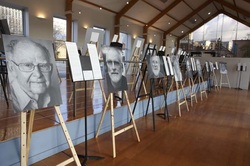
Part of the display at the Hobart waterside pavilion.
Susan has advised us that her display 'Down South: Australian Tradies in Antarctica' has been extended until 29th September at the World Trade Centre.
It then travels across town to the Melbourne Town Hall from the 2 -9th October 2011. It's well worth alook...or even three....
It then travels across town to the Melbourne Town Hall from the 2 -9th October 2011. It's well worth alook...or even three....
If in Sydney...

The Scott Exhibition exhibition is also a great display.
The Natural History Museum, London, the Canterbury Museum, Christchurch, New Zealand and the Antarctic Heritage Trust, New Zealand, have collaborated to create an international travelling exhibition. The premier venue for this unique exhibition is the Australian National Maritime Museum, Sydney, New South Wales.
The display is informative and interesting... and icludes are some lovely personal letters from expedition members and a number of short documentary films. The highlight for me was reading the last 0-20 pages of an electronic version of Scott's diary -harrowing reading, and all the more poignant as you decipher the hand writing...
When: 17 June - 16 October 2011
Where: National Maritime Museum, Sydney
Cost: free
The Natural History Museum, London, the Canterbury Museum, Christchurch, New Zealand and the Antarctic Heritage Trust, New Zealand, have collaborated to create an international travelling exhibition. The premier venue for this unique exhibition is the Australian National Maritime Museum, Sydney, New South Wales.
The display is informative and interesting... and icludes are some lovely personal letters from expedition members and a number of short documentary films. The highlight for me was reading the last 0-20 pages of an electronic version of Scott's diary -harrowing reading, and all the more poignant as you decipher the hand writing...
When: 17 June - 16 October 2011
Where: National Maritime Museum, Sydney
Cost: free
East Arctica /North America link...a Continental connection
from USA antarctic proram website..
Research paper suggests East Antarctica and North American once linked From staff reports Posted August 26, 2011 An international team of researchers has found evidence that parts of North America and Antarctica were connected 1.1 billion years ago.
“I can go to the Franklin Mountains in West Texas and stand next to what was once part of Coats Land in Antarctica,” said Staci Loewy, a geochemist at California State University, Bakersfield , referring to a stretch of East Antarctica along the Weddell Sea....
Loewy and her colleagues discovered that rocks collected from both locations have the exact same composition of lead isotopes. Earlier analyses showed the rocks were the same age and had the same chemical and geologic properties. The find offers further evidence for the so-called SWEAT (Southwest United States-East Antarctica) hypothesis. The theory suggests that ancestral North America and East Antarctica were joined in an earlier supercontinent called Rodinia. Read more...
from USA antarctic proram website..
Research paper suggests East Antarctica and North American once linked From staff reports Posted August 26, 2011 An international team of researchers has found evidence that parts of North America and Antarctica were connected 1.1 billion years ago.
“I can go to the Franklin Mountains in West Texas and stand next to what was once part of Coats Land in Antarctica,” said Staci Loewy, a geochemist at California State University, Bakersfield , referring to a stretch of East Antarctica along the Weddell Sea....
Loewy and her colleagues discovered that rocks collected from both locations have the exact same composition of lead isotopes. Earlier analyses showed the rocks were the same age and had the same chemical and geologic properties. The find offers further evidence for the so-called SWEAT (Southwest United States-East Antarctica) hypothesis. The theory suggests that ancestral North America and East Antarctica were joined in an earlier supercontinent called Rodinia. Read more...
AAE centenary stamps
Rosie Layton (AAD) and Bill Storer (Q51, MI 54) have sent reminders about the new set of stamps commemorating the AAE centenary. Five stamps will be released each year for the next 4 years, forming a comprehensive philatelic overview. The first set of five stamps was be released on the 2nd August 2011. The stamp issue was released on 2 August 2011. The stamps and associated products will be on sale for 6 months from the first day of issue and the first day cover is available for one month only from the first day of issue. Further information can be accessed here...
Stamps can be purchased online here...
Bill also advises that Australian Antarctic Territory base covers will be released on October 28th. See page 25 of the stamp bulletin 312.
posted 30/8/2011
Rosie Layton (AAD) and Bill Storer (Q51, MI 54) have sent reminders about the new set of stamps commemorating the AAE centenary. Five stamps will be released each year for the next 4 years, forming a comprehensive philatelic overview. The first set of five stamps was be released on the 2nd August 2011. The stamp issue was released on 2 August 2011. The stamps and associated products will be on sale for 6 months from the first day of issue and the first day cover is available for one month only from the first day of issue. Further information can be accessed here...
Stamps can be purchased online here...
Bill also advises that Australian Antarctic Territory base covers will be released on October 28th. See page 25 of the stamp bulletin 312.
posted 30/8/2011
First complete map of Antarctica ice flow speed and direction
The first complete map of the speed and direction of ice flow in Antarctica will help scientists to track future sea-level increases, according to the team behind the project. Read more..
The first complete map of the speed and direction of ice flow in Antarctica will help scientists to track future sea-level increases, according to the team behind the project. Read more..
LOOKING FOR A TREASURER...A MESSAGE FROM THE PRES!
Members
The new National Council elected on 11 July will be holding our first meeting on 14 August in Melbourne.
At the AGM, we were unable to fill the postion of Treasurer, a vital role but one which is not as hard as it is reputed. You could give thought to raising your hand. A head for figures, an ability to work methodically, some experience with spreadsheets and perhaps with a program like Quikbooks is all that you need. You would be doing the Club a great service if you put your name forward. The National Council meets four times a year, and interstate travel, if needed, would be recompensed.
Get back to me at
Members
The new National Council elected on 11 July will be holding our first meeting on 14 August in Melbourne.
At the AGM, we were unable to fill the postion of Treasurer, a vital role but one which is not as hard as it is reputed. You could give thought to raising your hand. A head for figures, an ability to work methodically, some experience with spreadsheets and perhaps with a program like Quikbooks is all that you need. You would be doing the Club a great service if you put your name forward. The National Council meets four times a year, and interstate travel, if needed, would be recompensed.
Get back to me at
or on 02 9876 4224 if you are interested.
Cheers
David Ellyard
President 2011/12
ANARE Club Inc
Cheers
David Ellyard
President 2011/12
ANARE Club Inc
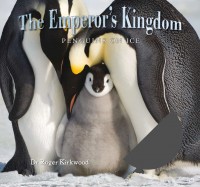
Roger Kirkwood released book.
Japanese Tsunami triggers ice shelf break
THE tsunami that struck Japan on March 11 propagated waves that hit an ice shelf in Antarctica 13,000 kilometres away, smashing parts of it into huge icebergs, the European Space Agency (ESA) said today. Read more...
Thanks to Susan Gordon Brown for link.
THE tsunami that struck Japan on March 11 propagated waves that hit an ice shelf in Antarctica 13,000 kilometres away, smashing parts of it into huge icebergs, the European Space Agency (ESA) said today. Read more...
Thanks to Susan Gordon Brown for link.
South Magnetic Pole Flag
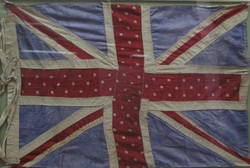
Pat Quilty recently sent us the photo of the very attractive flag that was taken to the South Magnetic Pole by David, Mawson and Mackay.
Pat wrote:
'...The expedition had a Union Jack supplied by the king and Shackleton had taken it south. To claim territory, the group needed a flag, so they made one from scraps of material. When it came to the red and white cross of St George, the only material available had polka dots; thus the flag is adorned that way and this is clear on the famous photograph. The flag came down through the David family and is now owned by the Australian Academy of Science...'
posted 10/9/2011
Pat wrote:
'...The expedition had a Union Jack supplied by the king and Shackleton had taken it south. To claim territory, the group needed a flag, so they made one from scraps of material. When it came to the red and white cross of St George, the only material available had polka dots; thus the flag is adorned that way and this is clear on the famous photograph. The flag came down through the David family and is now owned by the Australian Academy of Science...'
posted 10/9/2011
Polarity at the Melbourne Fringe Festival
A request for Support!
Tina Evans was the first dance artist ever selected for an Australian Antarctic Arts Fellowship. Fromthis spectacular experience she has created Polarity, a live performance that explores the dynamic movement and extreme nature of Antarctic ice. Through dance, soundscapes and shifting structuresmajestic polar icescapes will meld with the cityscape at Federation Square and reflect our deepconnection to and impact upon the continent of ice.
Tina is raising funds to assist with set, lighting, costume and venue costs associated with presenting Polarity. You are able make a tax deductible donation via the Australia Cultural Fund here: http://www.abaf.org.au/donors/artist-projects/tina-evans.html All donations greatly appreciated.
Polarity will be presented on October 5,6,7,8 at 8pm at Federation Square as part of the 2011 Melbourne Fringe Festival. Visit: http://tinaevansperformance.com
posted 10/9/2011
A request for Support!
Tina Evans was the first dance artist ever selected for an Australian Antarctic Arts Fellowship. Fromthis spectacular experience she has created Polarity, a live performance that explores the dynamic movement and extreme nature of Antarctic ice. Through dance, soundscapes and shifting structuresmajestic polar icescapes will meld with the cityscape at Federation Square and reflect our deepconnection to and impact upon the continent of ice.
Tina is raising funds to assist with set, lighting, costume and venue costs associated with presenting Polarity. You are able make a tax deductible donation via the Australia Cultural Fund here: http://www.abaf.org.au/donors/artist-projects/tina-evans.html All donations greatly appreciated.
Polarity will be presented on October 5,6,7,8 at 8pm at Federation Square as part of the 2011 Melbourne Fringe Festival. Visit: http://tinaevansperformance.com
posted 10/9/2011
And a special treat...

Rodney Charles is the wintering chef at Casey. Click here to access his you tube video showcasing penguin sculptures out of margarine...clever!!
Art at its highest level...food!
Go Rocket...
Art at its highest level...food!
Go Rocket...
75th Anniversary - Proclamation of the Australian Antarctic Territory - Celebration Symposium
A free public symposium will review Australia's territorial, political, scientific and cultural achievements in Antarctica and explore prospects for the Australian Antarctic Territory in the coming decades through the perspectives of a group of eminent speakers including current and former diplomats, prominent Australian adventurer Greg Mortimer, and noted historian Tom Griffiths, along with local Antarctic identities including Sir Guy Green. Light refreshments will be available for morning and afternoon teas and lunch. A reception will conclude the day's events.
The planned program can be accessed here...
When: 24th August 2011, 9am -5pm
Where: CSIRO auditorium, Castray Esplanade, Hobart
Cost: free
This symposium is jointly hosted by the Antarctic Climate and Ecosystems Cooperative Research Centre and the Institute for Marins and Antarctic Studies, University of Tasmania. For more information, contact Julia Jabour via email or 03 6226 2978
posted 9/9/2011
A free public symposium will review Australia's territorial, political, scientific and cultural achievements in Antarctica and explore prospects for the Australian Antarctic Territory in the coming decades through the perspectives of a group of eminent speakers including current and former diplomats, prominent Australian adventurer Greg Mortimer, and noted historian Tom Griffiths, along with local Antarctic identities including Sir Guy Green. Light refreshments will be available for morning and afternoon teas and lunch. A reception will conclude the day's events.
The planned program can be accessed here...
When: 24th August 2011, 9am -5pm
Where: CSIRO auditorium, Castray Esplanade, Hobart
Cost: free
This symposium is jointly hosted by the Antarctic Climate and Ecosystems Cooperative Research Centre and the Institute for Marins and Antarctic Studies, University of Tasmania. For more information, contact Julia Jabour via email or 03 6226 2978
posted 9/9/2011
New Mawson's Huts website

The AAD have set up a great website titled 'Home of the Blizzard: The Australasian Antarctic Expedition.
It is clearly set out in sections including Preparation, Voyage, Macquarie Island,Cape Denison, Western Party and Homecoming. The text is informative with many extracts from the diaries of expedition members. It would be nice to have a few more photographs though to illustrate the story...
Make sure you check out Peter Morse's Blizzard Interactive...compulsory viewing...
It is clearly set out in sections including Preparation, Voyage, Macquarie Island,Cape Denison, Western Party and Homecoming. The text is informative with many extracts from the diaries of expedition members. It would be nice to have a few more photographs though to illustrate the story...
Make sure you check out Peter Morse's Blizzard Interactive...compulsory viewing...
Dome A: Colder than Cold
from the AAD website...
Dome Argus is the highest and possibly coldest place in Antarctica. There's a hot chance that an automatic weather station at Dome A will record the world’s lowest surface temperature.
The lowest temperature ever recorded was -89.2°C in July 1983, at the Russian station Vostok, inland of Australia’s Casey station.
Dome A is nearly 600 m higher in elevation than Vostok and the coldest temperature recorded at Dome A was -82.5°C in July 2005.
Check here daily to see if the temperature can get colder than cold…
from the AAD website...
Dome Argus is the highest and possibly coldest place in Antarctica. There's a hot chance that an automatic weather station at Dome A will record the world’s lowest surface temperature.
The lowest temperature ever recorded was -89.2°C in July 1983, at the Russian station Vostok, inland of Australia’s Casey station.
Dome A is nearly 600 m higher in elevation than Vostok and the coldest temperature recorded at Dome A was -82.5°C in July 2005.
Check here daily to see if the temperature can get colder than cold…
3rd Sub-Antarctic Forum Update, Hobart 1-2 August
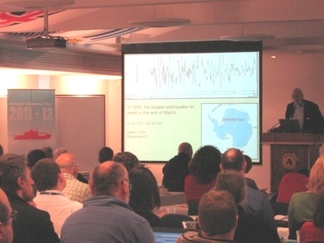
Pat Quilty presents. Photo by Antarctic Tasmania
By Jennie Whinam
Over 100 people (including many students) registered for the 3rd Sub-Antarctic Forum held in Hobart last week, following on from the initial forum in 2006 and a second forum in 2009. The forum was founded upon the conviction that the Sub-Antarctic islands and surrounding seas should not be viewed as a subdivision of Antarctica but as a distinct circumpolar domain which has its own unique character, scientific significance and management issues. Sir Guy Green is Convenor of the Organising Committee, which is run through Antarctic Tasmania. Delegates came from Australia, New Zealand, France, South Africa, the United Kingdom and Norway.
The theme of the third International Forum on the Sub-Antarctic was 'The future of the Sub-Antarctic region: its global significance and value'. Speakers covered a diversity of different topics that included the Sub-Antarctic:
· as a unique source of knowledge;
· as a climate change sentinel;
· as a source of human enrichment;
· as an economic and environmental asset;
· alien species management; and
· extreme events.
Feedback from delegates was that the forum covered a diverse and interesting range of topics. There is discussion about a possible publication that might include some of the presentations from the forum, as well as whether there will be a 4th forum.
posted 8/8/2011
Over 100 people (including many students) registered for the 3rd Sub-Antarctic Forum held in Hobart last week, following on from the initial forum in 2006 and a second forum in 2009. The forum was founded upon the conviction that the Sub-Antarctic islands and surrounding seas should not be viewed as a subdivision of Antarctica but as a distinct circumpolar domain which has its own unique character, scientific significance and management issues. Sir Guy Green is Convenor of the Organising Committee, which is run through Antarctic Tasmania. Delegates came from Australia, New Zealand, France, South Africa, the United Kingdom and Norway.
The theme of the third International Forum on the Sub-Antarctic was 'The future of the Sub-Antarctic region: its global significance and value'. Speakers covered a diversity of different topics that included the Sub-Antarctic:
· as a unique source of knowledge;
· as a climate change sentinel;
· as a source of human enrichment;
· as an economic and environmental asset;
· alien species management; and
· extreme events.
Feedback from delegates was that the forum covered a diverse and interesting range of topics. There is discussion about a possible publication that might include some of the presentations from the forum, as well as whether there will be a 4th forum.
posted 8/8/2011
Research posts in a cold place
The Weekend Australian (6/7th August, 2011) had an article showcasing scientific research opportunities in Antarctica. It can be accessed here...
posted 8/8/2011
The Weekend Australian (6/7th August, 2011) had an article showcasing scientific research opportunities in Antarctica. It can be accessed here...
posted 8/8/2011
Miltary urged to defend AAT
An article from the AGE 8/8/2011 by Daniel Flitton
AUSTRALIA is being urged to defend its claim to Antarctic territory in future military planning ahead of inevitable global competition for the icy continent's rich energy resources.
Antarctica is thought to have the world's third-largest oil reserves, locked away by an international treaty that preserves the territory from exploitation.
But a new Lowy Institute report released today warns other nations are eyeing the abundant energy reserves as new technology makes it easier to access the frozen continent. Read more...
posted 8/8/2011
An article from the AGE 8/8/2011 by Daniel Flitton
AUSTRALIA is being urged to defend its claim to Antarctic territory in future military planning ahead of inevitable global competition for the icy continent's rich energy resources.
Antarctica is thought to have the world's third-largest oil reserves, locked away by an international treaty that preserves the territory from exploitation.
But a new Lowy Institute report released today warns other nations are eyeing the abundant energy reserves as new technology makes it easier to access the frozen continent. Read more...
posted 8/8/2011
Scott Tas link in next Polar Record

ANARE Club member Pat Quilty and social historian Gillian Winter have combined to tell the story behind a lovely stained glass window in The Edge Anglican church (originally St Alban's) in the northern Hobart suburb of Claremont. The Church has a triptych stained glass window, whichich is a memorial to Robert Falcon Scott R.N.above its main altar. A photograph of the beautiful windows can be accessed here.
The window was promised by Mrs Edith Knight at the laying of the foundation stone of the church in July 1913, five months after Scott's death became known to the world.
Although Captain Scott had never visited Hobart, a large number of his relatives, including his wife Kathleen, lived here or visited.
Lady Ellison-Macartney attended the ceremony. She was Scott's sister and wife of the recently appointed governor of Tasmania, Sir William Ellison-Macartney. Other members of Scott's family were also living in Hobart at the time. The Ellison-Macartneys and their daughter Esther attended the dedication of the window on 17 October 1915.
Admiral E.R.G.R. Evans, second in command of Scott's expedition, spoke to The Royal Society of Tasmania on 29 March 1930, on the topic of Scott's last Antarctic venture.
New information suggests that the designer/manufacturer was Auguste Fischer of Melbourne, a close associate of the church's architect, Alan Cameron Walker of Hobart.
Titled 'Robert Falcon Scott: a Tasmanian Connection' the article is available online and will appear in the next edition of Polar Record.
posted 3/8/2011
The window was promised by Mrs Edith Knight at the laying of the foundation stone of the church in July 1913, five months after Scott's death became known to the world.
Although Captain Scott had never visited Hobart, a large number of his relatives, including his wife Kathleen, lived here or visited.
Lady Ellison-Macartney attended the ceremony. She was Scott's sister and wife of the recently appointed governor of Tasmania, Sir William Ellison-Macartney. Other members of Scott's family were also living in Hobart at the time. The Ellison-Macartneys and their daughter Esther attended the dedication of the window on 17 October 1915.
Admiral E.R.G.R. Evans, second in command of Scott's expedition, spoke to The Royal Society of Tasmania on 29 March 1930, on the topic of Scott's last Antarctic venture.
New information suggests that the designer/manufacturer was Auguste Fischer of Melbourne, a close associate of the church's architect, Alan Cameron Walker of Hobart.
Titled 'Robert Falcon Scott: a Tasmanian Connection' the article is available online and will appear in the next edition of Polar Record.
posted 3/8/2011
Antarctic-South Pole trek for Aussie adventurers
AFP August 2, 2011SYDNEY (AFP) - Two Australian adventurers said Tuesday they planned to attempt a new world record by walking from the edge of the Antarctic to the South Pole and back again.James Castrission, 29, and Justin Jones, 28 will make the trek in October to coincide with the 100-year centenary of Scott and Amundsen's famous race to the pole in 1911.
The pair, who created history in 2008 when they became the first people to kayak from Australia to New Zealand, will transport everything they need to survive the three-month endurance test in two 160-kilogramme (352-pound) sleds. Read more...
posted 6/8/2011
AFP August 2, 2011SYDNEY (AFP) - Two Australian adventurers said Tuesday they planned to attempt a new world record by walking from the edge of the Antarctic to the South Pole and back again.James Castrission, 29, and Justin Jones, 28 will make the trek in October to coincide with the 100-year centenary of Scott and Amundsen's famous race to the pole in 1911.
The pair, who created history in 2008 when they became the first people to kayak from Australia to New Zealand, will transport everything they need to survive the three-month endurance test in two 160-kilogramme (352-pound) sleds. Read more...
posted 6/8/2011
Underwater volcanoes mapped near Antarctica
By Andrea Mustain
A string of a dozen volcanoes, at least several of them active, has been found beneath the frigid seas near Antarctica, the first such discovery in that region.
Some of the peaks tower nearly 10,000 feet above the ocean floor — nearly tall enough to break the water's surface. Read more...
By Andrea Mustain
A string of a dozen volcanoes, at least several of them active, has been found beneath the frigid seas near Antarctica, the first such discovery in that region.
Some of the peaks tower nearly 10,000 feet above the ocean floor — nearly tall enough to break the water's surface. Read more...
'Success' in South Georgia rat eradication
By Jonathan Amos Science correspondent, BBC News
Conservationists say they are pleased with early efforts to kill rats on South Georgia, in what is the biggest rodent eradication campaign in history.
No-one really knows how many rats inhabit the island in the South Atlantic, but it could be millions. Introduced on the ships of sealers and whalers in the 19th and 20th Centuries, the rodents have had a devastating impact on local seabird populations.
But the laying of toxic bait in part of the island seems to have had success. Some 50 tonnes of rodenticide were spread by helicopters in March over a contained zone hemmed in by glaciers. Subsequent inspections on the ground found only dead rats.
The kill represented just the first phase in the project, and covered a mere 13% of the rat-infested land area of South Georgia. Read more...
posted 6/8/2011
By Jonathan Amos Science correspondent, BBC News
Conservationists say they are pleased with early efforts to kill rats on South Georgia, in what is the biggest rodent eradication campaign in history.
No-one really knows how many rats inhabit the island in the South Atlantic, but it could be millions. Introduced on the ships of sealers and whalers in the 19th and 20th Centuries, the rodents have had a devastating impact on local seabird populations.
But the laying of toxic bait in part of the island seems to have had success. Some 50 tonnes of rodenticide were spread by helicopters in March over a contained zone hemmed in by glaciers. Subsequent inspections on the ground found only dead rats.
The kill represented just the first phase in the project, and covered a mere 13% of the rat-infested land area of South Georgia. Read more...
posted 6/8/2011
Down South opens in Melbourne

Susan Gordon Brown reports..
'...The launch at the WTC went very well today and the Weekly review magazine came out, here is a link to the article, was on page 17 in the magazine. and a link to where the mag is distributed, as well as to private houses in the CBD I believe.
Mike Larkin, the TV weatherman MC'd the event and Fred Elliott gave a great speech to open the exhibition. Lots of the participants attended including Bill Edward from Norfolk Island and Dave McCormack from Hobart.
Bill Storer passed on his best wishes to everyone from Sydney.
Fred pointed out that the ships used to leave from No 1 North Wharf and that was in fact on the site of the World Trade Centre, very fitting....
Susan Gordon-Brown
'...The launch at the WTC went very well today and the Weekly review magazine came out, here is a link to the article, was on page 17 in the magazine. and a link to where the mag is distributed, as well as to private houses in the CBD I believe.
Mike Larkin, the TV weatherman MC'd the event and Fred Elliott gave a great speech to open the exhibition. Lots of the participants attended including Bill Edward from Norfolk Island and Dave McCormack from Hobart.
Bill Storer passed on his best wishes to everyone from Sydney.
Fred pointed out that the ships used to leave from No 1 North Wharf and that was in fact on the site of the World Trade Centre, very fitting....
Susan Gordon-Brown
The Phillip Law Medal presentation
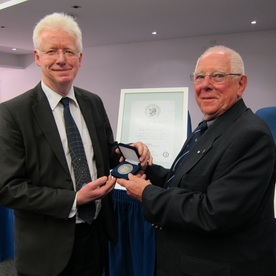
Martin Riddle and Ray McMahon.
The presentation of the Phillip Law medal in Hobart yesterday was a culmination of a series of events celebrated over the past year in honour of Dr. Phillip Garth Law.
The ANARE Club's Federal Council had the prestigous medal coined to be presented to Dr. Mark Riddle who is the recipient of the inaugural medal for his contribution toward various aspects of the clean up of the man made pollution at the ANARE reserach stations over the last 50 years or so.
The ANARE Club's Federal Council had the prestigous medal coined to be presented to Dr. Mark Riddle who is the recipient of the inaugural medal for his contribution toward various aspects of the clean up of the man made pollution at the ANARE reserach stations over the last 50 years or so.
Medal awarded for light tread in Antarctica
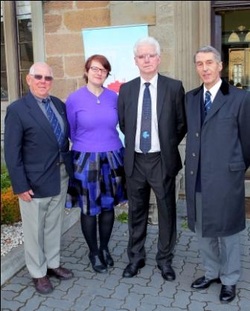
Ray McMahon, Ingrid McGaughey, Martin Riddle, Joe Johnson.
An article published by the Tasmanian newspaper 'The Mercury' can be accessed here.....
A transcript of 936 ABC Hobart radio news item can be accessed here...
A transcript of 936 ABC Hobart radio news item can be accessed here...
Medal awarded for Antarctic cleanup-ABC news

Posted August 01, 2011 15:17:30 ABC news site (click to access video footage)
Dr Martin Riddle has been awarded the Phillip Law Medal for his research and initiatives to keep Antarctica pristine.
Story By Amanda Lovell Source: ABC News | Duration: 1min 58sec
Topics: land-pollution, conservation, recycling-and-waste-management, research, science-and-technology, antarctica, hobart-7000
Dr Martin Riddle has been awarded the Phillip Law Medal for his research and initiatives to keep Antarctica pristine.
Story By Amanda Lovell Source: ABC News | Duration: 1min 58sec
Topics: land-pollution, conservation, recycling-and-waste-management, research, science-and-technology, antarctica, hobart-7000
Martin Riddle receives prestigious award
The Australian Antarctic Division’s Dr Martin Riddle has received the inaugural Phillip Law Medal at a weekend event in Hobart. A link to the Australian Antarctic Division article can be accessed here
The Australian Antarctic Division’s Dr Martin Riddle has received the inaugural Phillip Law Medal at a weekend event in Hobart. A link to the Australian Antarctic Division article can be accessed here
Phillip Law lecture

Prof Tom Griffiths.
Since 2002, the Phillip Law Lecture has invited noted academics, statesmen and scientists to give a public lecture on an Antarctic theme.
This year’s guest lecturer was Tom Griffiths, Professor of History and Director for the Centre for Environmental History, at the Australian National University.
Sir Guy Greene is his capacity as Tasmania's honorary Antarctic ambassador introduced Professor Griffiths. Prof Griffith gave an interesting and personable account on Phil Law and his significant contribution to all things Antarctic as part of his presentation entitled 'The Culture of the Ice.” The contribution of Mawson, the Cold War and more recent expeditions was also discussed.
The Phillip Law lecture was well attended with 130 -150 people attending including many ANARE Club members. The presentation was followed by a cocktail reception for invited guests.
Many thanks to the Tasmanian Goverment for sponsoring the event.
posted 1/8/2011
This year’s guest lecturer was Tom Griffiths, Professor of History and Director for the Centre for Environmental History, at the Australian National University.
Sir Guy Greene is his capacity as Tasmania's honorary Antarctic ambassador introduced Professor Griffiths. Prof Griffith gave an interesting and personable account on Phil Law and his significant contribution to all things Antarctic as part of his presentation entitled 'The Culture of the Ice.” The contribution of Mawson, the Cold War and more recent expeditions was also discussed.
The Phillip Law lecture was well attended with 130 -150 people attending including many ANARE Club members. The presentation was followed by a cocktail reception for invited guests.
Many thanks to the Tasmanian Goverment for sponsoring the event.
posted 1/8/2011
ANARE Team peaks too early...

Ray, Sandra, Matt, Louise, Ingrid, Mark, Michael, Kym.
Salamanca Arts Centre hosted a quiz night last night (31/7/2011) to raise funds for art curation and displays. A group of ANARE Club members banded together to form a team titled 'repeat offenders'. The team comprised Kym Newbery, Mark Milnes, Matt Longmire, Louise Crossley, Sandra and Ray McMahon, Michael Ooyendyk and Ingrid McGaughey.
We thought we had a reasonable chance given that the night had an Antarctic theme 'White Out...from Antarctica to Tasmania 100 years on..' In retrospect we were a little bit smug...
The first 3 rounds were almost a walk in the park, as we well and truly led the pack in all things Antarctic. But it wasn't all plain sailing as we failed to gain a point when we noted the adult albatross wingspan at 3.2, rather than the required 3.3 -3.6 meter range... In fact we narrowly avoided being docked 5 points as one of our team members who shall remain nameless requested (not unreasonably) clarification on what type of albatross... It seems that you can be a bit too clever on such occasions.
We thought we had a reasonable chance given that the night had an Antarctic theme 'White Out...from Antarctica to Tasmania 100 years on..' In retrospect we were a little bit smug...
The first 3 rounds were almost a walk in the park, as we well and truly led the pack in all things Antarctic. But it wasn't all plain sailing as we failed to gain a point when we noted the adult albatross wingspan at 3.2, rather than the required 3.3 -3.6 meter range... In fact we narrowly avoided being docked 5 points as one of our team members who shall remain nameless requested (not unreasonably) clarification on what type of albatross... It seems that you can be a bit too clever on such occasions.
However from Round 4 it was all downhill for the repeat offenders. We may be able to hold our own on all things Antarctic, but in the areas of popular culture (2006 winners of eurovision contests, archibald prize painters and their subjects and punk rock amongst them) we were well and truly trounced...
Still we had fun and successfully bid for several items in the silent auction including roller derby tickets, book, massage and a night at the Old Woolstore accommodation in Hobart....
We are now seriously considering a (solely) Antarctic themed quiz night for early December 2011...stay tuned for more info...
posted 1/8/2011
Still we had fun and successfully bid for several items in the silent auction including roller derby tickets, book, massage and a night at the Old Woolstore accommodation in Hobart....
We are now seriously considering a (solely) Antarctic themed quiz night for early December 2011...stay tuned for more info...
posted 1/8/2011
One Small Island launched

Author: Alison Lester Author: Coral Tulloch
The launch of ‘One Small Island’, was held at The Hobart Bookshop, Hobart on Sunday 31st July 2011. Pat Quilty gave a most interesting and enjoyable introduction to the book launch which was well attended.
The children’s book was written and illustrated by Alison Lester and Coral Tulloch and tells the story of Macquarie Island's unique geological beginnings, discovery and degradation at the hands of humans, and the battle to restore it today.
It is a beautiful book, with richly colored illustrations, and simple but informative text. Extracts from diaries and ships logs provide historical context, adding a further layer of complexity for the older child. It would make a great Christmas or bithday present!
The launch of ‘One Small Island’, was held at The Hobart Bookshop, Hobart on Sunday 31st July 2011. Pat Quilty gave a most interesting and enjoyable introduction to the book launch which was well attended.
The children’s book was written and illustrated by Alison Lester and Coral Tulloch and tells the story of Macquarie Island's unique geological beginnings, discovery and degradation at the hands of humans, and the battle to restore it today.
It is a beautiful book, with richly colored illustrations, and simple but informative text. Extracts from diaries and ships logs provide historical context, adding a further layer of complexity for the older child. It would make a great Christmas or bithday present!
The authors acknowledge support and sharing of knowledge from a range of sources including the ANARE Club, and members John Gillies, Dana Bergstrom, Pat Quilty and Jenny Scott, to name but a few.
A recent ABC 7.30 report featuring the book ‘One Small Island’ can be accessed here...
Both authors are previous Australian Antarctic Arts Fellows recipients.
Alison Lester, a children's author and illustrator, travelled to Antarctica and subAntarctic Macquarie Island in 2005/06. Her book Are We There Yet? won the 2005 Children's Book Council of Australia Picture Book of the Year Award. A biography on Alison on the AAD website can be accessed here...
Tasmanian Coral Tulloch, whom is also children's author and illustrator, travelled to Antarctica and Macquarie Island in 1998/99. Coral has won many awards including the Environment Award for Children's Literature in 2004 with her book Antarctica. The Heart of the World. Coral still travels to the Antarctic and subAntarctic regions as an artist-in-residence on tourist voyages and remains actively involved in environmental education. A biography on Coral can be accessed on the AAD website here.
Copies are available through The Hobart bookshop and other booksellers for $30.
A recent ABC 7.30 report featuring the book ‘One Small Island’ can be accessed here...
Both authors are previous Australian Antarctic Arts Fellows recipients.
Alison Lester, a children's author and illustrator, travelled to Antarctica and subAntarctic Macquarie Island in 2005/06. Her book Are We There Yet? won the 2005 Children's Book Council of Australia Picture Book of the Year Award. A biography on Alison on the AAD website can be accessed here...
Tasmanian Coral Tulloch, whom is also children's author and illustrator, travelled to Antarctica and Macquarie Island in 1998/99. Coral has won many awards including the Environment Award for Children's Literature in 2004 with her book Antarctica. The Heart of the World. Coral still travels to the Antarctic and subAntarctic regions as an artist-in-residence on tourist voyages and remains actively involved in environmental education. A biography on Coral can be accessed on the AAD website here.
Copies are available through The Hobart bookshop and other booksellers for $30.
Update on the Aurora Australis...
The Aurora Australis has diverted to New Zealand to deliver a stricken fishing vessel home.
Read more from the Otago Daily Times..
posted 1/8/2011
The Aurora Australis has diverted to New Zealand to deliver a stricken fishing vessel home.
Read more from the Otago Daily Times..
posted 1/8/2011
Australian Antarctic Division wins Engineering Award
A new super-insulated building at one of Australia’s Antarctic stations has won an Engineers Australia Award for Excellence.
A link to the Australian Antarctic Division article can be accessed here complete with photos
A new super-insulated building at one of Australia’s Antarctic stations has won an Engineers Australia Award for Excellence.
A link to the Australian Antarctic Division article can be accessed here complete with photos
Update Macquarie Island Pest Eradication Project
Issue No. 8 of the Macquarie Dispatch, newsletter of the Macquarie Island Pest Eradication Project (MIPEP) for July 2011 has now been released (click here).
In the newsletter it is revealed that 591 rabbit carcasses have been found and buried on the island up to the third week of June. As a consequence non-target mortality due to secondary poisoning of Northern Giant Petrels Macronectes halli and Sub-Antarctic Skuas Catharacta antarctica has been reduced in comparison to the aborted 2010 poisoning effort when 883 birds were found dead after only a small part of the island had been treated with poison bait (click here). As of 19 June this year 523 birds have been found dead, about half of which were Kelp Gulls Larus dominicanus.
Information is also given on the release of Rabbit Haemorrhagic Disease Virus in 200 kg of carrots.
posted 24/7/2011
Issue No. 8 of the Macquarie Dispatch, newsletter of the Macquarie Island Pest Eradication Project (MIPEP) for July 2011 has now been released (click here).
In the newsletter it is revealed that 591 rabbit carcasses have been found and buried on the island up to the third week of June. As a consequence non-target mortality due to secondary poisoning of Northern Giant Petrels Macronectes halli and Sub-Antarctic Skuas Catharacta antarctica has been reduced in comparison to the aborted 2010 poisoning effort when 883 birds were found dead after only a small part of the island had been treated with poison bait (click here). As of 19 June this year 523 birds have been found dead, about half of which were Kelp Gulls Larus dominicanus.
Information is also given on the release of Rabbit Haemorrhagic Disease Virus in 200 kg of carrots.
posted 24/7/2011
Aurora Australis arrives at Macquarie Island
sitrep report 24/7/2011
'...The weather kept us out of Buckles Bay yesterday resulting in multiple trips up and down the island, which was relatively comfortable except for turning across the swell at the end of very leg and the resulting cabin carnage. This morning the weather seemed to be on the turn so we moved into Buckles Bay to see if we could get the game underway. We had initial success in getting the first helicopter on deck, which allowed passenger transfers and cargo to commence. But as is usual around here the weather changed for the worse and tools were downed at 1130. We moved down the coast to a position off Sandy Bay and found the conditions a lot more settled. A helicopter was in the area and dropped by to check out the movement of the ship and gave a thumbs up, so the second half of play commenced at around 1240.
It was a busy four hours of activity on the helideck and in the holds as the loads came to and from the ship along with returning expeditioners. We finally said goodbye to the remaining team of MIPEP expeditioners and welcomed back all of our round trip project people...' Read more...
sitrep report 24/7/2011
'...The weather kept us out of Buckles Bay yesterday resulting in multiple trips up and down the island, which was relatively comfortable except for turning across the swell at the end of very leg and the resulting cabin carnage. This morning the weather seemed to be on the turn so we moved into Buckles Bay to see if we could get the game underway. We had initial success in getting the first helicopter on deck, which allowed passenger transfers and cargo to commence. But as is usual around here the weather changed for the worse and tools were downed at 1130. We moved down the coast to a position off Sandy Bay and found the conditions a lot more settled. A helicopter was in the area and dropped by to check out the movement of the ship and gave a thumbs up, so the second half of play commenced at around 1240.
It was a busy four hours of activity on the helideck and in the holds as the loads came to and from the ship along with returning expeditioners. We finally said goodbye to the remaining team of MIPEP expeditioners and welcomed back all of our round trip project people...' Read more...
Transcribers wanted...
If anyone is interested in volunteering to do some transcription for the ANARE oral history project, please contact Ingrid on
If anyone is interested in volunteering to do some transcription for the ANARE oral history project, please contact Ingrid on
Looking for an ANARE Club rep for AAE centenary voyage
The Aurora Australis will be visiting Commonwealth Bay as part of the AAE centenary celebrations. The Australian Antarctic Divsion have offered a berth to the ANARE Club. There are however strings attached!
The AAD are basically looking for a media-friendly person who can wax lyrical about the 'good old days'. They will need to be able to provide some historical context to current AAD operations, explaining how the programs have changed over time. Preference will be given to people who have been down south in the earlier years e.g. 1948-1968.
Reasonable health is also required.
If you are interested please email Ingrid (designated AAD liaison for this project) on
The Aurora Australis will be visiting Commonwealth Bay as part of the AAE centenary celebrations. The Australian Antarctic Divsion have offered a berth to the ANARE Club. There are however strings attached!
The AAD are basically looking for a media-friendly person who can wax lyrical about the 'good old days'. They will need to be able to provide some historical context to current AAD operations, explaining how the programs have changed over time. Preference will be given to people who have been down south in the earlier years e.g. 1948-1968.
Reasonable health is also required.
If you are interested please email Ingrid (designated AAD liaison for this project) on
or write to her at 1/24 Fitzroy place, Sandy Bay, 7005, Tasmania. All expressions of interest will need to be received by the Tuesday 9th August 2011. You can ring Ingrid on 03 6224 8573 if you wish to discuss prior to submitting a formal expression of interest.
At this stage the voyage is scheduled to leave Hobart on the 31st December 2011 and return to Fremantle on 10th February 2012.
Please include the following details in your expression of interest:
Name
Contact details including Address, phone number and email (if applicable)
Years /Stations 'down south'
Occupation 'down south'
Current health summary inc significant events e.g. major operations, heart attacks strokes etc
Current medications
Some medical conditions may preclude travel to Antarctica, please refer to the medical checklist.
(The health information will be kept confidential)
Summary (200 words or less) about why you wish to be part of the AAE centenary voyage
The information will then be passed onto the AAD, who will decide who best fits their requirements in conjunction with the ANARE Club.
At this stage the voyage is scheduled to leave Hobart on the 31st December 2011 and return to Fremantle on 10th February 2012.
Please include the following details in your expression of interest:
Name
Contact details including Address, phone number and email (if applicable)
Years /Stations 'down south'
Occupation 'down south'
Current health summary inc significant events e.g. major operations, heart attacks strokes etc
Current medications
Some medical conditions may preclude travel to Antarctica, please refer to the medical checklist.
(The health information will be kept confidential)
Summary (200 words or less) about why you wish to be part of the AAE centenary voyage
The information will then be passed onto the AAD, who will decide who best fits their requirements in conjunction with the ANARE Club.
Tas represented on National Council
Marilyn Boydell was elected to the National Council of the ANARE Club at the AGM /elections on 11th July 2011 as a general council member. Ingrid Mcgaughey did not seek re-election to the National Council, and now moves to the ex-officio position of Immediate Past President.
posted 16/7/2011
Marilyn Boydell was elected to the National Council of the ANARE Club at the AGM /elections on 11th July 2011 as a general council member. Ingrid Mcgaughey did not seek re-election to the National Council, and now moves to the ex-officio position of Immediate Past President.
posted 16/7/2011
Aussies on Ice: The Australian Contribution to the Antarctic Expeditions of Scott and Shackleton
A free public lecture hosted by UTAS
Presented by Pulitzer Prize -winning author Professor Edward Larson
When: Monday, 25th July 2011 6:00pm to 7.30pm
Where: Stanley Burbury Theatre, University of Tasmania, Churchill Ave, Sandy Bay campus
Cost: free
Prof Edward Larson is the author of the 2011 book An empire of Ice: Scott, Shackleton and the Heroic Age of Antarctic Science. He holds the Hugh & Hazel Darling Chair in Law and is University Professor of History at Pepperdine University. Prof Larson was the recipient of the 1981 Pulitzer Prize in History and retains an appointment at the University of Georgia where he has taught since 1987.
RSVP / Contact Information:
Email: [email protected];
Phone: 6226 2521
Supported by UTAS Faculty of Law, IMAS, ACE, CRC, and the Australian Antarctic Division
posted 16/7/2011
A free public lecture hosted by UTAS
Presented by Pulitzer Prize -winning author Professor Edward Larson
When: Monday, 25th July 2011 6:00pm to 7.30pm
Where: Stanley Burbury Theatre, University of Tasmania, Churchill Ave, Sandy Bay campus
Cost: free
Prof Edward Larson is the author of the 2011 book An empire of Ice: Scott, Shackleton and the Heroic Age of Antarctic Science. He holds the Hugh & Hazel Darling Chair in Law and is University Professor of History at Pepperdine University. Prof Larson was the recipient of the 1981 Pulitzer Prize in History and retains an appointment at the University of Georgia where he has taught since 1987.
RSVP / Contact Information:
Email: [email protected];
Phone: 6226 2521
Supported by UTAS Faculty of Law, IMAS, ACE, CRC, and the Australian Antarctic Division
posted 16/7/2011
An Empire of Ice

Published to coincide with the centenary of the first expeditions to reach the South Pole, An Empire of Ice presents a fascinating new take on Antarctic exploration. Retold with added information, it's the first book to place the famed voyages of Norwegian explorer Roald Amundsen, his British rivals Robert Scott and Ernest Shackleton, and others in a larger scientific, social, and geopolitical context. Efficient, well prepared, and focused solely on the goal of getting to his destination and back, Amundsen has earned his place in history as the first to reach the South Pole. Scott, meanwhile, has been reduced in the public mind to a dashing incompetent who stands for little more than relentless perseverance in the face of inevitable defeat.
An Empire of Ice offers a new perspective on the Antarctic expeditions of the early twentieth century by looking at the British efforts for what they actually were: massive scientific enterprises in which reaching the South Pole was but a spectacular sideshow.
By focusing on the larger purpose, Edward Larson deepens our appreciation of the explorers' achievements, shares little-known stories, and shows what the Heroic Age of Antarctic discovery was really about.
Professor Larson was interviewed on The Book Show on ABC Radio National on Thursday 14 July 2011. The book by Professor Edward Larson, is being published by Inbooks and will be available in July 2011.
posted 16/7/2011
An Empire of Ice offers a new perspective on the Antarctic expeditions of the early twentieth century by looking at the British efforts for what they actually were: massive scientific enterprises in which reaching the South Pole was but a spectacular sideshow.
By focusing on the larger purpose, Edward Larson deepens our appreciation of the explorers' achievements, shares little-known stories, and shows what the Heroic Age of Antarctic discovery was really about.
Professor Larson was interviewed on The Book Show on ABC Radio National on Thursday 14 July 2011. The book by Professor Edward Larson, is being published by Inbooks and will be available in July 2011.
posted 16/7/2011
In bed with Sir Douglas Mawson
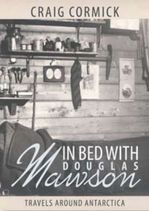
Some of you may have met Craig Cormick at the recent MWD in Canberra where he gave a brief presentation on his recently published book 'In bed with Douglas Mawson'
The Official Blurb...
Departing Hobart on a seven-week voyage onboard the RSV Aurora Australia, Craig Cormick is fulfilling a long-time dream to visit the frozen continent of Antarctica - an adventure to one of the few under-discovered regions of the world.
As they navigate through the wild Southern Ocean and explore the icy coastline of Antarctica continent, he muses about the great explorer and geologist Douglas Mawson. Mawson's ill-fates, but scientifically successful, Australian Antarctic Expedition sailed from Hobart in 1911, as Scott and Amundsen were embarking on their race tot he South Pole.
Visiting the three Australian bases, with Mawson's ghost at this side, Craig Cormick describes the exhilaration of seeing his first iceberg, climbing a mountain on the antarctic plateau, flying in a helicopter of the Vestfold Hills, photographing Adelie penguins, seeing the spectacular Aurora Australia in the sky, smelling elephant seals and discovering the mysteries of 'crap and wrap' field toilets.
In Bed with Mawson is a humorous and thoughtful exploration of the enduring spirit of discovery, adventure and comradeship around Antarctica.
posted 14/7/2011
The Official Blurb...
Departing Hobart on a seven-week voyage onboard the RSV Aurora Australia, Craig Cormick is fulfilling a long-time dream to visit the frozen continent of Antarctica - an adventure to one of the few under-discovered regions of the world.
As they navigate through the wild Southern Ocean and explore the icy coastline of Antarctica continent, he muses about the great explorer and geologist Douglas Mawson. Mawson's ill-fates, but scientifically successful, Australian Antarctic Expedition sailed from Hobart in 1911, as Scott and Amundsen were embarking on their race tot he South Pole.
Visiting the three Australian bases, with Mawson's ghost at this side, Craig Cormick describes the exhilaration of seeing his first iceberg, climbing a mountain on the antarctic plateau, flying in a helicopter of the Vestfold Hills, photographing Adelie penguins, seeing the spectacular Aurora Australia in the sky, smelling elephant seals and discovering the mysteries of 'crap and wrap' field toilets.
In Bed with Mawson is a humorous and thoughtful exploration of the enduring spirit of discovery, adventure and comradeship around Antarctica.
posted 14/7/2011
ABC report on retrieval of Mawson's wireless remnants
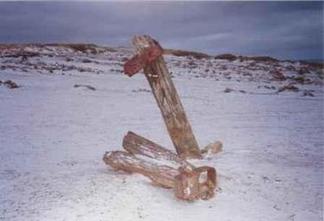
Mast remanants on wireless Hill, North Head. 1994. Photo by Ken Barrett.
From the ABC 7.30pm report...with some great video footage...
LEIGH SALES, PRESENTER: This December marks 100 years since South Australian scientist and explorer Sir Douglas Mawson set off on his historic voyage to Antarctica.
The Mawson's Huts Foundation is working to restore the explorers' huts at Cape Denison on Commonwealth Bay. And as part of that they've retrieved a precious piece of history from its cold, windy location in the sub-Antarctic.
Tracy Bowden's interesting report can be accessed here.... (Just remember you heard about it first here in May 2011!!)
LEIGH SALES, PRESENTER: This December marks 100 years since South Australian scientist and explorer Sir Douglas Mawson set off on his historic voyage to Antarctica.
The Mawson's Huts Foundation is working to restore the explorers' huts at Cape Denison on Commonwealth Bay. And as part of that they've retrieved a precious piece of history from its cold, windy location in the sub-Antarctic.
Tracy Bowden's interesting report can be accessed here.... (Just remember you heard about it first here in May 2011!!)
MWD Tas photos can be accessed here...
Also if you have any pics please forward them onto Squeeze (Michael Ooyendyk) and we will post them on the site.
Also if you have any pics please forward them onto Squeeze (Michael Ooyendyk) and we will post them on the site.
Antarctica. Photographs by Bob Dingle.
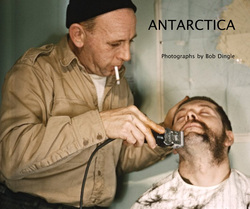
Susan Gordon Brown recently viewed some of Bob Dingle's photographs from his many trips to the Antarctic. She subsequently compiled a book which is filled with a selection of photographs as a private gift for Bob.
Since then a few other Club members have seen the book and requested copies. With Bob's consent, the book is available for general purchase at cost price from the internet 'Blurb' bookstore.
The book includes many classic images of working and social life down south. It can be purchased for $61.94 plus shipping at http://www.blurb.com/bookstore/detail/2271046.
Book details: Hard cover with dust jacket, premium lustre paper, 80 pages. Colour slides were scanned and Bob wrote up the captions to the images.
posted 5/7/2011
Since then a few other Club members have seen the book and requested copies. With Bob's consent, the book is available for general purchase at cost price from the internet 'Blurb' bookstore.
The book includes many classic images of working and social life down south. It can be purchased for $61.94 plus shipping at http://www.blurb.com/bookstore/detail/2271046.
Book details: Hard cover with dust jacket, premium lustre paper, 80 pages. Colour slides were scanned and Bob wrote up the captions to the images.
posted 5/7/2011
Down South Hobart Launch
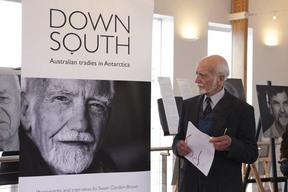
'Down South, Australian tradies in Antarctica' had a very successful exhibition in Hobart during Midwinter period. Many of the people who featured in the exhibition were able to attend which was great. Poster boy Fred Elliott gave a very entertaining and interesting introduction.
Susan is to be congratulated. Her portraiture work was beautiful, and widely commented on by the large number of visitors. The oral history excerpts chosen were a fascinating insight into life 'down south' and writer Gayle O'Connor should also be thanked.
Photographs from the Hobart exhibition can be accessed here...
The exhibition attracted local media including coverage on Win and Southern Cross 6pm News, an article in the Sunday newspaper, and Michael Veitch (ABC radio program) interviewing Jan Adolf and Dave McCormack.
The Oral History Association of Tasmania had also featured an article on Susan's work and the exhibition in their April 2011 newsletter. It also contains some interesting background information for the impetus for the work.
Susan is to be congratulated. Her portraiture work was beautiful, and widely commented on by the large number of visitors. The oral history excerpts chosen were a fascinating insight into life 'down south' and writer Gayle O'Connor should also be thanked.
Photographs from the Hobart exhibition can be accessed here...
The exhibition attracted local media including coverage on Win and Southern Cross 6pm News, an article in the Sunday newspaper, and Michael Veitch (ABC radio program) interviewing Jan Adolf and Dave McCormack.
The Oral History Association of Tasmania had also featured an article on Susan's work and the exhibition in their April 2011 newsletter. It also contains some interesting background information for the impetus for the work.
Souvenir postcard set of the Down South exhibition.
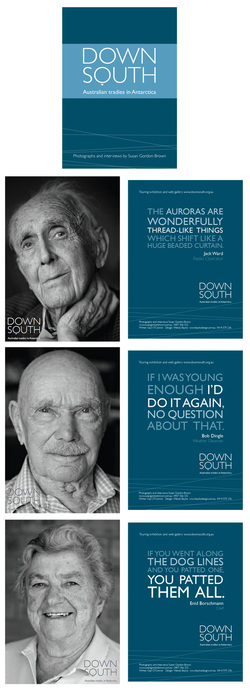
27 postcards including one portrait of every person featured in the exhibition with a short quote from them on the reverse of each card, plus a front and back card kept together by a 'bellyband'.
$13 plus postage and packing.
Total $16 if shipped within Australia.
Please email Susan if you would like one sent and she will organise payment and shipping or pick up.
$13 plus postage and packing.
Total $16 if shipped within Australia.
Please email Susan if you would like one sent and she will organise payment and shipping or pick up.
Grant for ANARE oral history project
Aurora Expeditions has made a contribution of $2500 to the ANARE oral history project.
As you are aware, the project aims to preserve Antarctic history and increase awareness of ANARE expeditioners and their contribution to Australian Antarctic history and affairs. At this stage a number of themed displays are planned for ANARE, AAE centenary and community events in 2012. Aurora’s generous donation will be put to very good use developing material that can be utilised for these presentation and displays.
posted 28/6/2011
Aurora Expeditions has made a contribution of $2500 to the ANARE oral history project.
As you are aware, the project aims to preserve Antarctic history and increase awareness of ANARE expeditioners and their contribution to Australian Antarctic history and affairs. At this stage a number of themed displays are planned for ANARE, AAE centenary and community events in 2012. Aurora’s generous donation will be put to very good use developing material that can be utilised for these presentation and displays.
posted 28/6/2011
Douglas Mawson @Twitter
As we all know one hundred years ago this December, a young geologist named Douglas Mawson set sail from Hobart on the historic Australasian Antarctic Expedition.
You can follow his adventure in real time, one hundred years on @DouglasMawson on Twitter.com. You can view the entries without logging in or becoming a member. Based on real diary entries, meet the man behind the mask.
There will also be the opportunity to become more involved and take on the persona of a historical character and interact with Douglas. More details on this later...
The local Hobart newspaper ‘The Mercury’ recently featured an article on @DouglasMawson I was asked by the ACY team (see below for further information) if I was interested in a photo opportunity as a prop for the laptop view of the webpage. (I was told that the members of the ACY team are not allowed to feature in these articles due to public service guidelines.) Anyway I found it interesting and appositive step that the enquiry was directed our way in the first place...
I was more than happy to oblige, not so much for the photo part, but as an opportunity to promote ANARE Club. Further discussions with the journalist have raised a number of possible collaborations to promote the oral history project and associated displays and the 2012 Midwinter celebrations.
posted 26/6/2011
Mawson’s Hut Photographic Display
We are pleased to invite you as well as your family and friends to the opening of 67 Degrees South: Photographs from Mawson's Huts Foundation Expeditions to be held at the Long Gallery, Salamanca Arts Centre, Hobart, Thursday 14 July 2011.
67 Degrees South is an exhibition of photographs taken by Mawson's Huts Foundation expeditioners while working to preserve Mawson's Huts in Antarctica. Over several years, expeditioners have experienced the beauty and the harshness of the Home of the Blizzard at first hand. Living amongst the unique nature of the Antarctic continent, they have captured arresting images of the huts and the sweeping dramatic landscapes of the white wilderness at 67 degrees south.
The exhibition is a celebration of the work of their work and that of the Mawson's Huts Foundation. The photographs are available for sale and proceeds go to support the work of the Mawson's Huts Foundation, a registered not for profit organisation that raises funds to continue the work of preserving this iconic historic monument.
Click here to access the invitation and further details of time and location. We hope to see you there.
Regards
Michelle Berry
Mawson’s Huts Foundation
posted 26/6/2011
As we all know one hundred years ago this December, a young geologist named Douglas Mawson set sail from Hobart on the historic Australasian Antarctic Expedition.
You can follow his adventure in real time, one hundred years on @DouglasMawson on Twitter.com. You can view the entries without logging in or becoming a member. Based on real diary entries, meet the man behind the mask.
There will also be the opportunity to become more involved and take on the persona of a historical character and interact with Douglas. More details on this later...
The local Hobart newspaper ‘The Mercury’ recently featured an article on @DouglasMawson I was asked by the ACY team (see below for further information) if I was interested in a photo opportunity as a prop for the laptop view of the webpage. (I was told that the members of the ACY team are not allowed to feature in these articles due to public service guidelines.) Anyway I found it interesting and appositive step that the enquiry was directed our way in the first place...
I was more than happy to oblige, not so much for the photo part, but as an opportunity to promote ANARE Club. Further discussions with the journalist have raised a number of possible collaborations to promote the oral history project and associated displays and the 2012 Midwinter celebrations.
posted 26/6/2011
Mawson’s Hut Photographic Display
We are pleased to invite you as well as your family and friends to the opening of 67 Degrees South: Photographs from Mawson's Huts Foundation Expeditions to be held at the Long Gallery, Salamanca Arts Centre, Hobart, Thursday 14 July 2011.
67 Degrees South is an exhibition of photographs taken by Mawson's Huts Foundation expeditioners while working to preserve Mawson's Huts in Antarctica. Over several years, expeditioners have experienced the beauty and the harshness of the Home of the Blizzard at first hand. Living amongst the unique nature of the Antarctic continent, they have captured arresting images of the huts and the sweeping dramatic landscapes of the white wilderness at 67 degrees south.
The exhibition is a celebration of the work of their work and that of the Mawson's Huts Foundation. The photographs are available for sale and proceeds go to support the work of the Mawson's Huts Foundation, a registered not for profit organisation that raises funds to continue the work of preserving this iconic historic monument.
Click here to access the invitation and further details of time and location. We hope to see you there.
Regards
Michelle Berry
Mawson’s Huts Foundation
posted 26/6/2011
Welcome: Antarctic Centennial Year (ACY).
The ACY is a celebration of Tasmania’s key role and enduring endeavour in Antarctic affairs. A number of important international conferences, exhibitions and meetings will be held in Hobart during the ACY together with a broad program of cultural and social events based on Antarctic themes. These themes include scientific, historic and artistic relationships between Tasmania and the Antarctic.
In addition, two significant centenaries celebrating the achievements of Antarctic explorers Sir Douglas Mawson and Roald Amundsen will be marked by spectacular re-enactments.
An ‘Antarctic year’ usually runs from Midwinter to Midwinter - from June to June. In this case the ACY team have stretched it just a little. The ACY will run from May 2011 to June 2012.
The ACY website contains a program of scheduled events and activities, many of which are open to the public. Other events will be added when details are finalised. Already the ANARE Club has listed several events on the ACY website, and found it to provide a valuable service in getting our messages ‘out there’.
The website is accessed at http://www.antarcticcentennial.tas.gov.au/ You are encouraged to revisit this website often to ensure you have the latest information and to get involved with this once-in-a-hundred-year opportunity.
posted 26/6/2011
Mawson Activity Pages for students
The Royal Society of Tasmania in conjunction with Tasmanian newspaper ‘The Mercury’ has produced an educational liftout /activity page on Douglas Mawson for students. It can be accessed at http://www.rst.org.au/documents/education/DouglasMawson.pdf
There is a similar activity page for Macquarie Island prepared by Pat Quilty and local historian John Williamson at http://www.rst.org.au/documents/education/MacquarieIsland.pdf with some interesting links.
Maybe something to explore with your children or grandchildren...or even yourself!
posted 26/6/2011
2011 Antarctic Medal
Leading Antarctic Marine Biologist, Dr Stephen Nicol, and a Master of Australia's Antarctic research and resupply vessel, Captain Murray Doyle, have been awarded the 2011 Antarctic Medal.
The awards were announced today by the Governor General, Her Excellency, Ms Quentin Bryce AC. Read more...
posted 23/6/2011
Update for Tas MWD
The dinner is at the Hobart function and conference centre which is located at the Elizabeth street Pier, in the heart of Hobart. For a map click here...
BAR OPENS 6PM
SIT DOWN FOR MIDWINTER DINNER BY 7 PM
Mid winter dinner seating arrangements can be viewed here....
As of 16th June there are: 8 places left for the special tour of the Australian Antarctic Division and 8 places left for the Antarctic history walking tour ($10).
Bookings for the polar pathways walking tour and Australian Antarctic Division tour can now only be made be made by contacting Michael (Squeeze) Ooyendyk directly on 03 6224 8573.
Don’t forget to visit:
· ‘Down South: Australian Tradies in Antarctica’ exhibition. Open 10am-4pm at Waterside Pavilion, Mawson Place near Mures and Hobart Function and Convention Centre. Special event 2pm Saturday. All welcome to attend. See invite here...
· Longest night film festival at the State Cinema in Elizabeth street, North Hobart featuring a selection of Antarctic films. See here for listings...
· ‘Islands to Ice display’ at the Tasmanian Museum and Art Gallery, daily, 10am -5pm.
We are really looking forward to seeing you all –especially those from interstate or trying to get back home. It has been an anxious wait!
The ACY is a celebration of Tasmania’s key role and enduring endeavour in Antarctic affairs. A number of important international conferences, exhibitions and meetings will be held in Hobart during the ACY together with a broad program of cultural and social events based on Antarctic themes. These themes include scientific, historic and artistic relationships between Tasmania and the Antarctic.
In addition, two significant centenaries celebrating the achievements of Antarctic explorers Sir Douglas Mawson and Roald Amundsen will be marked by spectacular re-enactments.
An ‘Antarctic year’ usually runs from Midwinter to Midwinter - from June to June. In this case the ACY team have stretched it just a little. The ACY will run from May 2011 to June 2012.
The ACY website contains a program of scheduled events and activities, many of which are open to the public. Other events will be added when details are finalised. Already the ANARE Club has listed several events on the ACY website, and found it to provide a valuable service in getting our messages ‘out there’.
The website is accessed at http://www.antarcticcentennial.tas.gov.au/ You are encouraged to revisit this website often to ensure you have the latest information and to get involved with this once-in-a-hundred-year opportunity.
posted 26/6/2011
Mawson Activity Pages for students
The Royal Society of Tasmania in conjunction with Tasmanian newspaper ‘The Mercury’ has produced an educational liftout /activity page on Douglas Mawson for students. It can be accessed at http://www.rst.org.au/documents/education/DouglasMawson.pdf
There is a similar activity page for Macquarie Island prepared by Pat Quilty and local historian John Williamson at http://www.rst.org.au/documents/education/MacquarieIsland.pdf with some interesting links.
Maybe something to explore with your children or grandchildren...or even yourself!
posted 26/6/2011
2011 Antarctic Medal
Leading Antarctic Marine Biologist, Dr Stephen Nicol, and a Master of Australia's Antarctic research and resupply vessel, Captain Murray Doyle, have been awarded the 2011 Antarctic Medal.
The awards were announced today by the Governor General, Her Excellency, Ms Quentin Bryce AC. Read more...
posted 23/6/2011
Update for Tas MWD
The dinner is at the Hobart function and conference centre which is located at the Elizabeth street Pier, in the heart of Hobart. For a map click here...
BAR OPENS 6PM
SIT DOWN FOR MIDWINTER DINNER BY 7 PM
Mid winter dinner seating arrangements can be viewed here....
As of 16th June there are: 8 places left for the special tour of the Australian Antarctic Division and 8 places left for the Antarctic history walking tour ($10).
Bookings for the polar pathways walking tour and Australian Antarctic Division tour can now only be made be made by contacting Michael (Squeeze) Ooyendyk directly on 03 6224 8573.
Don’t forget to visit:
· ‘Down South: Australian Tradies in Antarctica’ exhibition. Open 10am-4pm at Waterside Pavilion, Mawson Place near Mures and Hobart Function and Convention Centre. Special event 2pm Saturday. All welcome to attend. See invite here...
· Longest night film festival at the State Cinema in Elizabeth street, North Hobart featuring a selection of Antarctic films. See here for listings...
· ‘Islands to Ice display’ at the Tasmanian Museum and Art Gallery, daily, 10am -5pm.
We are really looking forward to seeing you all –especially those from interstate or trying to get back home. It has been an anxious wait!
MAWSON SYMPOSIUM DECEMBER 2011
December 2, 2011, marks the centenary of the sailing of Dr (later Sir) Douglas Mawson from Hobart, to establish his headquarters at Commonwealth Bay in Antarctica in the Australasian Antarctic Expedition (AAE), and to begin serious involvement of Australia in Antarctic territorial claims and research. The Antarctic Centennial Year (ACY) has been launched to coordinate activities to commemorate the occasion. Many events will be held and the full program is available on the websites of the Australian Antarctic Division and Antarctic
Tasmania.
The Royal Society of Tasmania is organising the Mawson Symposium as part of the ACY celebrations. The brochure and registration form are available on the Royal Society of Tasmania website at www.rst.org.au or here.
Under the education heading there is information on how to register and to be involved. A registration form can be downloaded here.
In addition to the information contained there, the Governor of Tasmania, His Excellency the Honourable Peter Underwood AC, has agreed to open the meeting at 9.15 am on 30 November 2011 and to host a reception 6-7 pm at Government House that evening for participants.
If you have any questions, feel free to contact me on my email below. I look forward to your involvement.
Patrick G. Quilty AM
Chairman
Volunteer wanted for Mawson committee
Pat Quilty is organising a 'Mawson Symposium' on behalf of the Royal Society of Tasmania. It will be held on the 30th November /1st December 2011 in Hobart. Ideally Pat would like an ANARE Club member to participate on the organising committee. If you are interested please contact Pat on:
Macquarie Is Lecture notes now available online
It has become traditional for The Royal Society of Tasmania to host a Winter Lecture Series for the public. The lectures usually consist of a series of presentations over three months, on the third Tuesday of June, July and August.
In 2010 The Royal Society of Tasmania focused its Winter Lecture Series on the topic of Macquarie Island because it was 200 years since the island was ‘discovered’ on 11 July 1810.
The series took the form of three sessions, and each session was chaired by an eminent person with some association with the Island. Professor Patrick Quilty President of The Royal Society of Tasmania, of the School of Earth Sciences, University of Tasmania was overall co-ordinator.
The 2010 RST Macquarie Island notes are now available on the
UTAS website:
• go to the uni homepage http://www.utas.edu.au/
• in the lower right hand corner click on 'Visit Channel UTAS'
• Click on the link 'More General Interest'
• Scroll down to 'Macquarie Island to the World Stage'
•
The direct link to the first lecture is: http://www.utas.edu.au/channelutas/
media/streaming-media-channels
posted 11.06.2011
Down South: Australian tradies in Antarctica
Photographer Susan Gordon-Brown has spoken to 25 ANARE tradespeople and photographed them as they are now. The exhibition "Down South: Australian tradies in Antarctica is a combination of these portraits and their stories, as transcribed by Gayl O’Connor.
The exhibition ‘Down South’ was initially going to be hosted by Mecure Hadley’s Hotel in Hobart June 2011. Hadley’s has a strong history of hosting Antarctic themed exhibitions. Unfortunately planned renovations at the hotel have been thrown into disarray due to heritage council constraints. Although Hadley’s Hotel has still offered to host the event, the actual location and available infrastructure are uncertain.
In view of this Susan approached the Hobart City Council to seek use of the Waterside Pavilion, Mawson Place exhibition space. The HCC has waived the usual hire charges as part of its commitment to supporting the Australian Centennial Year (ACY). Many thanks!
The exhibition will be open from June 16th -20th 10am -4pm. There will be a special opening on Saturday 18th June 2011 at 2pm. This will be co-sponsored by Antarctic Tasmania, a Tas govt body which supports and promotes Antarctic activities and events.
An invitation is attached or can be accessed here...
We hope that you can join us!!
Future locations for the exhibition includes:
June 16th – 20th 2011: Waterside Pavilion, Mawson Place, Hobart
August 1st – 26th 2011: World Trade Centre, Melbourne
October 2nd – 9th 2011: Melbourne Town Hall, Victorian Seniors Festival
October 11th – November 4th 2011: CCAMLR (Commission for the Conservation of Antarctic Marine Living Resources) meeting, Hobart
August 2013: Ballarat International Foto Biennale
Further details can be found at: http://www.downsouth.org.au
Photographer Susan Gordon-Brown has spoken to 25 ANARE tradespeople and photographed them as they are now. The exhibition "Down South: Australian tradies in Antarctica is a combination of these portraits and their stories, as transcribed by Gayl O’Connor.
The exhibition ‘Down South’ was initially going to be hosted by Mecure Hadley’s Hotel in Hobart June 2011. Hadley’s has a strong history of hosting Antarctic themed exhibitions. Unfortunately planned renovations at the hotel have been thrown into disarray due to heritage council constraints. Although Hadley’s Hotel has still offered to host the event, the actual location and available infrastructure are uncertain.
In view of this Susan approached the Hobart City Council to seek use of the Waterside Pavilion, Mawson Place exhibition space. The HCC has waived the usual hire charges as part of its commitment to supporting the Australian Centennial Year (ACY). Many thanks!
The exhibition will be open from June 16th -20th 10am -4pm. There will be a special opening on Saturday 18th June 2011 at 2pm. This will be co-sponsored by Antarctic Tasmania, a Tas govt body which supports and promotes Antarctic activities and events.
An invitation is attached or can be accessed here...
We hope that you can join us!!
Future locations for the exhibition includes:
June 16th – 20th 2011: Waterside Pavilion, Mawson Place, Hobart
August 1st – 26th 2011: World Trade Centre, Melbourne
October 2nd – 9th 2011: Melbourne Town Hall, Victorian Seniors Festival
October 11th – November 4th 2011: CCAMLR (Commission for the Conservation of Antarctic Marine Living Resources) meeting, Hobart
August 2013: Ballarat International Foto Biennale
Further details can be found at: http://www.downsouth.org.au
Winners extreme photo comp...
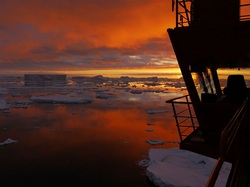
Tasmanians triumph in international photo competition
Winners of the 2011 Extreme Environment Photographic Competition were announced this morning by Sir Guy Green, Tasmania’s Honorary Antarctic Ambassador.
The competition attracted entries from across the globe, and finalists have been on display at the Bond Store at the Tasmanian Museum and Art Gallery since 6 May. ‘I’m delighted that this year’s competition and exhibition were such a success, particularly as it was the opening event in our Antarctic Centennial Year celebrations," Mr O’Byrne.
The Wayne Papps Memorial Prize of $2000 was sponsored by the Tasmanian Government and open to amateur photographers only. It honours the memory of Wayne Papps, the New Zealand photographer who created so many superb images of Antarctica. The prize winner produced the most striking image taken in the Antarctic or sub-Antarctic region, not necessarily of an extreme environment.
The winning entry was ‘Sunrise - RV Aurora Australis’ by Tasmanian Rob Kilpatrick. Judges gave a special mention for ‘Midwinter Camping South Pole’ by Jude Gregan.
The Trafalgar Prize of $5000 was provided by Nekon Pty Ltd, with Lars Andreas Dybvik’s ‘Polarnight’ best capturing humanity’s enduring endeavour in extreme polar environments. A special mention went to ‘Blown Away’ by Tasmania’s Chris Wilson. The popular People’s Choice Award of camera equipment from FujiFilm Australia was awarded to J Holko for ‘Blue Berg’.
“These awards are prestigious and much sought after evidenced by the large number of quality entries received each year’ said Sir Guy Green, chairman of judges in the competition. Judges also included Richard Bennett of Richard Bennett Photography, Martin Walch, Associate Lecturer in Fine Arts at UTAS and Rosemary Miller, Director, Salamanca Arts Centre.
Article by Antarctic Tasmania, posted 17/5/2011
The entries displayed in the 2011 extreme photograph competition can be accessed here...
Winners of the 2011 Extreme Environment Photographic Competition were announced this morning by Sir Guy Green, Tasmania’s Honorary Antarctic Ambassador.
The competition attracted entries from across the globe, and finalists have been on display at the Bond Store at the Tasmanian Museum and Art Gallery since 6 May. ‘I’m delighted that this year’s competition and exhibition were such a success, particularly as it was the opening event in our Antarctic Centennial Year celebrations," Mr O’Byrne.
The Wayne Papps Memorial Prize of $2000 was sponsored by the Tasmanian Government and open to amateur photographers only. It honours the memory of Wayne Papps, the New Zealand photographer who created so many superb images of Antarctica. The prize winner produced the most striking image taken in the Antarctic or sub-Antarctic region, not necessarily of an extreme environment.
The winning entry was ‘Sunrise - RV Aurora Australis’ by Tasmanian Rob Kilpatrick. Judges gave a special mention for ‘Midwinter Camping South Pole’ by Jude Gregan.
The Trafalgar Prize of $5000 was provided by Nekon Pty Ltd, with Lars Andreas Dybvik’s ‘Polarnight’ best capturing humanity’s enduring endeavour in extreme polar environments. A special mention went to ‘Blown Away’ by Tasmania’s Chris Wilson. The popular People’s Choice Award of camera equipment from FujiFilm Australia was awarded to J Holko for ‘Blue Berg’.
“These awards are prestigious and much sought after evidenced by the large number of quality entries received each year’ said Sir Guy Green, chairman of judges in the competition. Judges also included Richard Bennett of Richard Bennett Photography, Martin Walch, Associate Lecturer in Fine Arts at UTAS and Rosemary Miller, Director, Salamanca Arts Centre.
Article by Antarctic Tasmania, posted 17/5/2011
The entries displayed in the 2011 extreme photograph competition can be accessed here...
Mawson's wireless mast remnants retrieved...
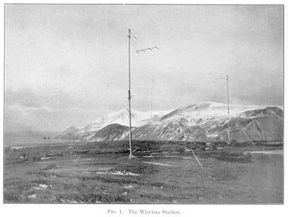
Photo from collection State Library of NSW.
Recently three members of the Mawson's Huts Foundation travelled to Macquarie Island to undertake some work on the heritage artefacts found around the island. Tasmanian Parks and Wildlife in partnership with Mawson's Huts foundation are keen to see some of these great remnants from the sealers and AAE eras be conserved and eventually displayed as part of an interpretation plan for the island.
The group included Frederique Olivier (media), Peter Maxwell (conservator) and Marty Passingham (heritage carpenter).
A major achievement from this recent visit in April 2011was to excavate the remnants of the 1911 AAE Wireless mast for conservation back in Hobart. Three pieces of the original mast remained on top of Wireless hill and were slowly being eroded by the harsh conditions found at Macquarie Island.
Originally these masts stood over 50 feet high and were used for wireless communication between Commonwealth bay and Hobart, Macquarie Island being the middle station from which these messages were relayed. A team of five men were stationed at Macquarie Island from 1911 until 1913 to maintain this wireless service.
From previous records it was easy to see the high rate at which these mast remnants were eroding so a decision was made to save these special artefacts for posterity. After being carefully excavated, these 3 pieces of mast were carried down from wireless hill to the ANARE station and packed in a secure box for the journey back to Hobart aboard the French vessel L'Astrolabe.
After arriving at Hobart's Macquarie wharf they were delivered to Tasmanian Museum and Art gallery for conservation to begin. This process will take some months due to the large amount of moisture that needs to be slowly removed from the timbers.
The three mast timber remains and two steel collars will be displayed by Tasmanian Museum and Art gallery once conservation is complete.
Text from Marty Passingham with thanks.
The group included Frederique Olivier (media), Peter Maxwell (conservator) and Marty Passingham (heritage carpenter).
A major achievement from this recent visit in April 2011was to excavate the remnants of the 1911 AAE Wireless mast for conservation back in Hobart. Three pieces of the original mast remained on top of Wireless hill and were slowly being eroded by the harsh conditions found at Macquarie Island.
Originally these masts stood over 50 feet high and were used for wireless communication between Commonwealth bay and Hobart, Macquarie Island being the middle station from which these messages were relayed. A team of five men were stationed at Macquarie Island from 1911 until 1913 to maintain this wireless service.
From previous records it was easy to see the high rate at which these mast remnants were eroding so a decision was made to save these special artefacts for posterity. After being carefully excavated, these 3 pieces of mast were carried down from wireless hill to the ANARE station and packed in a secure box for the journey back to Hobart aboard the French vessel L'Astrolabe.
After arriving at Hobart's Macquarie wharf they were delivered to Tasmanian Museum and Art gallery for conservation to begin. This process will take some months due to the large amount of moisture that needs to be slowly removed from the timbers.
The three mast timber remains and two steel collars will be displayed by Tasmanian Museum and Art gallery once conservation is complete.
Text from Marty Passingham with thanks.
Extreme environment photographic exhibition opens....
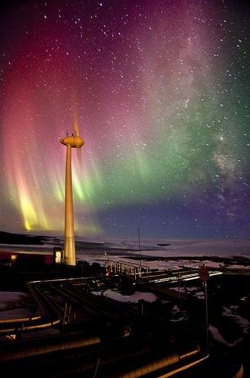
Blown Away. Auroas over Mawson Station. Photo by Chris Wilson.
The Extreme environment photographic exhibition opened today at Tasmanian Museum Art Gallery in Hobart as part of the Antarctic Centennial Year (ACY) celebrations. It’s well worth a look –there are some great photos, including some by ANARE expeditioners and Club members.
Sir Guy Green, in his role as honorary Antarctic Ambassador, in conjunction with Tas environment minister David O’ Byrne, today opened the exhibition, which displays 20 images taken by enthusiasts vying for one of the richest prizes for a single image in a photographic competition.
This year’s competition also features an online viewing and voting system to help determine the popular people’s choice prize.
The photographic exhibition is open to the public at the Commissariat at the Tasmanian Museum and Art Gallery until 15 May. Admission is free. There are some great images. My only criticism is that the reproduced images are relatively small, and the majority would display best n a larger format. Also the length of the exhibition is quite short.
Members of the public can vote for the people’s choice prize online at the ABC Hobart website. I would suggest that you click the ‘switch to big picture mode’ tab to make viewing easier. To vote, simply login and leave a comment below, naming the image and photographer you like best. Online voting closes 3pm Friday 13 May.
Ingrid McGaughey provided the criticisms!
posted 6/5/2011
Sir Guy Green, in his role as honorary Antarctic Ambassador, in conjunction with Tas environment minister David O’ Byrne, today opened the exhibition, which displays 20 images taken by enthusiasts vying for one of the richest prizes for a single image in a photographic competition.
This year’s competition also features an online viewing and voting system to help determine the popular people’s choice prize.
The photographic exhibition is open to the public at the Commissariat at the Tasmanian Museum and Art Gallery until 15 May. Admission is free. There are some great images. My only criticism is that the reproduced images are relatively small, and the majority would display best n a larger format. Also the length of the exhibition is quite short.
Members of the public can vote for the people’s choice prize online at the ABC Hobart website. I would suggest that you click the ‘switch to big picture mode’ tab to make viewing easier. To vote, simply login and leave a comment below, naming the image and photographer you like best. Online voting closes 3pm Friday 13 May.
Ingrid McGaughey provided the criticisms!
posted 6/5/2011
Invite to media launch of Antarctic Centennial Year (ACY)
The ANARE Club has been invited to attend the Official Media Launch of the Antarctic Centennial Year by David O’Byrne, MP, Minister for Economic Development and for Innovation, Science and Technology at the Tasmanian Museum and Art Gallery at 10:00 am on Friday, 6 May, 2011.
The launch will be held at the Extreme Environment Photographic Exhibition, the first public event of the ACY.
RSVP to Business Point on [email protected] or by COB Tuesday 3 May 2011
Call for volunteers for Tasmanian ACY events
A message from Paul Cullen, Cultural Events Manager, Antarctic Tasmania (Tas govt organisation)
You are cordially invited to an information session on the Antarctic Centennial Year (ACY). This special year will comprise a very exciting program of events, including major international conferences, exhibitions, public events, social gatherings and educational activities. Please, see the attachment for further information about the ACY and how you can be involved.
If you are interested in volunteering, please come along to a meeting here at Antarctic Tasmania, Science and Research office on Wednesday, 27 April at 5:00 pm. You’ll find us at Level 2, 25-26 Salamanca Square, directly above the Salamanca Bakehouse. For details, email [email protected] or call .
Kind regards,
Paul Cullen
Cultural Events Manager, Antarctic Tasmania
ANARE Club Oral History update
Formal interviewing has commenced. To date 7 interviews have been completed. The quality of the recordings is excellent, and better than standard ‘broadcast quality’. We are not transcribing currently as this would take considerable time and resources. Our aim is to get a number of recordings done as quickly as possible by myself and others–at least 50 Tasmanian based members over the next 12 months, and members in other states on an opportunistic basis. Some members have alerted me they are travelling to Tasmania in coming months, others we will visit when we are interstate.
Requests for future loan of the ANARE Club recording equipment for ANARE Club oral history projects should be directed to the ANARE Club secretary.
Ingrid McGaughey
posted 25/2/2011
Co-ordinator ANARE Club oral history project
Oral History Workshop in Tasmania Jan 2011
The Tas branch of the ANARE Club is funding an oral history workshop. The workshop will be held in Hobart on Saturday 8th January 2011, and is open to all ANARE Club members at no cost.
Ms Susan Gordon Brown, who has being photographing and interviewing a selection of Victorian ANARE tradespeople from 1950-1980 for a nationwide exhibition, will be our guest presenter. Read more...
New Tas Branch Council Elected
President: Michael Carr
Treasurer: Noel Barrett
Social Secretary: Michael Ooyendyk
Webmaster: Ian Mclean
Expeditioner Liaison: Marilyn Boydell
Representative for the North: Peter Cutler
For photos and bios see here...
Phil Law's Final Wishes
The Australian Antarctic Division has offered to transport the ashes of Phillip Garth Law and his wife Nel to Mawson Station in accordance with Phil’s wishes as stated in his last will and testament.
‘...My ashes and those of my said late wife are to be transported to Mawson Station in Antarctica on the A.N.A.R.E. relief ship and are to be interred on the West Arm of Horseshoe Harbour at Mawson beneath a cairn of stones near the graves of other A.N.A.R.E. men already resting there. An appropriate headstone of Mawson rock is to be erected there on which is to be affixed a bronze plaque carrying the following inscription:
Here lie the ashes of
Nellie Isabel Law 1914-1990
and
Phillip Garth Law 1912-2010
Of Melbourne, Victoria, Australia
Phil and Nel Law’s ashes are to be taken to Mawson station on Voyage 3 in January 2011. The Australian Antarctic Division has kindly offered that the 2010/11 ANARE Club berth representative is present on this voyage to escort Nell and Phil Law to their final resting place. This gesture is much appreciated by the ANARE Club.
Further information on the ANARE Club berth is available here.
Link to Phil Law Tribute Page is available here.
.
Birds caught up in island rabbit cull
ABC News Report 26th August 2010.
It has been revealed about 300 native birds were poisoned during a pest eradication program on sub-Antarctic Macquarie Island.
Parks and Wildlife Officers travelled to the island in May for a three-month baiting program to eradicate rabbits, rats and mice.
However, poor weather conditions hampered baiting efforts and the team had to leave early.
The project manager Keith Springer says about eight per cent of the planned baits were laid.
He says while it made a dent in rodent numbers, some native bird species were affected.
"The main ones were kelp gulls but we did expect that they would take some bait," he said.
"We expected a small number of ducks to take bait, and while a small number did, it was less than we expected.
Mr Springer says officers will return to the island to complete the program in April.
(AAP: Tasmanian National Parks Association)
2010 Antarctic Winter Film Festival

McMurdo Station recently organised and hosted the 3rd Winter Film Festival. The festival is based around submission of short films ranging anywhere from 5 seconds to a maximum of 5 minutes. Anyone, on any station who is currently wintering in Antarctica is eligible to submit a film.
There are 2 categories: open and 48 hours.
The open film is filmed and edited in Antarctica, (anytime, anywhere) and usually (but not always) includes some reference to Antarctica.
The ’48 hour’ section is a bit more demanding –and often more creative. Each station has 48 hours to design, cast, record, edit and submit a film of 5 minutes or less. In addition 5 elements need to be included in the film. These are announced on the Friday night, and all entries must be uploaded or received at McMurdo Station by 11.59 pm on Sunday night.
This year the 5 elements were:
In the first year (2008) 8 stations submitted films. This year 21 stations representing 11 countries participated. Each of the Australian stations submitted at least one entry.
So far I have only seen the 48 hour entry from Davis, and it is very funny. The footage of the station leader (Alison) mopping the ice is priceless, and probably will get a bit more airplay yet. Congratulations to Nick Roden who was the main instigator, director and producer of the Davis effort.
The link is: http://www.youtube.com/watch?v=0CvlfHhCmg8
I suggest you let it load up first (e.g. leave on pause) before viewing.
We are still chasing links to other films from the 2010 Winter Film Festival. If anyone knows of any that have been posted on the net please email us.
There are 2 categories: open and 48 hours.
The open film is filmed and edited in Antarctica, (anytime, anywhere) and usually (but not always) includes some reference to Antarctica.
The ’48 hour’ section is a bit more demanding –and often more creative. Each station has 48 hours to design, cast, record, edit and submit a film of 5 minutes or less. In addition 5 elements need to be included in the film. These are announced on the Friday night, and all entries must be uploaded or received at McMurdo Station by 11.59 pm on Sunday night.
This year the 5 elements were:
- Character: A grumpy diesel mechanic
- Line of Dialogue: Has anybody seen my chicken?
- Sound Effect: Sound of a siren
- Prop: Mop
- Prop: Bottle of mouthwash
In the first year (2008) 8 stations submitted films. This year 21 stations representing 11 countries participated. Each of the Australian stations submitted at least one entry.
So far I have only seen the 48 hour entry from Davis, and it is very funny. The footage of the station leader (Alison) mopping the ice is priceless, and probably will get a bit more airplay yet. Congratulations to Nick Roden who was the main instigator, director and producer of the Davis effort.
The link is: http://www.youtube.com/watch?v=0CvlfHhCmg8
I suggest you let it load up first (e.g. leave on pause) before viewing.
We are still chasing links to other films from the 2010 Winter Film Festival. If anyone knows of any that have been posted on the net please email us.
More on the Antarctic Winter Film Festival
We have since heard that Nick Roden’s Davis entry won ‘best film’ and ‘best cinematography’ in the 48 hour film section.
Other winners were:
Best Acting: Camembert Man by Crozet Station (France)
Best Screenplay: From Rothera with Love by Rothera Station (United Kingdom)
Best use of elements: Mission Unmoppable by King Edward Point (United Kingdom)
I am also a big fan of Mawson’s entry in the 48hour category. Called ‘The Little Things”, it’s link is: http://www.youtube.com/watch?v=cpE5pNr5HyM
The films can be viewed at:
http://cid-143586e833b2f7ce.office.live.com/browse.aspx/2010%20Winter%20Film%20Festival
A warning...there is a wide variety of offerings. Some are excellent, some are just weird!
In the open film section Macquarie Islands ‘The expeditioners strike back” was awarded second place. The link is: http://www.youtube.com/watch?v=1qmN-6HVGjE
Mike ‘Zoopy’ Zupanc from Davis entered in some beautiful footage of Auroras in the open film category and was came 3rd in this category. The link is: http://www.youtube.com/watch?v=KxTkP7d1A_Y
Enjoy!!
Other winners were:
Best Acting: Camembert Man by Crozet Station (France)
Best Screenplay: From Rothera with Love by Rothera Station (United Kingdom)
Best use of elements: Mission Unmoppable by King Edward Point (United Kingdom)
I am also a big fan of Mawson’s entry in the 48hour category. Called ‘The Little Things”, it’s link is: http://www.youtube.com/watch?v=cpE5pNr5HyM
The films can be viewed at:
http://cid-143586e833b2f7ce.office.live.com/browse.aspx/2010%20Winter%20Film%20Festival
A warning...there is a wide variety of offerings. Some are excellent, some are just weird!
In the open film section Macquarie Islands ‘The expeditioners strike back” was awarded second place. The link is: http://www.youtube.com/watch?v=1qmN-6HVGjE
Mike ‘Zoopy’ Zupanc from Davis entered in some beautiful footage of Auroras in the open film category and was came 3rd in this category. The link is: http://www.youtube.com/watch?v=KxTkP7d1A_Y
Enjoy!!
Bad weather halts Macquarie Island rabbit cull
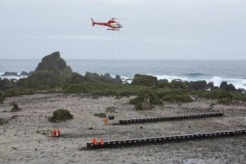
Helicopter collecting bait pods. Photo by K. Springer
The Tasmanian Government has been forced to shut down its pest eradication program on Macquarie Island due to bad weather. Frequent strong winds have prevented Parks and Wildlife staff from using helicopters to distribute poisoned bait across the island which lies about 1,500 kilometres south-west of Tasmania.
The $24.6 million project, jointly funded by the Tasmanian and Federal Governments, was designed to eradicate rabbits and rodents which are threatening the island's native wildlife.
Tasmania's Environment Minister, David O'Byrne, says the Government remains committed to the project but will need to revise its plans.
Ref ABC news website 23rd July 2010
The $24.6 million project, jointly funded by the Tasmanian and Federal Governments, was designed to eradicate rabbits and rodents which are threatening the island's native wildlife.
Tasmania's Environment Minister, David O'Byrne, says the Government remains committed to the project but will need to revise its plans.
Ref ABC news website 23rd July 2010
Eureka prize for sciene photography
Each year the Australian Museum and New Scientist journal host the Eureka Prize for science photography.
This year Mitch Hollier and Gary Miller have been listed amongst the best entries. Direct links to their photographs taken at Davis and near Macey at Mawson are listed below, but it is worth scrolling through all 20 photographs on display –they are fantastic.
Mitch - Davis -Helicopter and Aurora shot night. 2009
Whilst researching the effects of elevated CO2 on marine algae at Davis Base, Antarctica, the Aurora Australis bathed us in all its splendour one night in early 2009. The photo illustrates the nature of science in an extreme environment; extreme in both its remoteness and its beauty. There was no manipulation of the photo.
http://www.news.com.au/technology/gallery-e6frflwi-1225897848656?page=14
Gary Miller - Pics from Mawson of Emps. - 2008/2009
While studying emperor penguins over winter at Auster colony near Mawson Station, Antarctica, we discovered that in the second month of incubation the males would walk 1-2 kms to relocate. Each male carries his egg on his feet and their mates are not due back from their foraging for another 3-4 weeks. It is not clear why they move; perhaps a nearby iceberg shifted, or they want cleaner snow, but it is surprising how readily over a thousand males will walk with their eggs. I adjusted the levels and boosted the saturation slightly, and removed a figure in the distance.
http://www.news.com.au/technology/gallery-e6frflwi-1225897848656?page=17



